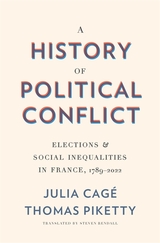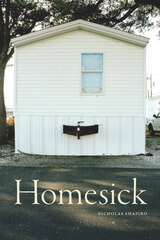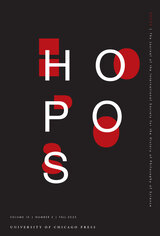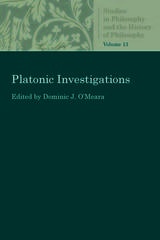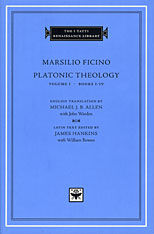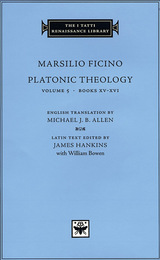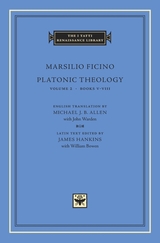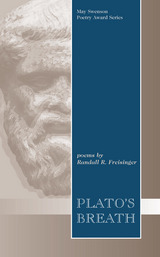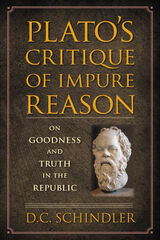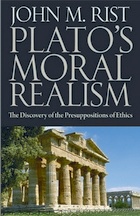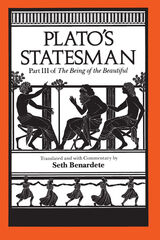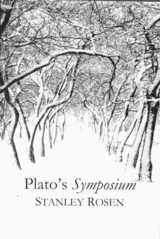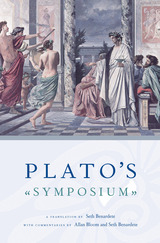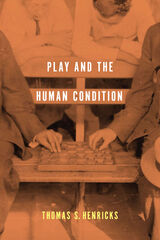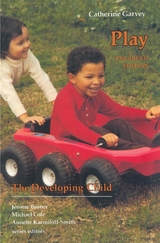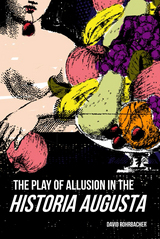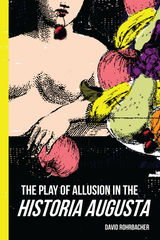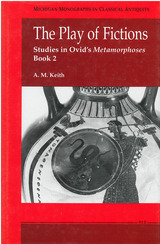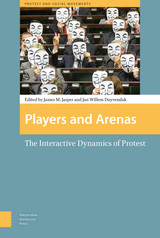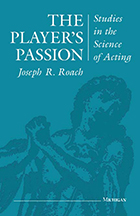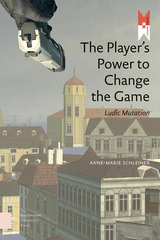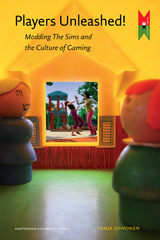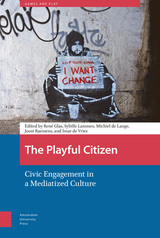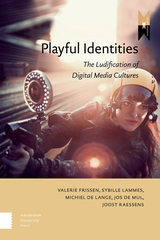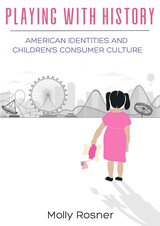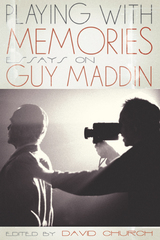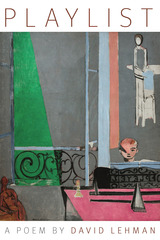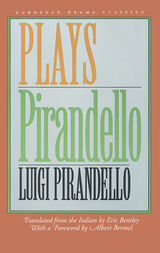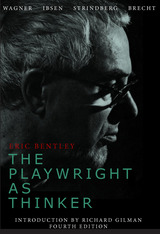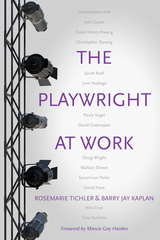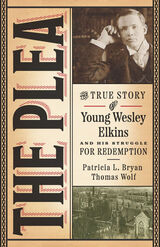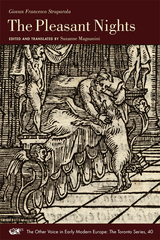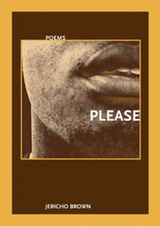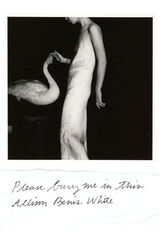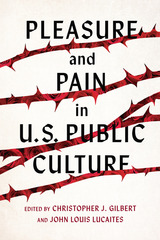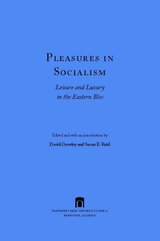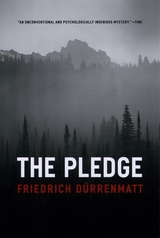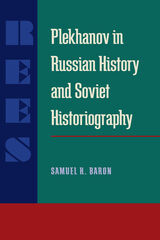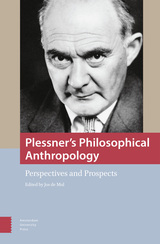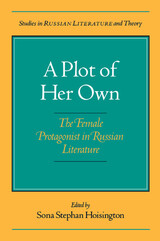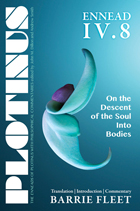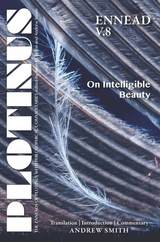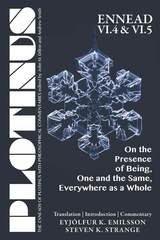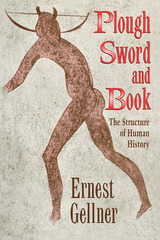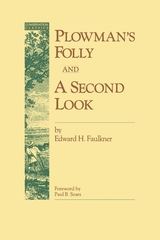 Plato as Critical Theorist
Jonny Thakkar
Harvard University Press, 2018 What is the best possible society? How would its rulers govern and its citizens behave? Such questions are sometimes dismissed as distractions from genuine political problems, but in an era when political idealism seems a relic of the past, says Jonny Thakkar, they are more urgent than ever. A daring experiment in using ancient philosophy to breathe life into our political present, Plato as Critical Theorist takes seriously one of Plato’s central claims: that philosophers should rule. What many accounts miss is the intimate connection between Plato’s politics and his metaphysics, Thakkar argues. Philosophy is the activity of articulating how parts and wholes best fit together, while ruling is the activity that shapes the parts of society into a coherent whole conducive to the good life. Plato’s ideal society is thus one in which ideal theory itself plays a leading role.
Today’s liberal democracies require not philosopher-kings legislating from above but philosopher-citizens willing to work toward a vision of the best society in their daily lives. Against the claim that such idealism is inherently illiberal, Thakkar shows that it is fully compatible with the liberal theories of both Popper and Rawls while nevertheless pushing beyond them in providing a new vantage point for the Marxian critique of capitalism.
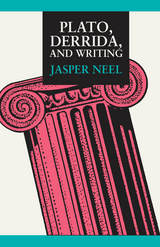 Plato, Derrida, and Writing
Jasper Neel
Southern Illinois University Press, 1988 Winner, Mina P. Shaughnessy Prize
Achieving the remarkable feat of linking composition theory, deconstruction, and classical rhetoric, this book has been admirably summarized by the theorist G. Douglas Atkins, who writes: "This lively and engaging, informed and informative book constitutes an important contribution. Though its ‘field’ is most obviously composition, composition theory, and pedagogy, part of its importance derives from the way it transcends disciplinary boundaries to bear on writing in general. . . I know of no book that so fully and well discusses, and evaluates, the implications of deconstruction for composition and pedagogy. That [it] goes ‘beyond deconstruction,’ rather than merely ‘applying’ it, increases its importance and signals a clear contribution to the understanding of writing." Jasper Neel analyzes the emerging field of composition studies within the epistemological and ontological debate over writing precipitated by Plato, who would have us abandon writing entirely, and continued by Derrida, who argues that all human beings are written. This book offers a three-part exploration of that debate. In the first part, a deconstructive reading of Plato’s Phaedrus, Neel shows the elaborate sleight-of-hand that Plato must employ as he uses writing to engage in a semblance of spoken dialogue. The second part describes Derrida’s theory of writing and presents his famous argument that "the history of truth, of the truth of truth, has always been. . .the debasement of writing, and its repression outside full speech." A lexicon of nine Derridean terms, the key to his theory of writing, is also included. At the end of this section, Neel turns deconstruction against itself, demonstrating that Derridean analysis collapses of its own weight. The concluding section of the book juxtaposes the implications of Platonic and Derridean views of writing, warning that Derrida’s approach may lock writing inside philosophy. The conclusion suggests that writing may be liberated from philosophical judgment by turning to Derrida’s predecessors, the sophists, particularly Protagoras and Gorgias. Drawing on Protagoras’s idea of strong discourse, Neel shows that sophistry is the foundation of democracy: "Strong discourse is public discourse, which, though based on probability and not truth, remains persuasive over a long period of time to a great number of people. This publicly tested discourse exists only among competitors, never alone, but its ability to remain persuasive even when surrounded by other discourses enables the ideas of democracy to emerge and then keeps democracy alive."
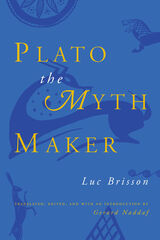 Plato the Myth Maker
Luc Brisson
University of Chicago Press, 1999 The word myth is commonly thought to mean a fictional story, but few know that Plato was the first to use the term muthos in that sense. He also used muthos to describe the practice of making and telling stories, the oral transmission of all that a community keeps in its collective memory. In the first part of Plato the Myth Maker, Luc Brisson reconstructs Plato's multifaceted description of muthos in light of the latter's Atlantis story. The second part of the book contrasts this sense of myth with another form of speech that Plato believed was far superior: the logos of philosophy.
Gerard Naddaf's substantial introduction shows the originality and importance both of Brisson's method and of Plato's analysis and places it in the context of contemporary debates over the origin and evolution of the oral tradition.
"[Brisson] contrasts muthos with the logos found at the heart of the philosophical reading. [He] does an excellent job of analyzing Plato's use of the two speech forms, and the translator's introduction does considerable service in setting the tone."—Library Journal
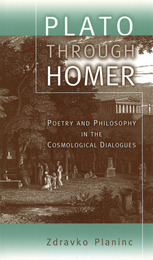 Plato through Homer: Poetry and Philosophy in the Cosmological Dialogues
Zdravko Planinc
University of Missouri Press, 2003
This new study challenges traditional ways of reading Plato by showing that his philosophy and political theory cannot be understood apart from a consideration of the literary or aesthetic features of his writing. More specifically, it shows how Plato’s well-known cosmological dialogues—the Phaedrus, Timaeus, and Critias—are structured using several books of the Odyssey as their shared source text.
While there has recently been much scholarly discussion of the relation between poetry and philosophy in Plato’s dialogues, little of it addresses questions central to thoroughgoing literary criticism. Planinc’s work is unique in that it shows the significance of Plato’s extensive refiguring of key episodes in the Odyssey for an interpretation of his political philosophy.
Plato’s cosmological dialogues are almost always discussed topically. The Timaeus is picked through for its theological or scientific doctrines; the Critias is reduced to its Atlantis story, or puzzled over because of its ostensible incompleteness; and the Phaedrus is read for its parallels to modern understandings of erotics or rhetoric. The dialogues are not usually considered in relation to one another, and then only in the context of developmental schemes primarily concerned with distinguishing periods in Plato’s metaphysical doctrines.
Planinc argues that the main literary features of the Phaedrus,Timaeus, and Critias are taken from books 6 to 9 of the Odyssey, the largest part of the story of Odysseus’s stay with the Phaeacians, from the time he swims to shore and encounters Nausicaa to the time he reveals his identity and begins recounting his earlier travels after hearing Demodocus’s songs. By exploring the full range of the many charming and intriguing things the dialogues present in this literary context, he shows that they are a coherent, unified part of Plato’s corpus.
Plato through Homer takes a radically new approach to Plato’s texts that illuminates their literary and philosophic significance and highlights their enduring appeal.
Platonic Investigations
Dominic J. O'Meara
Catholic University of America Press, 2018 This collection of papers is devoted to the significance of particular formal and literary aspects of the Platonic dialogues.
Platonic Theology
Marsilio FicinoEnglish translation by Michael J. B. Allen with John Warden Latin text edited by James Hankins with William Bowen
Harvard University Press, 2001 The Platonic Theology is a visionary work and the philosophical masterpiece of Marsilio Ficino (1433-1499), the Florentine scholar-philosopher-magus who was largely responsible for the Renaissance revival of Plato.
A student of the Neoplatonic schools of Plotinus and Proclus, he was committed to reconciling Platonism with Christianity, in the hope that such a reconciliation would initiate a spiritual revival and return of the golden age. His Platonic evangelizing was eminently successful and widely influential, and his Platonic Theology, translated into English for the first time in this edition, is one of the keys to understanding the art, thought, culture, and spirituality of the Renaissance.
Platonic Theology
Marsilio FicinoEnglish translation by Michael. J. B. AllenLatin text edited by James Hankins with William Bowen
Harvard University Press, 2005 The Platonic Theology is a visionary work and the philosophical masterpiece of Marsilio Ficino (1433-1499), the Florentine scholar-philosopher-magus who was largely responsible for the Renaissance revival of Plato. A student of the Neoplatonic schools of Plotinus and Proclus, he was committed to reconciling Platonism with Christianity, in the hope that such a reconciliation would initiate a spiritual revival and return of the golden age. His Platonic evangelizing was eminently successful and widely influential, and his Platonic Theology, translated into English for the first time in this edition, is one of the keys to understanding the art, thought, culture, and spirituality of the Renaissance.
This is the fifth of a projected six volumes.
Platonic Theology
Marsilio FicinoEnglish translation by Michael J. B. AllenLatin text edited by James Hankins with William Bowen
Harvard University Press, 2001 The Platonic Theology is a visionary work and the philosophical masterpiece of Marsilio Ficino (1433-1499), the Florentine scholar-philosopher-magus who was largely responsible for the Renaissance revival of Plato. A student of the Neoplatonic schools of Plotinus and Proclus, he was committed to reconciling Platonism with Christianity, in the hope that such a reconciliation would initiate a spiritual revival and return of the golden age. His Platonic evangelizing was eminently successful and widely influential, and his Platonic Theology, translated into English for the first time in this edition, is one of the keys to understanding the art, thought, culture, and spirituality of the Renaissance.This is the fourth of a projected six volumes.
Platonic Theology
Marsilio FicinoEnglish translation by Michael J. B. Allen with John WardenLatin text edited by James Hankins with William Bowen
Harvard University Press The Platonic Theology is a visionary work and the philosophical masterpiece of Marsilio Ficino (1433-1499), the Florentine scholar-philosopher-magus who was largely responsible for the Renaissance revival of Plato.
A student of the Neoplatonic schools of Plotinus and Proclus, he was committed to reconciling Platonism with Christianity, in the hope that such a reconciliation would initiate a spiritual revival and return of the golden age. His Platonic evangelizing was eminently successful and widely influential, and his Platonic Theology, translated into English for the first time in this edition, is one of the keys to understanding the art, thought, culture, and spirituality of the Renaissance.
Platonic Theology
Marsilio FicinoEnglish translation by Michael J. B. Allen with John WardenLatin text edited by James Hankins with William Bowen
Harvard University Press, 2001 The Platonic Theology is a visionary work and the philosophical masterpiece of Marsilio Ficino (1433–1499), the Florentine scholar-philosopher-magus who was largely responsible for the Renaissance revival of Plato.
A student of the Neoplatonic schools of Plotinus and Proclus, he was committed to reconciling Platonism with Christianity, in the hope that such a reconciliation would initiate a spiritual revival and return of the golden age. His Platonic evangelizing was eminently successful and widely influential, and his Platonic Theology, translated into English for the first time in this edition, is one of the keys to understanding the art, thought, culture, and spirituality of the Renaissance.
Platonic Theology
Marsilio FicinoEnglish translation by Michael. J. B. AllenLatin text edited by James Hankins with William Bowen
Harvard University Press, 2001 The Platonic Theology is a visionary work and the philosophical masterpiece of Marsilio Ficino (1433-1499), the Florentine scholar-philosopher-magus who was largely responsible for the Renaissance revival of Plato. A student of the Neoplatonic schools of Plotinus and Proclus, he was committed to reconciling Platonism with Christianity, in the hope that such a reconciliation would initiate a spiritual revival and return of the golden age. His Platonic evangelizing was eminently successful and widely influential, and his Platonic Theology, translated into English for the first time in this edition, is one of the keys to understanding the art, thought, culture, and spirituality of the Renaissance.
This sixth and final volume of the I Tatti Renaissance Library edition includes comprehensive indexes to the whole work.
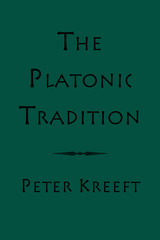 The Platonic Tradition
Peter Kreeft
St. Augustine's Press, 2016 The Platonic tradition in Western philosophy is not just one of many equally central traditions. It is so much THE central one that the very existence and survival of Western civilization depends on it. It is like the Confucian tradition in Chinese culture, or the monotheistic tradition in religion, or the human rights tradition in politics.
In the first of his eight lectures, Peter Kreeft defines Platonism and its “Big Idea,” the idea of a transcendent reality that the history of philosophy has labeled “Platonic Ideas” or Platonic Forms. In the second lecture, he briefly explores Plato’s two basic predecessors or sources, myth and Socrates; and then looks at 12 applications of the Forms in Plato’s own dialogues. The third lecture covers the three most important modifications or additions to Plato himself in the Platonic tradition: Aristotle, Plotinus, and Augustine, each of whom gave the Forms a new metaphysical address. The fourth lecture explores six Christian Platonists, three in the New Testament and three philosophers, Justin Martyr, Bonaventure, and Aquinas.
The next three lectures explore the consequences of the modern abandoning of Platonism, beginning with William of Ockham’s Nominalism, as the source of nearly all modern philosophical errors, and its results in the Empiricism of Locke and Hume, the so-called Copernican Revolution in philosophy in Kant, the so-called “analytic philosophy,” which still dominates English and American philosophy departments. In the sixth essays, Kreeft looks at 13 influential kinds of positivism or reductionism in modern thought: in method, history, metaphysics, epistemology, ethics, sociology, politics, logics, linguistics, sex, psychology, and theology, exemplified by Descartes, Machiavelli, Hobbes, Marx, Kant, Comte, Rousseau, Rawls, Ayer, Derrida, Freud, Skimmer, Nietzsche, and Sartre. Lecture 7 looks at the results of abandoning the Platonic tradition in ethics, the values vacuum, or nihilism, in Ecclesiastes, Pascal, Kierkegaard, Nietzsche, Heidegger, Sartre, Dostoyevsky, Tolstoi, Marcel, and Buber. In the last lecture, Kreeft looks at some experiential evidence for Platonism, doors out of the cave that are still open, signals of transcendence.
Plato's Breath
Randall R. Freisinger
Utah State University Press, 1997 Freisinger's new poetry collection is inhabited alike by bright, tangible images and thoughtful, intricate meditations. Pumpkins, poultry houses, sperm tests, a vacuum cleaner salesman, a father's damaged brain, an anatomist's tools, a baby falling from a fourth-story window-all of these come to the page distinct and palpable. At the same time, the work finds a central inspiration in theoretical work like Jeremy Rifkin's social criticism. Poetry of both the mind and the heart, Plato's Breath embraces the power of imagination to transform the ordinary into an extraordinary affirmation of life.
Plato’s Counterfeit Sophists
Håkan Tell
Harvard University Press, 2011 This book explores the place of the sophists within the Greek wisdom tradition, and argues against their almost universal exclusion from serious intellectual traditions. By studying the sophists against the backdrop of the archaic Greek institutions of wisdom, it is possible to detect considerable intellectual overlap between them and their predecessors. This book explores the continuity of this tradition, suggesting that the sophists’ intellectual balkanization in modern scholarship, particularly their low standing in comparison to the Presocratics, Platonists, and Aristotelians, is a direct result of Plato’s condemnation of them and their practices. This book thus seeks to offer a revised history of the development of Greek philosophy, as well as of the potential—yet never realized—courses it might have followed.
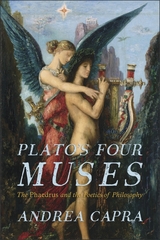 Plato’s Four Muses: The Phaedrus and the Poetics of Philosophy
Andrea Capra
Harvard University Press, 2014 Plato’s Four Muses reconstructs Plato’s authorial self-portrait through a fresh reading of the Phaedrus, with an Introduction and Conclusion that contextualize the construction more broadly. The Phaedrus, it is argued, is Plato’s most self-referential dialogue, and Plato’s reference to four Muses in Phaedrus 259c–d is read as a hint at the “ingredients” of philosophical discourse, which turns out to be a form of provocatively old-fashioned mousikê.
Andrea Capra maintains that Socrates’s conversion to “demotic”—as opposed to metaphorical—music in the Phaedo closely parallels the Phaedrus and is apologetic in character, since Socrates was held responsible for dismissing traditional mousikê. This parallelism reveals three surprising features that define Plato’s works: first, a measure of anti-intellectualism (Plato counters the rationalistic excesses of other forms of discourse, thus distinguishing it from both prose and poetry); second, a new beginning for philosophy (Plato conceptualizes the birth of Socratic dialogue in, and against, the Pythagorean tradition, with an emphasis on the new role of writing); and finally, a self-consciously ambivalent attitude with respect to the social function of the dialogues, which are conceived both as a kind of “resistance literature” and as a preliminary move toward the new poetry of the Kallipolis.
 Plato’s Symposium: Issues in Interpretation and Reception
James H. Lesher
Harvard University Press, 2006 In his Symposium, Plato crafted a set of speeches in praise of love that has influenced writers and artists from antiquity to the present. Early Christian writers read the dialogue's 'ascent passage' as a vision of the soul's journey to heaven. Ficino's commentary on the Symposium inspired poets and artists throughout Renaissance Europe and introduced 'a Platonic love' into common speech. Themes or images from the dialogue have appeared in paintings or sketches by Rubens, David, Feuerbach, and La Farge, as well as in musical compositions by Satie and Bernstein. The dialogue's view of love as 'desire for eternal possession of the good' is still of enormous philosophical interest in its own right. Nevertheless, questions remain concerning the meaning of specific features, the significance of the dialogue as a whole, and the character of its influence. This volume brings together an international team of scholars to address such questions.
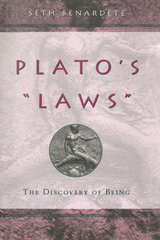 Plato's "Laws": The Discovery of Being
Seth Benardete
University of Chicago Press, 2001 An insightful commentary on Plato’s Laws, his complex final work. The Laws was Plato’s last work, his longest, and one of his most difficult. In contrast to the Republic, which presents an abstract ideal, the Laws appears to provide practical guidelines for the establishment and maintenance of political order in the real world. Classicist Seth Benardete offers a rich analysis of each of the twelve books of the Laws, which illuminates Plato’s major themes and arguments concerning theology, the soul, justice, and education. Most importantly, Benardete shows how music in a broad sense, including drama, epic poetry, and even puppetry, mediates between reason and the city in Plato’s philosophy of law. Benardete also uncovers the work’s concealed ontological dimension, explaining why it is hidden and how it can be brought to light. In establishing the coherence and underlying organization of Plato’s last dialogue, Benardete makes a significant contribution to Platonic studies.
Plato's Literary Garden: How to Read a Platonic Dialogue
Kenneth M. Sayre
University of Notre Dame Press, 1995 Plato's dialogues are universally acknowledged as standing among the masterworks of the Western philosophic tradition. What most readers do not know, however, is that Plato also authored a public letter in which he unequivocally denies ever having written a work of philosophy. If Plato did not view his written dialogues as works of philosophy, how did he conceive them, and how should readers view them? In Plato's Literary Garden, Kenneth M. Sayre brings over thirty years of Platonic scholarship to bear on these questions, arguing that Plato did not intend the dialogues to serve as repositories of philosophic doctrine, but instead composed them as teaching instruments.
Plato's Moral Realism: The Discovery of the Presuppositions of Ethics
John M. Rist
Catholic University of America Press, 2012 Surveying many of Plato's dialogues from the early, middle, and late periods, prominent philosopher John M. Rist shows how Plato gradually came to realize the need for metaphysics to support his ethical position and that a rigorous ethics required a secure metaphysics grounded in universal values.
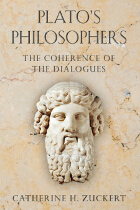 Plato's Philosophers: The Coherence of the Dialogues
Catherine H. Zuckert
University of Chicago Press, 2009 Faced with the difficult task of discerning Plato’s true ideas from the contradictory voices he used to express them, scholars have never fully made sense of the many incompatibilities within and between the dialogues. In the magisterial Plato’s Philosophers, Catherine Zuckert explains for the first time how these prose dramas cohere to reveal a comprehensive Platonic understanding of philosophy. To expose this coherence, Zuckert examines the dialogues not in their supposed order of composition but according to the dramatic order in which Plato indicates they took place. This unconventional arrangement lays bare a narrative of the rise, development, and limitations of Socratic philosophy. In the drama’s earliest dialogues, for example, non-Socratic philosophers introduce the political and philosophical problems to which Socrates tries to respond. A second dramatic group shows how Socrates develops his distinctive philosophical style. And, finally, the later dialogues feature interlocutors who reveal his philosophy’s limitations. Despite these limitations, Zuckert concludes, Plato made Socrates the dialogues’ central figure because Socrates raises the fundamental human question: what is the best way to live? Plato’s dramatization of Socratic imperfections suggests, moreover, that he recognized the apparently unbridgeable gap between our understandings of human life and the nonhuman world. At a time when this gap continues to raise questions—about the division between sciences and the humanities and the potentially dehumanizing effects of scientific progress—Zuckert’s brilliant interpretation of the entire Platonic corpus offers genuinely new insights into worlds past and present.
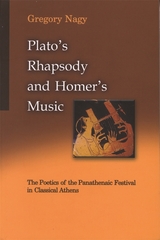 Plato's Rhapsody and Homer's Music: The Poetics of the Panathenaic Festival in Classical Athens
Gregory Nagy
Harvard University Press The festival of the Panathenaia, held in Athens every summer to celebrate the birthday of the city's goddess, Athena, was the setting for performances of the Homeric Iliad and Odyssey by professional reciters or "rhapsodes." The works of Plato are our main surviving source of information about these performances. Through his references, a crucial phase in the history of the Homeric tradition can be reconstructed. Through Plato's eyes, the "staging" of Homer in classical Athens can once again become a virtual reality.
This book examines the overall testimony of Plato as an expert about the cultural legacy of these Homeric performances. Plato's fine ear for language—in this case the technical language of high-class artisans like rhapsodes—picks up on a variety of authentic expressions that echo the talk of rhapsodes as they once practiced their art.
Highlighted among the works of Plato are the Ion, the Timaeus, and the Critias. Some experts who study the Timaeus have suggested that Plato must have intended this masterpiece, described by his characters as a humnos, to be a tribute to Athena. The metaphor of weaving, implicit in humnos and explicit in the peplos or robe that was offered to the goddess at the Panathenaia, applies also to Homeric poetry: it too was pictured as a humnos, destined for eternal re-weaving on the festive occasion of Athena's eternally self-renewing birthday.
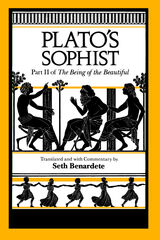 Plato's Sophist: Part II of The Being of the Beautiful
Plato
University of Chicago Press, 1986 Theaetetus, the Sophist, and the Statesman are a trilogy of Platonic dialogues that show Socrates formulating his conception of philosophy as he prepares the defense for his trial. Originally published together as The Being of the Beautiful, these translations can be read separately or as a trilogy. Each includes an introduction, extensive notes, and comprehensive commentary that examines the trilogy's motifs and relationships.
"Seth Benardete is one of the very few contemporary classicists who combine the highest philological competence with a subtlety and taste that approximate that of the ancients. At the same time, he as set himself the entirely modern hermeneutical task of uncovering what the ancients preferred to keep veiled, of making explicit what they indicated, and hence...of showing the naked ugliness of artificial beauty."—Stanley Rose, Graduate Faculty Philosophy Journal
Seth Benardete (1930-2001) was professor of classics at New York University. He was the author or translator of many books, most recently The Argument of the Action, Plato's "Laws," and Plato's "Symposium," all published by the University of Chicago Press.
Plato's Statesman: Part III of The Being of the Beautiful
Plato
University of Chicago Press, 1986 Three classic Platonic dialogues in the most authoritative translation available
Theaetetus is the first of a trilogy of Platonic dialogues that show Socrates formulating his conception of philosophy as he prepares the defense for his trial. This translation is particularly faithful to the original Greek, and it is accompanied by an introduction, extensive notes, and comprehensive commentary that puts the dialogue in context with Plato's thought and its influence over the centuries.
Seth Benardete (1930-2001) was professor of classics at New York University.
Plato's Symposium: A Translation by Seth Benardete with Commentaries by Allan Bloom and Seth Benardete
Plato
University of Chicago Press, 2001 Plato, Allan Bloom wrote, is "the most erotic of philosophers," and his Symposium is one of the greatest works on the nature of love ever written. This new edition brings together the English translation of the renowned Plato scholar and translator, Seth Benardete, with two illuminating commentaries on it: Benardete's "On Plato's Symposium" and Allan Bloom's provocative essay, "The Ladder of Love." In the Symposium, Plato recounts a drinking party following an evening meal, where the guests include the poet Aristophanes, the drunken Alcibiades, and, of course, the wise Socrates. The revelers give their views on the timeless topics of love and desire, all the while addressing many of the major themes of Platonic philosophy: the relationship of philosophy and poetry, the good, and the beautiful.
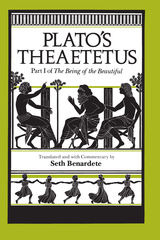 Plato's Theaetetus: Part I of The Being of the Beautiful
Plato
University of Chicago Press, 1986 Theaetetus, the Sophist, and the Statesman are a trilogy of Platonic dialogues that show Socrates formulating his conception of philosophy as he prepares the defense for his trial. Originally published together as The Being of the Beautiful, these translations can be read separately or as a trilogy. Each includes an introduction, extensive notes, and comprehensive commentary that examines the trilogy's motifs and relationships.
"Seth Benardete is one of the very few contemporary classicists who combine the highest philological competence with a subtlety and taste that approximate that of the ancients. At the same time, he as set himself the entirely modern hermeneutical task of uncovering what the ancients preferred to keep veiled, of making explicit what they indicated, and hence...of showing the naked ugliness of artificial beauty."—Stanley Rose, Graduate Faculty Philosophy Journal
Seth Benardete (1930-2001) was professor of classics at New York University. He was the author or translator of many books, most recently The Argument of the Action, Plato's "Laws," and Plato's "Symposium," all published by the University of Chicago Press.
 Plato's Timaeus as Cultural Icon
Gretchen Reydams-Schils
University of Notre Dame Press, 2003 In recent years, Plato’s Timaeus has recaptured the interest of scholars, sparking an exploration of the astonishing influence this work has had on a wide range of intellectual traditions. Plato’s Timaeus as Cultural Icon brings together a group of leading experts from Canada, the United States, and Europe to examine the reception of Plato’s Timaeus throughout history, as well as its impact on major intellectual and cultural traditions.
Gretchen J. Reydams-Schils’s enlightening introduction tackles the issue of why the Timaeus has enjoyed such tremendous cultural status and sets the stage for the many topics covered in this volume, which include an assessment of the Timaeus’s influence on Plato’s successors, an examination of how it became connected to traditions of sacred texts, an analysis of the “mind-body problem,” the tradition of music and its relation to philosophy, the cultural impact of Calcidius’s Latin translation of the work, and the interaction between the Timaeus and Islamic philosophy. As a collaborative effort of expert philosophers, classicists, and historians, this remarkable book serves as a wonderful starting point and research tool for anyone with an interest in Plato’s Timaeus.
 Plato’s Wayward Path: Literary Form and the Republic
David Schur
Harvard University Press, 2014 Since Friedrich Schleiermacher’s work in the 1800s, scholars interested in the literary dimension of Plato’s writings have sought to reconcile the dialogue form with the expository imperative of philosophical argument. It is now common for mainstream classicists and philosophers to attribute vital importance to literary form in Plato, which they often explain in terms of rhetorical devices serving didactic goals. This study brings the disciplines of literary and classical studies into methodological debate, questioning modern views of Plato’s dialogue form.
In the first part of this book, David Schur argues that the literary features of Plato’s dialogues—when treated as literary—cannot be limited to a single argumentative agenda. In the second part, he demonstrates the validity of this point by considering a rhetorical pattern of self-reflection that is prominent in the Republic. He emphasizes that Plato’s book consistently undermines the goal-driven conversation that it portrays. Offering a thought-provoking blend of methodological investigation and methodical close reading, Schur suggests that the Republic qualifies the authority of its conclusions by displaying a strong countercurrent of ongoing movement.
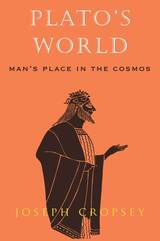 Plato's World: Man's Place in the Cosmos
Joseph Cropsey
University of Chicago Press, 1995 In this culmination of a lifetime's study, Joseph Cropsey examines the crucial relationship between Plato's conception of the nature of the universe and his moral and political thought.
Cropsey interprets seven of Plato's dialogues—Theaetetus, Euthyphro, Sophist, Statesman, Apology, Crito, and Phaedo—in light of their dramatic consecutiveness and thus as a conceptual and dramatic whole. The cosmos depicted by Plato in these dialogues, Cropsey argues, is often unreasonable, and populated by human beings unaided by gods and dealt with equivocally by nature. Masterfully leading the reader through the seven scenes of the drama, Cropsey shows how they are, to an astonishing degree, concerned with the resources available to help us survive in such a world.
This is a world—and a Plato—quite at odds with most other portraits. Much more than a summary of Plato's thinking, this book is an eloquent, sometimes amusing, often moving guide to the paradoxes and insights of Plato's philosophy.
Platte River Road Narratives: A Descriptive Bibliography of Travel Over the Great Central Overland Route to Oregon, California, Utah, Colorado, Montana, and Other Western States and Territories, 1812-1866
Merrill J. Mattes
University of Illinois Press, 1988 This massive annotated bibliography of all known significant eyewitness accounts of nineteenth-century central overland travel fills a conspicuous gap in historical literature, and will greatly accelerate research, writing, and collecting. Platte River Road Narratives includes not only all identifiable overland accounts, but also a number of those identifiable in manuscript form only. Over 2,000 entries identify the author, the form of the passage, overland trip, and give Matte's authoritative commentary and evaluation, as well as identification of the repository of the source material.
 The Platypus and the Mermaid: And Other Figments of the Classifying Imagination
Harriet Ritvo
Harvard University Press, 1997 "Cats is 'dogs,' and rabbits is 'dogs,' and so's parrots; but this `ere 'tortis' is a insect," a porter explains to an astonished traveler in a nineteenth-century Punch cartoon. Railways were not the only British institution to schematize the world. This enormously entertaining book captures the fervor of the Victorian age for classifying and categorizing every new specimen, plant or animal, that British explorers and soldiers and sailors brought home. As she depicts a whole complex of competing groups deploying rival schemes and nomenclatures, Harriet Ritvo shows us a society drawing and redrawing its own boundaries and ultimately identifying itself.
The experts (whether calling themselves naturalists, zoologists, or comparative anatomists) agreed on their superior authority if nothing else, but the laymen had their say--and Ritvo shows us a world in which butchers and artists, farmers and showmen vied to impose order on the wild profusion of nature. Sometimes assumptions or preoccupations overlapped; sometimes open disagreement or hostility emerged, exposing fissures in the social fabric or contested cultural territory. Of the greatest interest were creatures that confounded or crossed established categories; in the discussions provoked by these mishaps, monstrosities, and hybrids we can see ideas about human society--about the sexual proclivities of women, for instance, or the imagined hierarchy of nations and races.
A thoroughly absorbing account of taxonomy--as zoological classification and as anthropological study--The Platypus and the Mermaid offers a new perspective on the constantly shifting, ever suggestive interactions of scientific lore, cultural ideas, and the popular imagination.
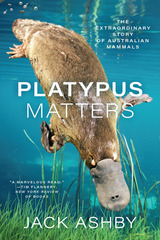 Platypus Matters: The Extraordinary Story of Australian Mammals
Jack Ashby
University of Chicago Press, 2022 Scientifically informed and funny, a firsthand account of Australia’s wonderfully unique mammals—and how our perceptions impact their future.
Think of a platypus: They lay eggs (that hatch into so-called platypups), produce milk without nipples and venom without fangs, and can detect electricity. Or a wombat: Their teeth never stop growing, they poop cubes, and they defend themselves with reinforced rears. And what about antechinuses—tiny marsupial carnivores whose males don’t see their first birthday, as their frenzied sex lives take so much energy that their immune systems fail? Platypuses, possums, wombats, echidnas, devils, kangaroos, quolls, dibblers, dunnarts, kowaris: Australia has some truly astonishing mammals, with incredible, unfamiliar features. But how does the world regard these creatures? And what does that mean for their conservation?
In Platypus Matters, naturalist Jack Ashby shares his love for these often-misunderstood animals. Informed by his own experiences meeting living marsupials and egg-laying mammals during fieldwork in Tasmania and mainland Australia, as well as his work with thousands of zoological specimens collected for museums over the last two-hundred-plus years, Ashby’s tale not only explains historical mysteries and debunks myths (especially about the platypus), but also reveals the toll these myths can take. Ashby makes clear that calling these animals “weird” or “primitive”—or incorrectly implying that Australia is an “evolutionary backwater,” a perception that can be traced back to the country’s colonial history—has undermined conservation: Australia now has the worst mammal extinction rate of any place on Earth. Important, timely, and written with humor and wisdom by a scientist and self-described platypus nerd, this celebration of Australian wildlife will open eyes and change minds about how we contemplate and interact with the natural world—everywhere.
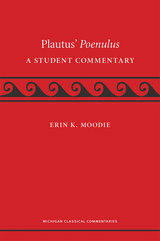 Plautus' Poenulus: A Student Commentary
Erin K. Moodie
University of Michigan Press, 2015 Erin K. Moodie presents a rigorous yet accessible guide to Plautus’ satirical play Poenulus for use in the contemporary classroom. Likely written and staged in the years following the Second Punic War between Rome and Carthage, Poenulus tells the tale of a young Carthaginian, the adopted son and heir of the man who purchased him as a slave when he was a child, who is in love with a female Carthaginian slave and prostitute. The comedy, especially Plautus’ portrayal of his main character, compels the reader to consider Rome’s relationship with Carthage, its former enemy; Plautus’ role in choosing and adapting plays for the Roman stage; and the constraints of the palliata genre. The full Latin text, based primarily on that of Friedrich Leo, is included in this volume. Moodie’s detailed introduction, map, and comprehensive notes approach the text from multiple angles, enabling the advanced undergraduate or graduate student to grapple directly with the issues Poenulus raises. Her commentary, clearly correlated with specific points in the text by the use of line numbers, provides assistance with early Latin grammar and syntax, Plautine meter, Roman history, and the influences on and performance contexts of Roman comedy. The commentary also introduces students to modern scholarship on the genre, including metatheatrical interpretations and performance criticism. “A comprehensive, user-friendly tool for students of Plautus and ancient comedy . . . almost everything that a student could ask seems to have been anticipated by the author.”
—Radd Ehrman, Kent State University
Play
Catherine Garvey
Harvard University Press, 1977
Play and the Human Condition
Thomas S. Henricks
University of Illinois Press, 2015 In Play and the Human Condition, Thomas Henricks brings together ways of considering play to probe its essential relationship to work, ritual, and communitas. Focusing on five contexts for play--the psyche, the body, the environment, society, and culture--Henricks identifies conditions that instigate play, and comments on its implications for those settings. Offering a general theory of play as behavior promoting self-realization, Henricks articulates a conception of self that includes individual and social identity, particular and transcendent connection, and multiple fields of involvement. Henricks also evaluates play styles from history and contemporary life to analyze the relationship between play and human freedom. Imaginative and stimulating, Play and the Human Condition shows how play allows us to learn about our qualities and those of the world around us--and in so doing make sense of ourselves.
Play: Enlarged Edition
Catherine Garvey
Harvard University Press, 1990 Since the original publication of Play in 1977, dramatic economic and social changes have resulted in a marked increase in the number of young children from diverse backgrounds enrolled in group child-care programs, a trend that has created a need for a better understanding of play and its significance for the growing child. Over the same period, researchers studying child development have become even more interested in the relationship between play and children's well-being. In this enlarged edition of Play, Catherine Garvey explores some of the more promising new directions in the study of play and summarizes the findings of recent research.
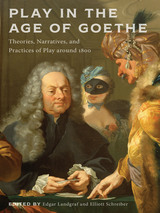 Play in the Age of Goethe: Theories, Narratives, and Practices of Play around 1800
Edgar Landgraf
Bucknell University Press, 2020 We are inundated with game play today. Digital devices offer opportunities to play almost anywhere and anytime. No matter our age, gender, social, cultural, or educational background—we play. Play in the Age of Goethe: Theories, Narratives, and Practices of Play around 1800 is the first book-length work to explore how the modern discourse of play was first shaped during this pivotal period (approximately 1770-1830). The eleven chapters illuminate critical developments in the philosophy, pedagogy, psychology, politics, and poetics of play as evident in the work of major authors of the period including Lessing, Goethe, Kant, Schiller, Pestalozzi, Jacobi, Tieck, Jean Paul, Schleiermacher, and Fröbel. While drawing on more recent theories of play by thinkers such as Jean Piaget, Donald Winnicott, Jost Trier, Gregory Bateson, Jacques Derrida, Thomas Henricks, and Patrick Jagoda, the volume shows the debates around play in German letters of this period to be far richer and more complex than previously thought, as well as more relevant for our current engagement with play. Indeed, modern debates about what constitutes good rather than bad practices of play can be traced to these foundational discourses.
Published by Bucknell University Press. Distributed worldwide by Rutgers University Press.
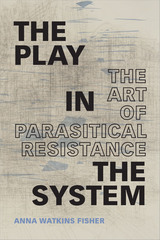 The Play in the System: The Art of Parasitical Resistance
Anna Watkins Fisher
Duke University Press, 2020 What does artistic resistance look like in the twenty-first century, when disruption and dissent have been co-opted and commodified in ways that reinforce dominant systems? In The Play in the System Anna Watkins Fisher locates the possibility for resistance in artists who embrace parasitism—tactics of complicity that effect subversion from within hegemonic structures. Fisher tracks the ways in which artists on the margins—from hacker collectives like Ubermorgen to feminist writers and performers like Chris Kraus—have willfully abandoned the radical scripts of opposition and refusal long identified with anticapitalism and feminism. Space for resistance is found instead in the mutually, if unevenly, exploitative relations between dominant hosts giving only as much as required to appear generous and parasitical actors taking only as much as they can get away with. The irreverent and often troubling works that result raise necessary and difficult questions about the conditions for resistance and critique under neoliberalism today.
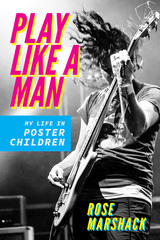 Play Like a Man: My Life in Poster Children
Rose Marshack
University of Illinois Press, 2023 As a member of Poster Children, Rose Marshack took part in entwined revolutions. Marshack and other women seized a much-elevated profile in music during the indie rock breakthrough while the advent of new digital technologies transformed the recording and marketing of music. Touring in a van, meeting your idols, juggling a programming job with music, keeping control and credibility, the perils of an independent record label (and the greater perils of a major)—Marshack chronicles the band’s day-to-day life and punctuates her account with excerpts from her tour reports and hard-learned lessons on how to rock, program, and teach while female. She also details the ways Poster Children applied punk’s DIY ethos to digital tech as a way to connect with fans via then-new media like pkids listservs, internet radio, and enhanced CDs. An inside look at a scene and a career, Play Like a Man is the evocative and humorous tale of one woman’s life in the trenches and online.
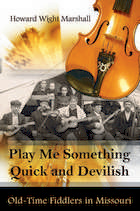 Play Me Something Quick and Devilish: Old-Time Fiddlers in Missouri
Howard Wight Marshall
University of Missouri Press, 2012 Play Me Something Quick and Devilish explores the heritage of traditional fiddle music in Missouri. Howard Wight Marshall considers the place of homemade music in people’s lives across social and ethnic communities from the late 1700s to the World War I years and into the early 1920s. This exceptionally important and complex period provided the foundations in history and settlement for the evolution of today’s old-time fiddling. Beginning with the French villages on the Mississippi River, Marshall leads us chronologically through the settlement of the state and how these communities established our cultural heritage. Other core populations include the “Old Stock Americans” (primarily Scotch-Irish from Kentucky, Tennessee, North Carolina, and Virginia), African Americans, German-speaking immigrants, people with American Indian ancestry (focusing on Cherokee families dating from the Trail of Tears in the 1830s), and Irish railroad workers in the post–Civil War period. These are the primary communities whose fiddle and dance traditions came together on the Missouri frontier to cultivate the bounty of old-time fiddling enjoyed today. Marshall also investigates themes in the continuing evolution of fiddle traditions. These themes include the use of the violin in Westward migration, in the Civil War years, and in the railroad boom that changed history. Of course, musical tastes shift over time, and the rise of music literacy in the late Victorian period, as evidenced by the brass band movement and immigrant music teachers in small towns, affected fiddling. The contributions of music publishing as well as the surprising importance of ragtime and early jazz also had profound effects. Much of the old-time fiddlers’ repertory arises not from the inherited reels, jigs, and hornpipes from the British Isles, nor from the waltzes, schottisches, and polkas from the Continent, but from the prolific pens of Tin Pan Alley.
Marshall also examines regional styles in Missouri fiddling and comments on the future of this time-honored, and changing, tradition. Documentary in nature, this social history draws on various academic disciplines and oral histories recorded in Marshall’s forty-some years of research and field experience. Historians, music aficionados, and lay people interested in Missouri folk heritage—as well as fiddlers, of course—will find Play Me Something Quick and Devilish an entertaining and enlightening read.
With 39 tunes, the enclosed Voyager Records companion CD includes a historic sampler of Missouri fiddlers and styles from 1955 to 2012.
The Play of Allusion in the Historia Augusta
David Rohrbacher
University of Wisconsin Press, 2015 By turns outlandish, humorous, and scatological, the Historia Augusta is an eccentric compilation of biographies of the Roman emperors and usurpers of the second and third centuries. Historians of late antiquity have struggled to explain the fictional date and authorship of the work and its bizarre content (did the Emperor Carinus really swim in pools of floating apples and melons? did the usurper Proculus really deflower a hundred virgins in fifteen days?). David Rohrbacher offers, instead, a literary analysis of the work, focusing on its many playful allusions. Marshaling an array of interdisciplinary research and original analysis, he contends that the Historia Augusta originated in a circle of scholarly readers with an interest in biography, and that its allusions and parodies were meant as puzzles and jokes for a knowing and appreciative audience.
The Play of Allusion in the Historia Augusta
David Rohrbacher
University of Wisconsin Press, 2020 By turns outlandish, humorous, and scatological, the Historia Augusta is an eccentric compilation of biographies of the Roman emperors and usurpers of the second and third centuries. Historians have struggled to explain the fictional date and authorship of the work. David Rohrbacher offers, instead, a literary analysis of the work, focusing on its many playful references, contending that the Historia Augusta originated in a circle of scholarly readers with an interest in biography and that its allusions and parodies were meant as puzzles and jokes for a knowing and appreciative audience.
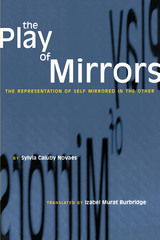 The Play of Mirrors: The Representation of Self Mirrored in the Other
By Sylvia Caiuby Novaes
University of Texas Press, 1997 Focusing on the Bororo people of west-central Brazil, this book addresses the construction of self-identity through interethnic interaction. By presenting the images the Bororo have of themselves as well as the images of others who have interacted with them, Brazilian anthropologist Sylvia Caiuby Novaes argues convincingly that Bororo self-images are constructed with the aid of a peculiar looking-glass—it is in the images of others that they see themselves.
Incorporating contributions from psychology, psychoanalysis, linguistics, and semiotics, Play of Mirrors focuses on symbols, images, discourse, and meanings rather than solely on the problem of acculturation. It thus reflects the thinking of a new generation of Brazilian anthropologists who have shifted their focus from native communities as isolated entities to an examination of their embeddedness within broader national and international arenas.
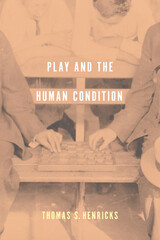 Play Reconsidered: Sociological Perspectives on Human Expression
Thomas S. Henricks
University of Illinois Press, 2006 Understanding the significance of adult play in the life of modern societies Within the social sciences, few matters are as significant as the study of human play--or as neglected. In Play Reconsidered, rather than viewing play simply as a preoccupation of the young and a vehicle for skill development, Thomas S. Henricks argues that it’s a social and cultural phenomenon of adult life, enveloped by wider structures and processes of society. In that context, he argues that a truly sociological approach to play should begin with a consideration of the largely overlooked writings on play and play-related topics by some of the classic sociological thinkers of the twentieth century. Henricks explores Karl Marx’s analysis of creativity in human labor, examines Emile Durkheim’s observations on the role of ritual and the formation of collective consciousness, extends Max Weber’s ideas about the process of rationalization to the realm of expressive culture and play, surveys Georg Simmel’s distinctive approach to sociology and sociability, and discusses Erving Goffman’s focus on human conduct as process and play as “encounter.” These and other discussions of the contributions of more recent sociologists are framed by an initial consideration of Johan Huizinga’s famous challenge to understand the nature and significance of play. In a closing synthesis, Henricks distinguishes play from other forms of human social expression, particularly ritual, communitas, and work.
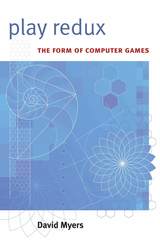 Play Redux: The Form of Computer Games
David Myers
University of Michigan Press, 2010 "Play Redux excels in tying together intellectual traditions that are rooted in literary studies, cognitive science, play studies and several other fields, thereby creating a logical whole. Through this, the book makes service to several academic communities by pointing out their points of contact. This is clearly an important contribution to a growing academic field, and will no doubt become important in many future discussions about digital games and play."
---Frans Mäyrä, University of Tampere, Finland "David Myers has researched video games longer than anyone else. Play Redux shows him continually relevant, never afraid of courting controversy."
---Jesper Juul, IT University of Copenhagen, Denmark Play Redux is an ambitious description and critical analysis of the aesthetic pleasures of video game play, drawing on early twentieth-century formalist theory and models of literature. Employing a concept of biological naturalism grounded in cognitive theory, Myers argues for a clear delineation between the aesthetics of play and the aesthetics of texts. In the course of this study, Myers asks a number of interesting questions: What are the mechanics of human play as exhibited in computer games? Can these mechanisms be modeled? What is the evolutionary function of cognitive play, and is it, on the whole, a good thing? Intended as a provocative corrective to the currently ascendant, if not dominant, cultural and ethnographic approach to game studies and play, Play Redux will generate interest among scholars of communications, new media, and film. David Myers is Reverend Aloysius B. Goodspeed Distinguished Professor at the School of Mass Communication, Loyola University New Orleans.
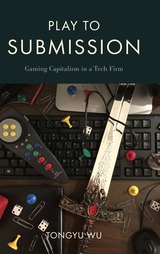 Play to Submission: Gaming Capitalism in a Tech Firm
Tongyu Wu
Temple University Press, 2024 Games are often a fun perk of a tech company job, and employees can “play to win” in the competition to succeed. But in studying “Behemoth” (a pseudonym for a top American tech company), Tongyu Wu discovered that gaming work culture was far more insidious.
Play to Submission shows how Behemoth’s games undermined and manipulated workers. They lost their work-life balance and the constant competition made labor organizing difficult. Nonetheless, many workers embraced management’s games as a chance to show off their “gamer” identities and create a workplace culture with privileged insiders and exiled outsiders, with female and migrant workers usually in the latter group. Moreover, Wu indicates this may be the future of work for high- and low-skilled and, creative workers in an environment where capitalists have heightened demands for technology and creativity.
Drawing from 13 months of ethnographic work, Wu presents a persistent reality in which the company reaps the reward of surplus productivity, leaving employees themselves in a highly competitive and sometimes precarious work position.
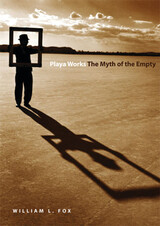 Playa Works: The Myth of the Empty
William L. Fox
University of Nevada Press, 2024 In eight brilliant essays, Fox explores many of the major playas of the American West , examining locations as diverse as Nellis Air Force Base and Frenchman Flat, where the federal government has tested experimental aircraft and atomic weaponry; the Great Salt Lake Desert, where land-speed records have been broken; and the Black Rock Desert of Northern Nevada, site of the colorful Burning Man arts festival. He analyzes the geological and climatological conditions that created the playas and the historical role that playas played in the exploration and settlement of the West. And he offers lucid and keenly perceptive discussions of the ways that artists have responded to the playas, from the ancient makers of geoglyphs to the work of contemporary artists who have found inspiration in these enigmatic spaces, including earthworks builder Michael Heizer, photographer Richard Misrach, and painter Michael Moore. The ensemble is a compelling combination of natural history, philosophy, and art criticism, a thoughtful meditation on humankind's aversion to and fascination with the void.
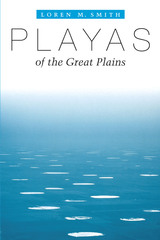 Playas of the Great Plains
By Loren M. Smith
University of Texas Press, 2003 Winner, Wildlife Publications Award — Outstanding Book Category, The Wildlife Society, 2004
Texas Tech University President's Book Award, 2005 Shallow wetlands that occur primarily in semi-arid to arid environments, playas are keystone ecosystems in the western Great Plains of North America. Providing irreplaceable habitat for native plants and animals, including migratory birds, they are essential for the maintenance of biotic diversity throughout the region. Playas also serve to recharge the aquifer that supplies much of the water for the Plains states. At the same time, however, large-scale habitat changes have endangered playas across the Great Plains, making urgent the need to understand their ecology and implement effective conservation measures. This book provides a state-of-the-art survey of all that is currently known about Great Plains playa ecology and conservation. Loren Smith synthesizes his own extensive research with other published studies to define playas and characterize their origin, development, flora, fauna, structure, function, and diversity. He also thoroughly explores the human relationship with playas from prehistoric times, when they served as campsites for the Clovis peoples, to today's threats to playa ecosystems from agricultural activities and global climate change. A blueprint for government agencies, private conservation groups, and concerned citizens to save these unique prairie ecosystems concludes this landmark study.
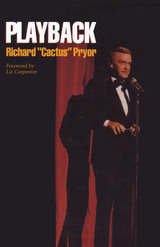 Playback
By Richard "Cactus" Pryor
University of Texas Press, 1995 From the town that brought you Molly Ivins, Liz Carpenter, John Henry Faulk, and Greater Tuna, here's Cactus Pryor. For decades, Cactus' wit and wisdom have delighted radio listeners, as well as the many social, political, business, and philanthropic groups throughout the United States whose functions have been enlivened by this accomplished master of ceremonies and after-dinner speaker. Now the University of Texas Press takes great pleasure in bringing you this quintessential Texas humorist. Playback gathers over forty of Cactus Pryor's favorite radio essays, translating "ear words into eye words," as he puts it. In these pieces, Cactus paints vivid word pictures of people and places, offering readers the same "you are there" immediacy that makes his radio broadcasts so popular. In them, you'll take a sentimental journey with Cactus and his wife to the Maui grave site of Charles Lindbergh—discover how legendary University of Texas football coach Darrell Royal faced the agony of defeat with humor—meet unsung heroes like the 104-year-old who's teaching himself to read and write—get acquainted with the notable folks Cactus has known, including Lady Bird Johnson, John Wayne, Jane Fonda, and James Michener—and, of course, share Cactus' love of family, friends, and the Texas coast. As Bailey White's essays on National Public Radio have introduced listeners across the country to the lifeways of the Deep South, so Cactus Pryor offers a humorous, revealing look at how we Texans view ourselves, our neighbors, and the world. Read Playback now, and see what you've been missing.
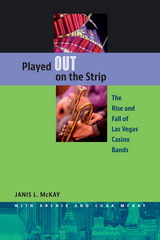 Played Out on the Strip: The Rise and Fall of Las Vegas Casino Bands
Janis L. McKay
University of Nevada Press, 2016 From 1940 to 1989, nearly every hotel on the Las Vegas Strip employed a full-time band or orchestra. After the late 1980s, when control of the casinos changed hands from independent owners to corporations, almost all of these musicians found themselves unemployed. Played Out on the Strip traces this major shift in the music industry through extensive interviews with former musicians. In 1989, these soon-to-be unemployed musicians went on strike. Janis McKay charts the factors behind this strike, which was precipitated by several corporate hotel owners moving to replace live musicians with synthesizers and taped music, a strategic decision made in order to save money. The results of this transitional period in Las Vegas history were both long-lasting and far-reaching for the entertainment industry. With its numerous oral history interviews and personal perspectives from the era, this book will appeal to readers interested in Las Vegas history, music history, and labor issues.
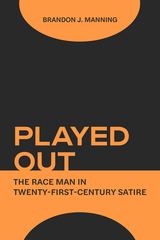 Played Out: The Race Man in Twenty-First-Century Satire
Brandon J. Manning
Rutgers University Press, 2022 Dating back to the blackface minstrel performances of Bert Williams and the trickster figure of Uncle Julius in Charles Chesnutt’s Conjure Tales, black humorists have negotiated American racial ideologies as they reclaimed the ability to represent themselves in the changing landscape of the early 20th century. Marginalized communities routinely use humor, specifically satire, to subvert the political, social, and cultural realities of race and racism in America. Through contemporary examples in popular culture and politics, including the work of Kendrick Lamar, Key and Peele and the presidency of Barack Obama and many others, in Played Out: The Race Man in 21st Century Satire author Brandon J. Manning examines how Black satirists create vulnerability to highlight the inner emotional lives of Black men. In focusing on vulnerability these satirists attend to America’s most basic assumptions about Black men. Contemporary Black satire is a highly visible and celebrated site of black masculine self-expression. Black satirists leverage this visibility to trouble discourses on race and gender in the Post-Civil Rights era. More specifically, contemporary Black satire uses laughter to decenter Black men from the socio-political tradition of the Race Man.
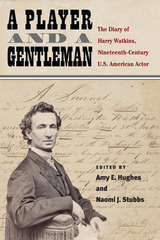 A Player and a Gentleman: The Diary of Harry Watkins, Nineteenth-Century U.S. American Actor
Edited by Amy E. Hughes and Naomi J. Stubbs
University of Michigan Press, 2018 Hardworking actor, playwright, and stage manager Harry Watkins (1825–94) was also a prolific diarist. For fifteen years Watkins regularly recorded the plays he saw, the roles he performed, the books he read, and his impressions of current events. Performing across the U.S., Watkins collaborated with preeminent performers and producers, recording his successes and failures as well as his encounters with celebrities such as P. T. Barnum, Junius Brutus Booth, Edwin Forrest, Anna Cora Mowatt, and Lucy Stone. His is the only known diary of substantial length and scope written by a U.S. actor before the Civil War—making Watkins, essentially, the antebellum equivalent of Samuel Pepys. Theater historians Amy E. Hughes and Naomi J. Stubbs have selected, edited, and annotated excerpts from the diary in an edition that offers a vivid glimpse of how ordinary people like Watkins lived, loved, struggled, and triumphed during one of the most tumultuous periods in U.S. history. The selections in A Player and a Gentleman are drawn from a more expansive digital archive of the complete diary. The book, like its digital counterpart, will richly enhance our knowledge of antebellum theater culture and daily life in the U.S. during this period.
Players and Arenas: The Interactive Dynamics of Protest
Edited by James M. Jasper and Jan Willem Duyvendak
Amsterdam University Press, 2015 Players and Arenas brings together a diverse group of experts to examine the interactions between political protestors and the many strategic players they encounter, such as cultural institutions, religious organizations, and the mass media“as well as potential allies, competitors, recruits, and funders. Discussing protestors and players as they interact within the arenas of specific social contexts, the essays show that the main constraints on what protestors can accomplish come not from social and political structures, but from other players with different goals and interests. Through a careful treatment of these situations, this volume offers a new way to approach the role of social protest in national and international politics.
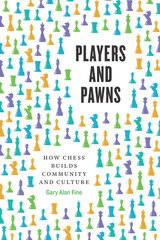 Players and Pawns: How Chess Builds Community and Culture
Gary Alan Fine
University of Chicago Press, 2015 A chess match seems as solitary an endeavor as there is in sports: two minds, on their own, in fierce opposition. In contrast, Gary Alan Fine argues that chess is a social duet: two players in silent dialogue who always take each other into account in their play. Surrounding that one-on-one contest is a community life that can be nearly as dramatic and intense as the across-the-board confrontation. Fine has spent years immersed in the communities of amateur and professional chess players, and with Players and Pawns he takes readers deep inside them, revealing a complex, brilliant, feisty world of commitment and conflict. Within their community, chess players find both support and challenges, all amid a shared interest in and love of the long-standing traditions of the game, traditions that help chess players build a communal identity.
Full of idiosyncratic characters and dramatic gameplay, Players and Pawns is a celebration of the fascinating world of serious chess.
The Player's Power to Change the Game: Ludic Mutation
Anne-Marie Schleiner
Amsterdam University Press, 2017 In recent decades, what could be considered a gamification of the world has occurred, as the ties between games and activism, games and war, and games and the city grow ever stronger. In this book, Anne-Marie Schleiner explores a concept she calls 'ludic mutation', a transformative process in which the player, who is expected to engage in the preprogramed interactions of the game and accept its imposed subjective constraints, seizes back some of the power otherwise lost to the game itself. Crucially, this power grab is also relevant beyond the game because players then see the external world as material to be reconfigured, an approach with important ramifications for everything from social activism to contemporary warfare.
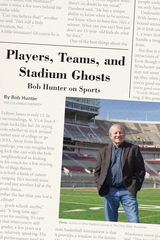 Players, Teams, and Stadium Ghosts: Bob Hunter on Sports
Bob Hunter
Ohio University Press, 2019 In Players, Teams, and Stadium Ghosts, sportswriter Bob Hunter has assembled a Hall of Fame collection of his best writing from the Columbus Dispatch. Fans will encounter some of the biggest names in sports and relive great moments from games played by amateurs and pros. They’ll encounter forgotten players and teams that struggled. Hunter shows us LeBron James when he was a 15-year-old high school freshman, already capturing the world’s attention; 20-year-old Derek Jeter’s meteoric rise through the minors, including the Columbus Clippers; a strange encounter with Pete Rose hustling frozen pizzas; and the excitement of watching future WNBA star Katie Smith dominate a Columbus Quest championship game. The common thread is the personal touch that Hunter consistently uses to take readers beyond the final scores and the dazzle of lights. These are the people behind the athletes. They’re remembered for how they played, but Hunter reminds us who they were.
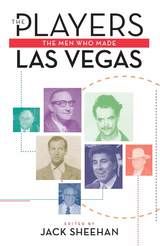 The Players: The Men Who Made Las Vegas
Jack Sheehan
University of Nevada Press, 1997 Las Vegas was largely shaped by a handful of colorful and astute casino operators who turned a dusty desert town into the gaudy, booming holiday mecca that it is today. The essays in this book introduce us to these players. We discover how early leaders like Cliff Jones, Moe Dalitz, and Benny Binion first grasped Las Vegas’s potential as a center for high-stakes gambling, and we read of mobster Bugsy Siegel’s efforts to bring to reality another man’s dream of a glamorous resort-casino on a then-remote site at the edge of town. Other visionaries like Jay Sarno, Sam Boyd, and Jackie Gaughan helped turn casinos into the islands of fantasy, replete with lavish entertainment spectacles. The arrival of eccentric billionaire Howard Hughes introduced a new style of corporate management --one carried on by Kirk Kerkorian and Steve Wynn to an industry previously led by independent entrepreneurs and their families. In preparing their essays, the authors consulted a wide range of sources and conducted interviews with many of the surviving players and their families and associates. The result is an engaging, highly informative account of a city’s growth through the visions, energies, and decisions of some remarkable gambler-businessmen.
Players Unleashed!: Modding The Sims and the Culture of Gaming
Tanja Sihvonen
Amsterdam University Press, 2011
It has been ten years since video game giant Electronic Arts first released The Sims, the best-selling game that allows its players to create a household and then manage every aspect of daily life within it. And since its debut, gamers young and old have found ways to “mod” The Sims, a practice in which gamers manipulate the computer code of a game, and thereby alter it to add new content and scenarios.
In Players Unleashed!—the first study of its kind—Tanja Sihvonen provides a fascinating examination of modding, tracing its evolution and detailing its impact on The Sims and the game industry as a whole. Along the way, Sihvonen shares insights into specific modifications and the cultural contexts from which they emerge.
The Playful Citizen: Civic Engagement in a Mediatized Culture
René Glas
Amsterdam University Press, 2019 In the last decade, digital media technologies and developments have given rise to exciting new forms of ludic, or playful, engagements of citizens in cultural and societal issues. From the Occupy movement to playful city-making to the gameful designs of the Obama 2008 and Trump 2016 presidential campaigns, and the rise of citizen science and ecological games, this book shows how play is a key theoretical, methodological, and practical principle for comprehending such new forms of civic engagement in a mediatized culture. The Playful Citizen explores how and through what media we are becoming more playful as citizens and how this manifests itself in our ways of doing, living, and thinking. We offer a pluralistic answer to such questions by bringing together scholars from different fields such as game and play studies, social sciences, and media and culture studies.
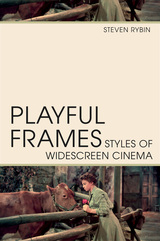 Playful Frames: Styles of Widescreen Cinema
Steven Rybin
Rutgers University Press, 2024 A widescreen frame in cinema beckons the eye to playfully, creatively roam. Such technology also gives inventive filmmakers room to disrupt and redirect audience expectations, surprising viewers through the use of a wider, more expansive screen. Playful Frames: Styles of Widescreen Cinema studies the poetics of the auteur-driven widescreen image, offering nimble, expansive analyses of the work of four distinctive filmmakers – Jean Negulesco, Blake Edwards, Robert Altman, and John Carpenter – who creatively inhabited the nooks and crannies of widescreen moviemaking during the final decades of the twentieth century. Exploring the relationship between aspect ratio and subject matter, Playful Frames shows how directors make puckish use of widescreen technology. All four of these distinctive filmmakers reimagined popular genres (such as melodrama, slapstick comedy, film noir, science fiction, and horror cinema) through their use of the wide frame, and each brings a range of intermedial interests (painting, performance, and music) to their use of the widescreen image. This study looks specifically at the technological underpinnings, aesthetic shapes, and interpretive implications of these four directors’ creative use of widescreen, offering a way to reconsider the way wide imagery still has the potential to amaze and move us today.
Playful Identities: The Ludification of Digital Media Cultures
Edited by Valerie Frissen et al.
Amsterdam University Press, 2015 In this edited volume, eighteen scholars examine the increasing role of digital media technologies in identity construction through play. Going beyond computer games, this interdisciplinary collection argues that present-day play and games are not only appropriate metaphors for capturing postmodern human identities, but are in fact the means by which people create their identity. From discussions of World of Warcraft and Foursquare to digital cartographies, the combined essays form a groundbreaking volume that features the most recent insights in play and game studies, media research, and identity studies.
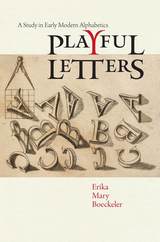 Playful Letters: A Study in Early Modern Alphabetics
Erika Mary Boeckeler
University of Iowa Press, 2017 Alphabetic letters are ubiquitous, multivalent, and largely ignored. Playful Letters reveals their important cultural contributions through Alphabetics—a new interpretive model for understanding artistic production that attends to the signifying interplay of the graphemic, phonemic, lexical, and material capacities of letters. A key period for examining this interplay is the century and a half after the invention of printing, with its unique media ecology of print, manuscript, sound, and image.
Drawing on Shakespeare, anthropomorphic typography, figured letters, and Cyrillic pedagogy and politics, this book explores the ways in which alphabetic thinking and writing inform literature and the visual arts, and it develops reading strategies for the “letterature” that underwrites such cultural production. Playful Letters begins with early modern engagements with the alphabet and the human body—an intersection where letterature emerges with startling force. The linking of letters and typography with bodies produced a new kind of literacy. In turn, educational habits that shaped letter learning and writing permeated the interrelated practices of typography, orthography, and poetry. These mutually informing processes render visible the persistent crumbling of words into letters and their reconstitution into narrative, poetry, and image.
In addition to providing a rich history of literary and artistic alphabetic interrogation in early modern Western Europe and Russia, Playful Letters contributes to the continuous story of how people use new technologies and media to reflect on older forms, including the alphabet itself.
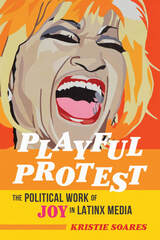 Playful Protest: The Political Work of Joy in Latinx Media
Kristie Soares
University of Illinois Press, 2023 Pleasure-based politics in Puerto Rican and Cuban pop culture Joy is a politicized form of pleasure that goes beyond gratification to challenge norms of gender, sexuality, race, and class. Kristie Soares focuses on the diasporic media of Puerto Rico and Cuba to examine how music, public activist demonstrations, social media, sitcoms, and other areas of culture resist the dominant stories told about Latinx joy. As she shows, Latinx creators compose versions of joy central to social and political struggle and at odds with colonialist and imperialist narratives that equate joy with political docility and a lack of intelligence. Soares builds her analysis around chapters that delve into gozando in salsa music, precise joy among the New Young Lords Party, choteo in the comedy ¿Qué Pasa U.S.A.?, azúcar in the life and death of Celia Cruz, dale as Pitbull’s signature affect, and Alexandria Ocasio-Cortez’s use of silliness to take seriously political violence. Daring and original, Playful Protest examines how Latinx creators resist the idea that joy only exists outside politics and activist struggle.
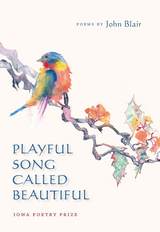 Playful Song Called Beautiful
John Blair
University of Iowa Press, 2016 Playful Song Called Beautiful ranges far into the intersections of faith and scientific thought, places where “there is no stranger who is / stranger than you, no / familiar who’s more / familiar.” In poems that are either formally rhymed and metered or written in syllabically structured three-line stanzas, Blair wanders among universal orders and failures of desire, where the unlikeliness of any of us being who we are, what we are, where we are forces us to consider—and reconsider—the possibilities of belief and meaning. Blair’s poems are elegant and earthy, sometimes profane, and sometimes lovingly playful.
From the invisible landscape of elementary particles to Johann Wolfgang Von Goethe’s love of the smell of rotten apples, Blair’s poems direct us through a “great wide world that is / ours and never ours” and somewhere among the rolling tercets, the transcendent becomes not only possible, but entirely inevitable.
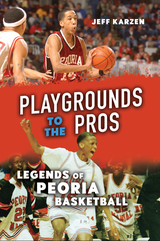 Playgrounds to the Pros: Legends of Peoria Basketball
Jeff Karzen
University of Illinois Press, 2023 Howard Nathan. A. J. Guyton. Sergio McClain. Marcus Griffin. Frank Williams. Shaun Livingston. This dazzling constellation of talent helped make Peoria a prep basketball hotbed from the 1980s to the 2000s. Jeff Karzen takes readers inside the lives of the players, coaches, and others who defined an era that produced six state titles and four Illinois Mr. Basketball winners. Drawing on dozens of in-depth interviews, Karzen tells the stories behind the on-court triumphs while providing a panorama of the entire Peoria scene--the rivalries and relationships, the families and friendships, the hopes and hard work. Karzen also follows the players into their Division 1 and NBA careers and pays special attention to the pipeline that, by connecting Peoria to Champaign-Urbana, powered one of the most successful periods in Fighting Illini basketball history. Intense and intimate, Playgrounds to the Pros chronicles a basketball golden age in America’s quintessential blue collar town.
 PlayHouse: Poems
Jorrell Watkins
Northwestern University Press, 2024 Poems on Black joy, masculinity, and the music that transforms a space into a home
Jorrell Watkins's debut poetry collection is a polyvocal, musically charged disruption of the United States's fixation on drug and gun culture. The poems in Play|House embody many identities, including son, brother, fugitive, bluesman, karate practitioner, and witness. Throughout, Watkins inflects a Black/trap vernacular that defamiliarizes the urban Southern landscape. Across three sections of poetry scored by hip-hop, blues, and trap, Watkins considers how music is a dwelling and wonders which histories, memories, and people haunt each home. Past figures such as John Coltrane, Billie Holiday, and the short-lived 1940s trio Day, Dawn & Dusk intermingle with Migos, the Watkins family, childhood friends, and loved ones both parted and departed. At its core, Play|House reckons with the truths and failures of masculinity for Black boys and men, all the while documenting moments of triumphant Black joy and love.
 Playhouse to Powerhouse: Locating Black Power Women and their Movement in the Black Theatre
Kerry Goldmann
University of Arkansas Press, 2025 The rise of Black cultural nationalism in the 1960s came with resounding promises of assertive new methods to achieve Black liberation in America, especially through art. Nowhere were these efforts more impactful or lasting than in the Black theatres founded or led by Black women between 1960 and 1990. Prior to the 1960s, most Black theatre was barred from mainstream white venues, limiting public access, Black artistic and economic opportunity, and cultural ownership. Playhouse to Powerhouse: Locating Black Power Women and Their Movement in the Black Theatre examines the revolutionaries who brought about this change, merging arts and entrepreneurship to embed theatres in Black communities from California to New York to Texas.
In Playhouse to Powerhouse, Kerry L. Goldmann explores the Black theatre movement through the lens of three significant women-led theatres that are still in operation today: Nora Vaughn’s Black Repertory Group in Berkeley, Barbara Ann Teer’s National Black Theatre in Harlem, and George Hawkins and Eileen Morris’s Ensemble Theatre in Houston. Goldmann concludes with a discussion of the current moment, examining contemporary obstacles such as gentrification, the co-opting of Black theatres, and the impact of COVID-19.
This remarkable work sheds light on the foundational role that Vaughn, Teer, and Morris played in the Black cultural revolution of the mid- to late twentieth century, securing theatre houses that thrived in multiple capacities as sites for revolution organizing, revenue generation for communal uplift, and unapologetic Black cultural representation.
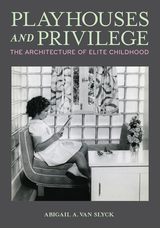 Playhouses and Privilege: The Architecture of Elite Childhood
Abigail A. Van Slyck
University of Minnesota Press, 2025 Examining playhouses of the super-rich to understand how architecture contributed to the construction of elite identity and modern childhood Playhouses and Privilege explores children’s playhouses built on British and American estates between the 1850s and the mid-1930s. Different from the prefabricated buildings that later populated suburban backyards, these playhouses were often fully functional cottages designed by well-known architects for British royalty, American industrialists, and Hollywood stars. As Abigail A. Van Slyck shows, these buildings were more than extravagant spaces to cultivate children’s imaginations and fantasy lives. Reviewing a rich archive that includes extant buildings, site plans, family photographs, baby books, and intimate household correspondence, Van Slyck demonstrates that these structures were tools of social reproduction shaped by elite parents’ attitudes toward child-rearing, education, and class privilege. Recognizing playhouses as stages for the purposeful performance of upper-class identity, she illuminates their importance in influencing children to internalize gendered codes of conduct as they enacted rituals of hospitality and learned how to supervise servants. From Queen Victoria and Prince Albert’s Swiss Cottage, built on their Osborne estate in 1853, to the children’s cottage constructed on the grounds of Cornelius Vanderbilt’s Newport mansion in 1886, and from the miniature bungalow commissioned in 1926 for the Dodge Brothers Motor Company heiress to the corporate-sponsored glass-block playhouse given to Shirley Temple in 1936, Van Slyck surveys a variety of playhouses and their milieus to trace the evolution of elite childhood and the broader social practices of wealth. Playhouses and Privilege makes clear that, far from being frivolous, playhouses were carefully planned architectural manifestations of adult concerns, integral to the reproduction of class privilege.
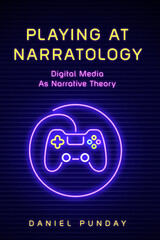 Playing at Narratology: Digital Media as Narrative Theory
Daniel Punday
Ohio State University Press, 2019 In Playing at Narratology Daniel Punday bridges the worlds of digital media studies and narrative studies by arguing that digital media allows us to see unresolved tensions, ambiguities, and gaps in core narrative concepts. Rather than developing new terms to account for web-based storytelling, Punday uses established narrative forms to better understand how digital media exposes faulty gaps in narrative theory. Punday’s Playing at Narratology shows that artists, video game developers, and narrative theorists are ultimately playing the same game.
Returning to terms such as narrator, setting, event, character, and world, Playing at Narratology reveals new ways of thinking about these basic narrative concepts—concepts that are not so basic when applied to games and web-based narratives. What are thought of as narrative innovations in these digital forms are a product of technological ability and tied to how we physically interact with a medium, creating new and complicated questions: Is the game designer the implied author or the narrator? Is the space on the screen simply the story’s setting? Playing at Narratology guides us through the evolution of narrative in new media without abandoning the field’s theoretical foundations.
 Playing By the Rules: American Trade Power and Diplomacy in the Pacific
Michael P. Ryan
Georgetown University Press, 1995 Ryan evaluates the nature and effectiveness of U.S. trade diplomacy with Japan, Korea, Taiwan, and China in the 1970s and 1980s by examining the diplomatic strategies used by the U.S. Trade Representative to enforce Section 301 of the 1974 Trade Act, which was designed to protect free trade and competition through investigations, negotiations, and sanctions. Ryan shows the different trade diplomacy tactics the East Asian governments pursued during dispute settlement negotiations with the USTR. The study also evaluates the fit between the East Asian political economies and the rules and principles of the General Agreement on Trade and Tariffs (GATT) regime. It explores the capabilities of the multilateral and minilateral regional institutions of trade dispute in the Pacific to settle emerging trade disputes. In the debate over rule-based or power-based diplomacy, Ryan concludes that U.S. trade diplomacy was most successful when it was rule-based, and that it gained significant compliance with GATT and other fair trade agreements. Ryan interviewed many of the key trade negotiators in Tokyo, Seoul, Taipei, Beijing, and Washington. His analysis is based on the largest, most systematic, market sector-specific data set yet presented on U.S. export trade dispute settlement in the Pacific. It studies the structure of state power, the structures of international business competition in manufacturing, agriculture, and services, the international and regional institutions of trade diplomacy, and the national governmental institutions of trade diplomacy in the Pacific. Anyone interested in international trade or diplomacy will find this book a source of new insight into the dynamics of trans-Pacific trade.
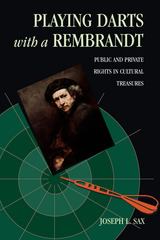 Playing Darts with a Rembrandt: Public and Private Rights in Cultural Treasures
Joseph L. Sax
University of Michigan Press, 2001 Some of the world's greatest treasures are hidden away and have not been seen publicly for decades, sometimes for centuries. Others have been destroyed. They are not stolen property. They are simply private property, and no matter their public significance, the public has no claims on them. A capricious owner of Leonardo da Vinci's notebook would be perfectly within his rights to throw it in the fireplace, as James Joyce's grandson did with letters from the author's daughter, or Warren Harding's widow did with her husband's Teapot Dome papers. This is a book about such rights and why they are wrong.
Some incidents are famous. A great artist's mural is demolished because the rich man who commissioned it is offended by its political implications. One of America's most famous collections is closed to virtually every notable person in the art world, whose requests for visits produce only a postcard from the owner saying "go to Blazes." Scholars who seek access to the Dead Sea Scrolls, monopolized and secreted by a handful of individuals for nearly forty years, are dismissed as "slime," "fleas," "gang-snatchers," and "manure," and told, "You will not see these things in your lifetime."
Playing Darts with a Rembrandt explores abuses of ownership of cultural treasures in a wide range of settings, including material of historic and scientific interest, as well as art and antiquities. It examines the claims made on behalf of the public for preservation, protection, and access to important artifacts, balancing those claims against proprietary and privacy interests, and discusses the proper role of institutions such as museums and libraries that act as repositories. Acknowledging the complexities that sometimes arise (such as the claims of history against the desire of a great figure's family to withhold private letters), Playing Darts with a Rembrandt proposes a new species of qualified ownership: to own an object of great public importance is to become a "fortunate, if provisional, trustee, having no right to deprive others who value the objects as much as they do themselves."
The fascinating stories that comprise the bulk of the book, ranging from dinosaur excavations and the Dead Sea Scrolls to the fate of presidential papers and the secrets held by the Library of Congress, will be of interest to a wide range of general readers. The extensive discussion of collectors, and their role, should commend the book to those in the art world, as well as to those professionally associated with museums, libraries, and archives. While written in a readable and untechnical way, it should also be of interest to those in the legal community who are interested in the philosophical and theoretical underpinnings of our property system.
"Sax turns his attention from public rights to conserve land and water to protection of cultural treasures. As always, he sees both sides of the argument and comes to reasoned and wise conclusions, balancing private and public interests. His prose is lucid, and his examples are both instructive and entertaining. An invaluable book for anyone interested in the preservation of our cultural resources." --I. Michael Heyman, Secretary, Smithsonian Institution
Joseph L. Sax is Professor of Law, University of California, Berkeley. He was formerly the counselor to the Secretary of the Interior and Professor of Law, the University of Michigan Law School.
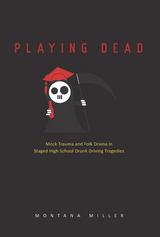 Playing Dead: Mock Trauma and Folk Drama in Staged High School Drunk Driving Tragedies
Montana Miller
Utah State University Press, 2012 As the Grim Reaper pulls a student out of class to be a “victim” of drunk driving in a program called “Every 15 Minutes,” Montana Miller observes the ritual through a folklorist’s lens. Playing Dead examines why hundreds of American schools and communities each year organize these mock tragedies without any national sponsorship or coordination. Often, the event is complete with a staged accident in the parking lot, a life-flight helicopter, and faux eulogies for the “dead” students read in school assemblies. Grounding her research in play theory, frame theory, and theory of folk drama, Miller investigates key aspects of this emergent tradition, paying particular attention to its unplanned elements—enabled by the performance’s spontaneous nature and the participants’ tendency to stray from the intended frame. Miller examines such variations in terms of the program as a whole, analyzing its continued popularity and weighing its success as perceived by participants. Her fieldwork reveals a surprising aspect of Every 15 Minutes that typical studies of ritual do not include: It can be fun. Playing Dead is volume two of the series Ritual, Festival, and Celebration, edited by Jack Santino.
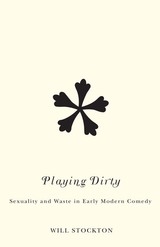 Playing Dirty: Sexuality and Waste in Early Modern Comedy
Will Stockton
University of Minnesota Press, 2010 Playing Dirty is full of dirty jokes. Arguing that the early modern excremental body is in many ways an erotic body, Will Stockton—with humor and dry wit—reads psychoanalytic theory through early modern comedies, claiming that it is helpful, rather than inimical, to the project of historicizing the body.
Noting that psychoanalysis has traditionally operated in a paranoid framework that relentlessly produces evidence of the same “truths,” Stockton turns to a minority practice in psychoanalysis—associated with Jean Laplanche—to develop a more “playful” analytic for literary studies. This analytic brings together different discourses of sexuality and the body and allows individual writings to reform psychoanalytic wisdom about sexuality, waste, and comedy. Through original explorations of works by William Shakespeare, Ben Jonson, Sir John Harington, Thomas Nashe, and Geoffrey Chaucer, Stockton further encourages the reconciliation of psychoanalysis and queer historicism. He focuses in large part on the less-often-read texts of the early modern English canon, assessing the ways in which these books have been purged from the canon in the name of generic purity.
Playing Dirty builds on recent calls by Renaissance and medieval queer scholars for a method of literary analysis that is less constrained by the boundaries of periodicity and the supposed exigencies of historicism. To take Playing Dirty seriously is to accept its invitation to “play”—to queerly disrupt the modern divide in moving promiscuously between texts past and present.
 Playing Doctor: Television, Storytelling, and Medical Power
Joseph Turow
University of Michigan Press, 2010 Playing Doctor is an engaging and highly perceptive history of the medical TV series from its inception to the present day. Turow offers an inside look at the creation of iconic doctor shows as well as a detailed history of the programs, an analysis of changing public perceptions of doctors and medicine, and an insightful commentary on how medical dramas have both exploited and shaped these perceptions. Originally published in 1989 and drawing on extensive interviews with creators, directors, and producers, Playing Doctor immediately became a classic in the field of communications studies. This expanded edition includes a new introduction placing the book in the contemporary context of the health care crisis, as well as new chapters covering the intervening twenty years of television programming. Turow draws on recent research and interviews with principals in contemporary television doctor shows such as ER, Grey's Anatomy, Private Practice, and Scrubs to illuminate the extraordinary ongoing cultural influence of medical shows. Playing Doctor situates the television vision of medicine as a limitless high-tech resource against the realities underlying the health care debate, both yesterday and today. Joseph Turow is Robert Lewis Shayon Professor at the Annenberg School for Communication, University of Pennsylvania. He was named a Distinguished Scholar by the by the National Communication Association and a Fellow of the International Communication Association in 2010. He has authored eight books, edited five, and written more than 100 articles on mass media industries. He has also produced a DVD titled Prime Time Doctors: Why Should You Care? which has been distributed to all first-year medical students with the support of the Robert Woods Johnson Foundation.
Playing Dolly: Technocultural Formations, Fantasies, and Fictions of Assisted Reproduction
Kaplan, E. Ann
Rutgers University Press, 1999 Reproductive technology spans techniques ranging from cloning, surrogate motherhood, egg donation, and prenatal testing. In the early nineties, when public debate about this topic was new, the discourse focused on the moral and ethical issues that these new technologies evoked. Less than a decade later, the editors in Playing Dolly state, ethical questions seem less urgent. Enormous changes have taken place in the way that reproduction is represented, understood, and discussed. The pieces, which range from the biomedical to the sociocultural and include even fiction, reflect the shift in public perception of these complex topics. They testify to the increasing acceptance of reproductive technology, and the resulting reduction in concern over the ethical issues raised by technological intervention.
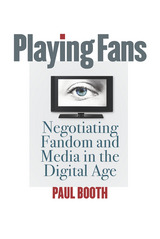 Playing Fans: Negotiating Fandom and Media in the Digital Age
Paul Booth
University of Iowa Press, 2015 Fans are everywhere: from Fifty Shades of Grey to Veronica Mars, from Comic-Con to sitcom, from niche to Geek Chic, fans are becoming the most visible and important audience of the twenty-first century. For years the media industries ignored fans and fan activities, but now they’re paying attention and a lot of money to develop a whole new wave of products intended to harness the power of fandom. What impact do such corporate media efforts have on fan practice and fan identities? And are the media industries actually responding to fans as fans want them to?
In Playing Fans, Paul Booth argues that the more attention entertainment businesses pay to fans, the more mainstream fans have become popularized. But such mainstreaming ignores important creative fan work and tries to channel fandom into activities lucrative for the companies. Offering a new approach to the longstanding debate about the balance between manipulation and subversion in popular culture, the author argues that we can understand the current moment best through the concepts of pastiche and parody. This sophisticated alternative to conceiving of fans as either dupes of the media industry or rebels against it takes the discussion of “transformative” and “affirmative” fandom in a productive new direction.
With nuanced analyses of the Doctor Who Experience in Cardiff, the representations of fans in TV shows like Community and films like Fanboys, SuperWhoLock fans’ use of gifs, and the similarities in discussions of slash fandom and pornographic parody films, this book reveals how fans borrow media techniques and media industries mimic fan activities. Just as the entertainment industry needs fans to succeed, so too do fans need—and desire—the media, and they represent their love through gif fics, crowdfunding, and digital cosplay. Everyone who wants to understand how consumers are making themselves at home in the brave new world being built by the contemporary media should read this book.
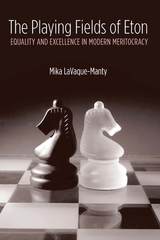 The Playing Fields of Eton: Equality and Excellence in Modern Meritocracy
Mika LaVaque-Manty
University of Michigan Press, 2009 "Beautifully written and brilliantly argued, The Playing Fields of Eton takes us on a three-century tour of modern mental and physical life. We visit gymnasiums and dueling fields, murderball courts and Olympic venues, and while immersed in thought-provoking stories of people wrestling with the twin pursuit of equality and excellence, we find ourselves learning what it might mean to be modern. With equal measures of erudition and gentle humor, Mika LaVaque-Manty convincingly refutes the view that egalitarian progress forecloses possibilities for human excellence."
---Elisabeth Ellis, Texas A&M University "A very insightful and clearly written philosophical inquiry into the nature of sport."
---Marion Smiley, Brandeis University "A marvelously original analysis of the tensions---and interdependence---between equality and excellence in modern political life. From eighteenth-century dueling to contemporary doping in sports, LaVaque-Manty illuminates the bodily life of democracy at play, and challenges us to think in new ways about the connections between achievement and autonomy. The Playing Fields of Eton is an important book that pushes liberal and democratic theory in fruitful new directions."
---Sharon Krause, Brown University Can equality and excellence coexist? If we assert that no person stands above the rest, can we encourage and acknowledge athletic, artistic, and intellectual achievements? Perhaps equality should merely mean equality of opportunity. But then how can society reconcile inherent differences between men and women, the strong and the weak, the able-bodied and the disabled? In The Playing Fields of Eton, Mika LaVaque-Manty addresses questions that have troubled philosophers, reformers, and thoughtful citizens for more than two centuries. Drawing upon examples from the eighteenth-century debate over dueling as a gentleman's prerogative to recent controversies over athletes' use of performance-enhancing drugs, LaVaque-Manty shows that societies have repeatedly redefined equality and excellence. One constant remains, however: sports provide an arena for working out tensions between these two ideals. Just as in sports where athletes are sorted by age, sex, and professional status, in modern democratic society excellence has meaning only in the context of comparisons among individuals who are, theoretically, equals. LaVaque-Manty's argument will engage philosophers, and his inviting prose and use of familiar illustrations will welcome nonphilosophers to join the conversation. Mika LaVaque-Manty is Associate Professor of Political Science at the University of Michigan.
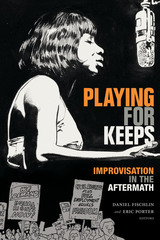 Playing for Keeps: Improvisation in the Aftermath
Daniel Fischlin and Eric Porter
Duke University Press, 2020 The contributors to Playing for Keeps examine the ways in which musical improvisation can serve as a method for negotiating violence, trauma, systemic inequality, and the aftermaths of war and colonialism. Outlining the relation of improvisatory practices to local and global power structures, they show how in sites as varied as South Africa, Canada, Egypt, the United States, and the Canary Islands, improvisation provides the means for its participants to address the past and imagine the future. In addition to essays, the volume features a poem by saxophonist Matana Roberts, an interview with pianist Vijay Iyer about his work with U.S. veterans of color, and drawings by artist Randy DuBurke that chart Nina Simone's politicization. Throughout, the contributors illustrate how improvisation functions as a model for political, cultural, and ethical dialogue and action that can foster the creation of alternate modes of being and knowing in the world.
Contributors. Randy DuBurke, Rana El Kadi, Kevin Fellezs, Daniel Fischlin, Kate Galloway, Reem Abdul Hadi, Vijay Iyer, Mark Lomanno, Moshe Morad, Eric Porter, Sara Ramshaw, Matana Roberts, Darci Sprengel, Paul Stapleton, Odeh Turjman, Stephanie Vos
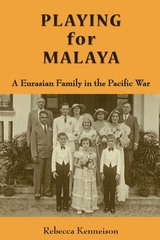 Playing for Malaya: A Eurasian Family in the Pacific War
Rebecca Kenneison
National University of Singapore Press, 2011 Reggie, according to his niece Wendy, 'only told you what Reggie wanted you to know.' Reggie was my father. He had honed the technique of talking with apparent openness and using that talk as a decoy duck: while you were listening to it quack around the pond, you weren't noticing all the others hiding in the reeds. What follows includes tales that Reggie told repeatedly but, on the whole, it's about what Reggie didn't tell me.
So begins a stunning personal account of a Eurasian family living in Malaya. One of the many gaps in Reggie's account of his family was that his mother was Eurasian. When Rebecca Kenneison discovered this omission after his death, she set out to learn more about her extended family on the other side of the world. Her voyage of discovery is compelling in itself, but Playing for Malaya has a much larger purpose. Set in the 1930s and 1940s, it recounts the experiences of an extended Eurasian family during the invasion and occupation of Malaya by the Japanese. Colonial society considered Eurasians insufficiently European to be treated as British, but they seemed all too European to the Japanese, who subjected the Eurasian community to discrimination and considerable violence. Because many Eurasians, including members of the Kenneison family, supported the Allied cause, their wartime experiences are an extraordinary account of tragedy, heroism and endurance, presented here with great consequence and clarity.
Playing for Power: Black Resistance in Amateur Basketball and Football in Jim Crow Virginia
Marvin T. Chiles
University of Alabama Press, 2025 In this groundbreaking study, Marvin T. Chiles uncovers how amateur Black football and basketball in segregated Virginia became powerful tools of resistance against white supremacy. Spanning from the 1890s to the 1970s, Chiles reveals how sports at HBCUs and in Black communities fostered leadership, pride, and unity—laying cultural foundations for the Civil Rights Movement. A compelling read for anyone interested in the intersection of race, sports, and social change.
 Playing for Time Theatre Company: Perspectives from the Prison
Edited by Annie McKean and Kate Massey-Chase
Intellect Books, 2018 Based on more than a decade of practice, Playing for Time Theatre Company presents the reader with a rich and invaluable resource for using theatre in criminal justice contexts, exploring ideas of identity, community, social justice and the power of the arts. The book analyses and reflects upon the company’s evolution and unique model of practice, with university students and prisoners working side-by-side, led by industry professionals. The work draws on diverse methodologies and approaches, with chapters written from multiple perspectives, including a forensic psychologist, director, playwright, historian, student, and ex-prisoners. Crucially, the voices and reflections of participating prisoners are central to the book. Providing unprecedented access to a significant body of prison theatre, Playing for Time Theatre Company presents both an overview and analysis of an extensive body of work, as well as offering perspectives on the efficacy of arts practice in the UK criminal justice system from 2000 onwards.
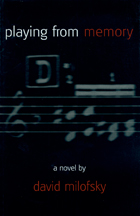 Playing from Memory
David Milofsky
University Press of Colorado, 1999 Playing From Memory is a deeply moving, compassionate novel about the power of marriage to survive under stress, a love story that tells of a musician's courageous battle against a degenerative illness and his wife's struggle to face the end of their life together. Ben Seidler, an intense, passionately committed violist, is at the height of his career as a member of the Casa Bella Quartet, one of the foremost string quartets in the nation. His gifts as a concert artist had always been intuitive, but love did not come so easily. It took determination to win the hand of his wife, Dory, who was reluctant to set aside her ambitions of becoming an artist. Their marriage is at once complex and ordinary, balancing the rigors of long rehearsal sessions against the daily round of family life with their two sons. Then suddenly the rhythm of their lives is shattered when Ben falls victim to multiple sclerosis. Stubbornly independent, Ben refuses to rely on others until necessity forces him to see that there are things beyond his control. Through a new closeness with his aging father, his older son, and, most importantly, Dory, he learns to accept help and to appreciate human frailty and affection. As Ben's health declines, Dory is forced to resume her career and compete in a world dominated by men, and to re-examine her feelings and commitment to her husband. As their lives change, so does their marriage, and Ben and Dory forge a new kind of love, a fierce love that sustains them through everything.
 Playing God?: Human Genetic Engineering and the Rationalization of Public Bioethical Debate
John H. Evans
University of Chicago Press, 2001 Technology evolves at a dazzling speed, and nowhere more so than in the field of genetic engineering, where the possibility of directly changing the genes of one's children is quickly becoming a reality. The public is rightly concerned, but interestingly, they have not had much to say about the implications of recent advancements in human genetics.
Playing God? asks why and explores the social forces that have led to the thinning out of public debate over human genetic engineering. John H. Evans contends that the problem lies in the structure of the debate itself. Disputes over human genetic engineering concern the means for achieving assumed ends, rather than being a healthy discussion about the ends themselves. According to Evans, this change in focus occurred as the jurisdiction over the debate shifted from scientists to bioethicists, a change which itself was caused by the rise of the bureaucratic state as the authority in such matters. The implications of this timely study are twofold. Evans not only explores how decisions about the ethics of human genetic engineering are made, but also shows how the structure of the debate has led to the technological choices we now face.
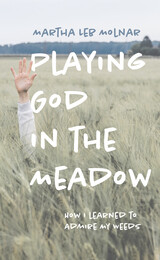 Playing God in the Meadow: How I Learned to Admire My Weeds
Martha Leb Molnar
University of Massachusetts Press, 2022 After decades of fantasizing and saving, of working multiple jobs and embracing frugality in the midst of Manhattan, Martha Leb Molnar and her husband had found their parcel of land. Determined to turn an overgrown and unproductive Vermont apple orchard into a thriving and beautiful landscape, they decided to restore this patch of land to a pristine meadow and build a safe haven for their family and nearby wildlife. Once they cleared the gnarled and dying trees away, Molnar was forced to wage war on the invasive species that had sprung up around the property. Propelled by the heated debates surrounding non-native species and her own complicated family history and migration, she was driven to research the Vermont landscape, turning to scientific literature, experts in botany and environmental science, and locals who have long tended the land in search of answers. At turns funny, thoughtful, and conversational, Playing God in the Meadow follows this big city transplant as she learns to make peace with rural life and an evolving landscape that she cannot entirely control.
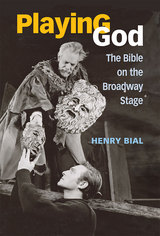 Playing God: The Bible on the Broadway Stage
Henry Bial
University of Michigan Press, 2015 Biblical texts have inspired more than 100 Broadway plays and musicals, ranging from early spectacles like Ben-Hur (1899) to more familiar works such as Godspell and Jesus Christ Superstar. What happens when a culture’s most sacred text enters its most commercial performance venue? Playing God focuses on eleven successful productions, as well as a few notable flops that highlight the difficulties in adapting the Old and New Testaments for the stage. The book is informed by both performance studies and theater history, combining analysis of play scripts with archival research into the actual circumstances of production and reception. Biblical plays, Henry Bial argues, balance religious and commercial considerations through a complex blend of spectacle, authenticity, sincerity, and irony. Though there is no magic formula for a successful adaptation, these four analytical lenses help explain why some biblical plays thrive while others have not.
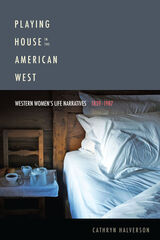 Playing House in the American West: Western Women's Life Narratives, 1839–1987
Cathryn Halverson
University of Alabama Press, 2013 Examines an eclectic group of western women’s autobiographical texts—canonical and otherwise—Playing House in the American West argues for a distinct regional literary tradition characterized by strategic representations of unconventional domestic life
The controlling metaphor Cathryn Halverson uses in her engrossing study is “playing house.” From Caroline Kirkland and Laura Ingalls Wilder to Willa Cather and Marilynne Robinson, from the mid-nineteenth to the late-twentieth centuries, western authors have persistently embraced wayward or eccentric housekeeping to prove a woman’s difference from western neighbors and eastern readers alike.
The readings in Playing House investigate the surprising textual ends to which westerners turn the familiar terrain of the home: evaluating community; arguing for different conceptions of race and class; and perhaps most especially, resisting traditional gender roles. Western women writers, Halverson argues, render the home as a stage for autonomy, resistance, and imagination rather than as a site of sacrifice and obligation.
The western women examined in Playing House in the American West are promoted and read as representatives of a region, as insiders offering views of distant and intriguing ways of life, even as they conceive of themselves as outsiders. By playing with domestic conventions, they recast the region they describe, portraying the West as a place that fosters female agency, individuality, and subjectivity.
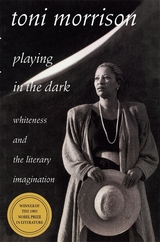 Playing in the Dark: Whiteness and the Literary Imagination
Toni Morrison
Harvard University Press, 1992 Pulitzer Prize–winning novelist Toni Morrison brings the genius of a master writer to this personal inquiry into the significance of African-Americans in the American literary imagination. Her goal, she states at the outset, is to “put forth an argument for extending the study of American literature…draw a map, so to speak, of a critical geography and use that map to open as much space for discovery, intellectual adventure, and close exploration as did the original charting of the New World—without the mandate for conquest.”
Author of Beloved, The Bluest Eye, Song of Solomon, and other vivid portrayals of black American experience, Morrison ponders the effect that living in a historically racialized society has had on American writing in the nineteenth and twentieth centuries. She argues that race has become a metaphor, a way of referring to forces, events, and forms of social decay, economic division, and human panic. Her compelling point is that the central characteristics of American literature individualism, masculinity, the insistence upon innocence coupled to an obsession with figurations of death and hell—are responses to a dark and abiding Africanist presence.
Through her investigation of black characters, narrative strategies, and idiom in the fiction of white American writers, Morrison provides a daring perspective that is sure to alter conventional notions about American literature. She considers Willa Cather and the impact of race on concept and plot; turns to Poe, Hawthorne, and Melville to examine the black force that figures so significantly in the literature of early America; and discusses the implications of the Africanist presence at the heart of Huckleberry Finn. A final chapter on Ernest Hemingway is a brilliant exposition of the racial subtext that glimmers beneath the surface plots of his fiction.
Written with the artistic vision that has earned her a preeminent place in modern letters, Playing in the Dark will be avidly read by Morrison admirers as well as by students, critics, and scholars of American literature.
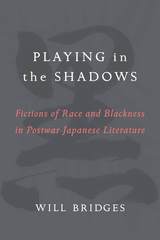 Playing in the Shadows: Fictions of Race and Blackness in Postwar Japanese Literature
William Bridges
University of Michigan Press, 2020 Playing in the Shadows considers the literature engendered by postwar Japanese authors’ robust cultural exchanges with African Americans and African American literature. The Allied Occupation brought an influx of African American soldiers and culture to Japan, which catalyzed the writing of black characters into postwar Japanese literature. This same influx fostered the creation of organizations such as the Kokujin kenkyū no kai (The Japanese Association for Negro Studies) and literary endeavors such as the Kokujin bungaku zenshū (The Complete Anthology of Black Literature). This rich milieu sparked Japanese authors’—Nakagami Kenji and Ōe Kenzaburō are two notable examples—interest in reading, interpreting, critiquing, and, ultimately, incorporating the tropes and techniques of African American literature and jazz performance into their own literary works. Such incorporation leads to literary works that are “black” not by virtue of their representations of black characters, but due to their investment in the possibility of technically and intertextually black Japanese literature. Will Bridges argues that these “fictions of race” provide visions of the way that postwar Japanese authors reimagine the ascription of race to bodies—be they bodies of literature, the body politic, or the human body itself.
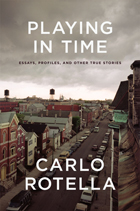 Playing in Time: Essays, Profiles, and Other True Stories
Carlo Rotella
University of Chicago Press, 2012 From jazz fantasy camp to running a movie studio; from a fight between an old guy and a fat guy to a fear of clowns—Carlo Rotella’s Playing in Time delivers good stories full of vivid characters, all told with the unique voice and humor that have garnered Rotella many devoted readers in the New York Times Magazine, Boston Globe, and Washington Post Magazine, among others. The two dozen essays in Playing in Time, some of which have never before been published, revolve around the themes and obsessions that have characterized Rotella’s writing from the start: boxing, music, writers, and cities. What holds them together is Rotella’s unique focus on people, craft, and what floats outside the mainstream. “Playing in time” refers to how people make beauty and meaning while working within the constraints and limits forced on them by life, and in his writing Rotella transforms the craft and beauty he so admires in others into an art of his own.
Rotella is best known for his writings on boxing, and his essays here do not disappoint. It’s a topic that he turns to for its colorful characters, compelling settings, and formidable life lessons both in and out of the ring. He gives us tales of an older boxer who keeps unretiring and a welterweight who is “about as rich and famous as a 147-pound fighter can get these days,” and a hilarious rumination on why Muhammad Ali’s phrase “I am the greatest” began appearing (in the mouth of Epeus) in translations of The Iliad around 1987. His essays on blues, crime and science fiction writers, and urban spaces are equally and deftly engaging, combining an artist’s eye for detail with a scholar’s sense of research, whether taking us to visit detective writer George Pelecanos or to dance with the proprietress of the Baby Doll Polka Club next to Midway Airport in Chicago.
Rotella’s essays are always smart, frequently funny, and consistently surprising. This collection will be welcomed by his many fans and will bring his inimitable style and approach to an even wider audience.
 Playing Nature: Ecology in Video Games
Alenda Y. Chang
University of Minnesota Press, 2019 A potent new book examines the overlap between our ecological crisis and video games
Video games may be fun and immersive diversions from daily life, but can they go beyond the realm of entertainment to do something serious—like help us save the planet? As one of the signature issues of the twenty-first century, ecological deterioration is seemingly everywhere, but it is rarely considered via the realm of interactive digital play. In Playing Nature, Alenda Y. Chang offers groundbreaking methods for exploring this vital overlap. Arguing that games need to be understood as part of a cultural response to the growing ecological crisis, Playing Nature seeds conversations around key environmental science concepts and terms. Chang suggests several ways to rethink existing game taxonomies and theories of agency while revealing surprising fundamental similarities between game play and scientific work. Gracefully reconciling new media theory with environmental criticism, Playing Nature examines an exciting range of games and related art forms, including historical and contemporary analog and digital games, alternate- and augmented-reality games, museum exhibitions, film, and science fiction. Chang puts her surprising ideas into conversation with leading media studies and environmental humanities scholars like Alexander Galloway, Donna Haraway, and Ursula Heise, ultimately exploring manifold ecological futures—not all of them dystopian.
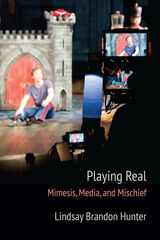 Playing Real: Mimesis, Media, and Mischief
Lindsay Brandon Hunter
Northwestern University Press, 2021 Playing Real: Mimesis, Media, and Mischief explores the integration and interaction of mimetic theatricality and representational media in twentieth- and twenty‑first-century performance. It brings together carefully chosen sites of performance—including live broadcasts of theatrical productions, reality television, and alternate-reality gaming—in which mediatization and mimesis compete and collude to represent the real to audiences. Lindsay Brandon Hunter reads such performances as forcing confrontation between notions of authenticity, sincerity, and spontaneity and their various others: the fake, the feigned, the staged, or the rehearsed. Each site examined in Playing Real purports to show audiences something real—real theater, real housewives, real alternative scenarios—which is simultaneously visible as overtly constructed, adulterated by artifice and artificiality. The integration of mediatization and theatricality in these performances, Hunter argues, exploits the proclivities of both to conjure the real even as they risk corrupting the perception of authenticity by imbricating it with artifice and overt manipulation. Although the performances analyzed obscure boundaries separating actual from virtual, genuine from artificial, and truth from fiction, Hunter rejects the notion that these productions imperil the “real.” She insists on uncertainty as a fertile site for productive and pleasurable mischief—including relationships to realness and authenticity among both audience and participants.
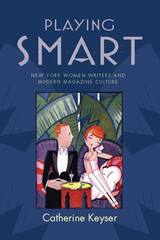 Playing Smart: New York Women Writers and Modern Magazine Culture
Keyser, Catherine
Rutgers University Press, 2010 Smart women, sophisticated ladies, savvy writers . . . Edna St. Vincent Millay, Dorothy Parker, Anita Loos, Lois Long, Jessie Fauset, Dawn Powell, Mary McCarthy, and others imagined New York as a place where they could claim professional status, define urban independence, and shrug off confining feminine roles. It might be said that during the 1920s and 1930s these literary artists painted the town red on the pages of magazines like Vanity Fair and the New Yorker. Playing Smart, Catherine Keyser's homage to their literary genius, is a captivating celebration of their causes and careers.
Through humor writing, this "smart set" expressed both sides of the story-promoting their urbanity and wit while using irony and caricature to challenge feminine stereotypes. Their fiction raised questions about what it meant to be a woman in the public eye, how gender roles would change because men and women were working together, and how the growth of the magazine industry would affect women's relationships to their bodies and minds. Keyser provides a refreshing and informative chronicle, saluting the value of being "smart" as incisive and innovative humor showed off the wit and talent of women writers and satirized the fantasy world created by magazines.
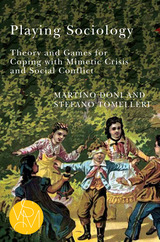 Playing Sociology: Theory and Games for Coping with Mimetic Crisis and Social Conflict
Martino Doni
Michigan State University Press, 2024 Play is a key part of human relationships, and we engage in it during every stage and in every facet of our lives. We develop games to include decision-making, risk, chance, competition, and cooperation, which mirror how we navigate social engagement in our everyday lives. In Playing Sociology: Theory and Games for Coping with Mimetic Crisis and Social Conflict, Martino Doni and Stefano Tomelleri employ gaming as a lens through which they analyze the underlying and sometimes hidden aspects of social relationships and conventions. They also provide five sociological games that can be played by teams in workplaces, classrooms, and other settings to encourage creative thinking and to create abstract ways to explore systemic or ongoing conflicts among group members. This research offers a new way to look at and participate in relational dynamics in both theory and practice.
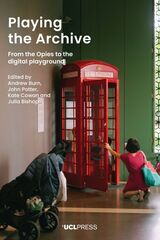 Playing the Archive: From the Opies to the Digital Playground
Edited by Andrew Burn, John Potter, Kate Cowan, and Julia Bishop
University College London, 2025 An interdisciplinary exploration of childhood play, blending archival research, digital innovation, and children’s voices to reveal the evolving nature of games and storytelling across generations.
Playing the Archive: From the Opies to the Digital Playground revisits the trailblazing work of Iona and Peter Opie, who documented children’s playground games, rhymes, and traditions in mid-20th century Britain, and brings their research into the digital age. Through a major new study, this book explores how children’s play has evolved, drawing on fresh ethnographic research, digital storytelling, and interactive media to compare past and present-day playground cultures.
By making the Opie Archive publicly accessible and involving children through digital interfaces, the project opens up new ways of understanding play as a dynamic, ever-changing practice. The chapters offer novel theoretical insights into the shifting landscapes of play, considering the role of archives and digital media in shaping children’s cultural expressions. Playing the Archive questions stereotypes about childhood in the digital era, positioning children as active creators of their own play cultures.
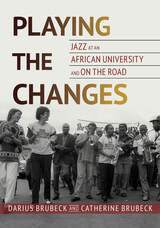 Playing the Changes: Jazz at an African University and on the Road
Darius Brubeck and Catherine Brubeck
University of Illinois Press, 2024 Catherine and Darius Brubeck’s 1983 move to South Africa launched them on a journey that helped transform jazz education. Blending biography with storytelling, the pair recount their time at the University of KwaZulu-Natal, where they built a pioneering academic program in jazz music and managed and organized bands, concerts, and tours around the world. The Brubecks and the musicians faced innumerable obstacles, from the intensification of apartheid and a lack of resources to the hardscrabble lives that forced even the most talented artists to the margins. Building a program grounded in multi-culturalism, Catherine and Darius encouraged black and white musicians to explore and expand the landscape of South African jazz together Their story details the sometimes wily, sometimes hilarious problem-solving necessary to move the institution forward while offering insightful portraits of South African jazz players at work, on stage, and providing a soundtrack to the freedom struggle and its aftermath. Frank and richly detailed, Playing the Changes provides insiders’ accounts of how jazz intertwined with struggle and both expressed and resisted the bitter unfairness of apartheid-era South Africa.
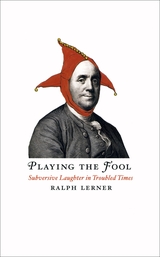 Playing the Fool: Subversive Laughter in Troubled Times
Ralph Lerner
University of Chicago Press, 2009 The role of the fool is to provoke the powerful to question their convictions, preferably while avoiding a beating. Fools accomplish this not by hectoring their audience, but by broaching sensitive topics indirectly, often disguising their message in a joke or a tale. Writers and thinkers throughout history have adopted the fool’s approach, and here Ralph Lerner turns to six of them—Thomas More, Francis Bacon, Robert Burton, Pierre Bayle, Benjamin Franklin, and Edward Gibbon—to elucidate the strategies these men employed to persuade the heedless, the zealous, and the overly confident to pause and reconsider. As Playing the Fool makes plain, all these men lived through periods marked by fanaticism, particularly with regard to religion and its relation to the state. In such a troubled context, advocating on behalf of skepticism and against tyranny could easily lead to censure, or even, as in More’s case, execution. And so, Lerner reveals, these serious thinkers relied on humor to move their readers toward a more reasoned understanding of the world and our place in it. At once erudite and entertaining, Playing the Fool is an eloquently thought-provoking look at the lives and writings of these masterly authors.
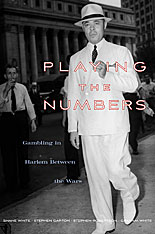 Playing the Numbers: Gambling in Harlem between the Wars
Shane White, Stephen Garton, Stephen Robertson, and Graham White
Harvard University Press, 2010 The phrase “Harlem in the 1920s” evokes images of the Harlem Renaissance, or of Marcus Garvey and soapbox orators haranguing crowds about politics and race. Yet the most ubiquitous feature of Harlem life between the world wars was the game of “numbers.” Thousands of wagers, usually of a dime or less, would be placed on a daily number derived from U.S. bank statistics. The rewards of “hitting the number,” a 600-to-1 payoff, tempted the ordinary men and women of the Black Metropolis with the chimera of the good life. Playing the Numbers tells the story of this illegal form of gambling and the central role it played in the lives of African Americans who flooded into Harlem in the wake of World War I.
For a dozen years the “numbers game” was one of America’s rare black-owned businesses, turning over tens of millions of dollars every year. The most successful “bankers” were known as Black Kings and Queens, and they lived royally. Yet the very success of “bankers” like Stephanie St. Clair and Casper Holstein attracted Dutch Schultz, Lucky Luciano, and organized crime to the game. By the late 1930s, most of the profits were being siphoned out of Harlem.
Playing the Numbers reveals a unique dimension of African American culture that made not only Harlem but New York City itself the vibrant and energizing metropolis it was. An interactive website allows readers to locate actors and events on Harlem’s streets.
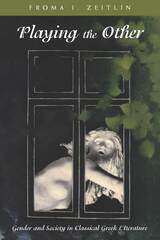 Playing the Other: Gender and Society in Classical Greek Literature
Froma I. Zeitlin
University of Chicago Press, 1995 Relations between the sexes was a pervasive concern of ancient Greek thought and literature, extending from considerations of masculine and feminine roles in domestic and political spheres to the organization of the cosmos in a pantheon of gods and goddesses. In Playing the Other Froma Zeitlin explores the diversity and complexity of these interactions through the most influential literary texts of the archaic and classical periods ranging from epic (Homer) and didactic poetry (Hesiod) to the theatrical productions of tragedy and comedy in fifth-century Athens.
Zeitlin demonstrates the indispensable workings of gender as a major factor in Greek social, religious, and cultural practices and in more abstract ideas about nature and culture, public and private, citizen and outsider, self and other, and mortal and immortal. Focusing on the prominence of female figures in these male authored texts, she enlarges our perspective on critical components of political order and civic identity by including issues of sexuality, the body, modes of male and female maturation, and speculations about parentage, kinship, and reproductive strategies. Along with considerations of genre, poetics, and theatrical mimesis, she points to the powerful mythmaking capacities of Greek culture for creating memorable paradigms and dramatic scenarios that far exceed simple notions of male and female opposition and predictable enforcement of social norms. Consisting of both new and revised essays, Playing the Other is a wide-ranging account of a central category of Greek literature by a scholar who pioneered an approach to classics through the perspective of gender.
 Playing the Past: History and Nostalgia in Video Games
Zach Whalen
Vanderbilt University Press, 2008 Playing the Past brings together a group of interdisciplinary scholars to examine the complementary notions of history and nostalgia as they are expressed through video games and in gaming culture. The scope of these related concepts moves from the personal to the cultural, and essays in this collection address video game nostalgia as both an individual and societal phenomenon, connecting the fond memories many of us have of classic gaming to contemporary representations of historical periods and events in video games. From Ms. Pac-Man and Space Invaders to Call of Duty and JFK: Reloaded, the games many of us have played since childhood inform how we see the world today, and the games we make and play today help us communicate ideas about real world history. By focusing on specific games, historical periods and media ecologies, these essays collectively take an in depth look at the related topics of nostalgia for classic gaming, gaming and histories of other media, and representations of real history in video games.
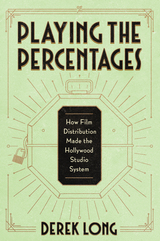 Playing the Percentages: How Film Distribution Made the Hollywood Studio System
Derek Long
University of Texas Press, 2024 A history of film distribution in the United States from the 1910s to the 1930s, concentrating on booking, circuiting, and packaging marketing practices. Told not as a “golden age” narrative of films, stars, or individual studios but as an economic history of the industry’s film distribution practices, Playing the Percentages is the story of how Hollywood’s vertically integrated studio system came to be. Studying the history of distribution during the growth of Hollywood, Derek Long makes a case for the domination of the studio system as the result of struggles over distribution practices. Through a combination of archival research, critical surveys of the film industry trade press, and economic analysis, Long uncovers a complex and ever-shifting system of wrangling between distributors and exhibitors. Challenging the overemphasis within scholarship on “block booking” as a monolithic distribution mode, and attending to distribution practices beyond simple circulation, Long highlights the crucial changes in film distribution brought about by live theater, the rise of features, and the transition to sound. Playing the Percentages is a comprehensive history of film distribution in the United States during the silent era that illustrates the importance of power struggles between distributors and exhibitors over booking, pricing, and playing time.
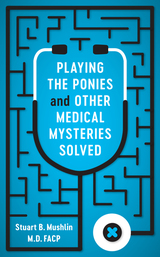 Playing the Ponies and Other Medical Mysteries Solved
Stuart B. Mushlin, MD, FACP
Rutgers University Press, 2017 2017 Choice Outstanding Academic Title
With over forty years of experience as a sought after diagnostician, Dr. Stuart Mushlin has cracked his share of medical mysteries, ones in which there are bigger gambles than playing the ponies at the track. Some of his patients show up with puzzling symptoms, calling for savvy medical detective work. Others seem to present cut-and-dry cases, but they turn out to be suffering from rare or serious conditions.
In Playing the Ponies and Other Medical Mysteries Solved, Dr. Mushlin shares some of the most intriguing cases he has encountered, revealing the twists and turns of each patient’s diagnosis and treatment process. Along the way, he imparts the secrets to his success as a medical detective—not specialized high-tech equipment, but time-honored techniques like closely observing, touching, and listening to patients. He also candidly describes cases where he got things wrong, providing readers with honest insights into both the joys and dilemmas of his job.
Dr. Mushlin does not just treat diseases; he treats people. And this is not just a book about the ailments he diagnosed; it is also about the scared, uncertain, ailing individuals he helped in the process. Filled with real-life medical stories you’ll have to read to believe, Playing the Ponies is both a suspenseful page-turner and a heartfelt reflection on a life spent caring for patients.
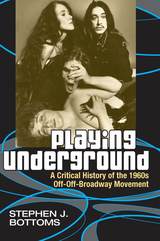 Playing Underground: A Critical History of the 1960s Off-Off-Broadway Movement
Stephen J. Bottoms
University of Michigan Press, 2004 "Scrupulously researched, critically acute, and written with care, Playing Underground will become a classic account of an era of hard-won free expression."
-William Coco
"At last---a book documenting the beginnings of Off-Off Broadway theater. Playing Underground is an insightful, illuminating, and honest appraisal of this important period in American theater."
-Rosalyn Drexler, author of Art Does (Not!) Exist and Occupational Hazard
"An epic movie of an epic movement, Playing Underground is a book the world has waited for without knowing it. How precisely it captures the evolution of our revolution! I am amazed by the book's scope and scale, and I bless its author especially for giving two greats, Paul Foster and H. M. Koutoukas, their proper, polar places, and for memorializing such unjustly forgotten masterpieces as Irene Fornes's Molly's Dream and Jeff Weiss's A Funny Walk Home. Stephen Bottoms's vivid evocation of the grand adventure of Off-Off Broadway has woken and broken my heart. It is difficult to believe that he was not there alongside me to breathe the caffeine-nicotine-alkaloid-steeped air."
-Robert Patrick, author of Kennedy's Children and Temple Slave
Few books address the legendary age of 1960s off-off Broadway theater. Fortunately, Stephen Bottoms fills that gap with Playing Underground---the first comprehensive history of the roots of off-off Broadway.
This is a theater whose legacy is still felt today: it was the launching pad for many leading contemporary theater artists, including Sam Shepard, Maria Irene Fornes, and others, and it was a pivotal influence on improv comedy and shows like Saturday Night Live.
Off-off Broadway groups such as the Living Theatre, La Mama, and Caffe Cino captured the spirit of nontraditional theater with their edgy, unscripted, boundary-crossing subjects. Yet, as Bottoms discovers, there is no one set of truths about off-off Broadway to uncover; the entire scene was always more a matter of competing perceptions than a singular, concrete reality.
No other author has managed to illuminate this shifting tableau as Bottoms does. Through interviews with dozens of the era's leading playwrights, performers, directors, and critics, he unearths a countercultural theater movement that was both influential and transforming-yet ephemeral and quintessentially of its moment.
Playing Underground will be a definitive work on the subject, offering a complete picture of an important but little-studied period in American theater.
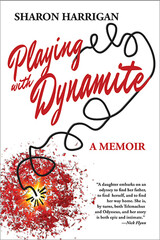 Playing with Dynamite
Sharon Harrigan
University of Wisconsin Press, 2017 Sharon Harrigan’s father was larger than life, a brilliant but troubled man who blew off his hand with dynamite before she was born and died in a mysterious and bizarre accident when she was seven. The story of his death never made sense. How did he really die? And why was she so sure that asking would be dangerous? A series of events compel her to find the answers, collecting other people’s memories and uncovering her own. Her two-year odyssey takes her from Virginia to Detroit to Paris and finally to the wilds of northern Michigan where her father died. There, she discovers the real danger and has to confront her fear.
Playing with Dynamite is about the family secrets that can distance us from each other and the honesty that can bring us closer. It’s about a daughter who goes looking for her father but finds her mother instead. It’s about memory and truth, grieving and growing, and what it means to go home again.
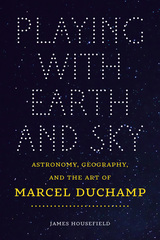 Playing with Earth and Sky: Astronomy, Geography, and the Art of Marcel Duchamp
James Housefield
Dartmouth College Press, 2016 Playing with Earth and Sky reveals the significance astronomy, geography, and aviation had for Marcel Duchamp—widely regarded as the most influential artist of the past fifty years. Duchamp transformed modern art by abandoning unique art objects in favor of experiences that could be both embodied and cerebral. This illuminating study offers new interpretations of Duchamp’s momentous works, from readymades to the early performance art of shaving a comet in his hair. It demonstrates how the immersive spaces and narrative environments of popular science, from museums to the modern planetarium, prepared paths for Duchamp’s nonretinal art. By situating Duchamp’s career within the transatlantic cultural contexts of Dadaism and Surrealism, this book enriches contemporary debates about the historical relationship between art and science. This truly original study will appeal to a broad readership in art history and cultural studies.
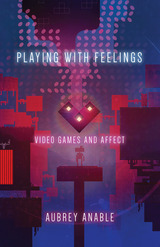 Playing with Feelings: Video Games and Affect
Aubrey Anable
University of Minnesota Press, 2018 How gaming intersects with systems like history, bodies, and code
Why do we so compulsively play video games? Might it have something to do with how gaming affects our emotions? In Playing with Feelings, scholar Aubrey Anable applies affect theory to game studies, arguing that video games let us “rehearse” feelings, states, and emotions that give new tones and textures to our everyday lives and interactions with digital devices. Rather than thinking about video games as an escape from reality, Anable demonstrates how video games—their narratives, aesthetics, and histories—have been intimately tied to our emotional landscape since the emergence of digital computers. Looking at a wide variety of video games—including mobile games, indie games, art games, and games that have been traditionally neglected by academia—Anable expands our understanding of the ways in which these games and game studies can participate in feminist and queer interventions in digital media culture. She gives a new account of the touchscreen and intimacy with our mobile devices, asking what it means to touch and be touched by a game. She also examines how games played casually throughout the day create meaningful interludes that give us new ways of relating to work in our lives. And Anable reflects on how games allow us to feel differently about what it means to fail. Playing with Feelings offers provocative arguments for why video games should be seen as the most significant art form of the twenty-first century and gives the humanities passionate, incisive, and daring arguments for why games matter.
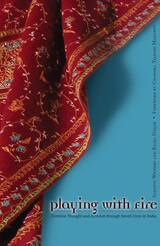 Playing With Fire: Feminist Thought And Activism Through Seven Lives In India
Sangtin Sangtin Writers
University of Minnesota Press, 2006 Seven voices contribute to this rare glimpse of the work being done on the front lines of the fight for social change in India. Playing with Fire is written in the collective voice of women employed by a large NGO as activists in their communities and is based on diaries, interviews, and conversations among them. Together their personal stories reveal larger themes and questions of sexism, casteism, and communalism, and a startling picture emerges of how NGOs both nourish and stifle local struggles for solidarity. The Hindi edition of the book, Sangtin Yatra, published in 2004, created controversy that resulted in backlash against the authors by their employer. The publication also drew support for the women and instigated a public conversation about the issues exposed in the book. Here, Richa Nagar addresses the dispute in the context of the politics of NGOs and feminist theory, articulating how development ideology employed by aid organizations serves to reinforce the domination of those it claims to help. The Sangtin Writers, Anupamlata, Ramsheela, Reshma Ansari, Richa Singh, Shashibala, Shashi Vaish, Surbala, and Vibha Bajpayee, are grassroots activists and members of a small organization called Sangtin in Uttar Pradesh, India. Richa Nagar teaches women’s studies at the University of Minnesota.
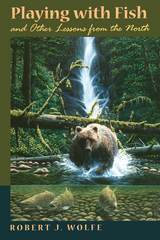 Playing with Fish and Other Lessons from the North
Robert J. Wolfe
University of Arizona Press, 2006 According to the Yup’ik Eskimo of Alaska, fish are not to be played with. It’s an adage instilled in children that’s as basic as looking both ways before crossing the street, but at its heart lies a concern for nature. Yup’ik traditions are tested each generation by this people’s struggle for survival, the admonition not to play with fish has been further tested by the arrival of sport fishing from the south. Worlds are colliding—whose will emerge unscathed? Robert J. Wolfe, a cultural anthropologist from California, spent twenty years in Alaska documenting the traditional hunting and fishing practices of Alaska Natives. During that northern sojourn he discovered much about sustainable relationships between people and nature and about the basis of meaningful communities. In Playing with Fish he has crafted a series of thought-provoking essays on nature, culture, and the human condition that convey unsuspected lessons from the North. In contrasting California and Alaska—worlds far apart yet connected by peoples, cultural traditions, and ecology—Wolfe not only draws distinctions between compass points, he also conveys memorable stories about nature and life. He depicts bears and humans as both neighbors and ancient adversaries, and how cultural views about bears can destroy or preserve those relationships. He shows us Alaskan villages where security is found not in locks but in neighbors, unlike electronically sealed suburban California homes, their lawns studded with security signs. And he describes the peaceful resolution of conflict between California bird hunters and Eskimos of the Bering Sea coast over declining geese numbers, where small humanizing acts tipped the balance in favor of cooperation. Blending insights into subjects as diverse as music and chaos theory, Wolfe challenges readers to reflect on their own personal conduct within nature and within our multicultural world. Playing with Fish is a delightful and insightful collection of modern parables that offer a new way of looking at cultural and ecological issues, reminding us that the road between two worlds is always a two-way street.
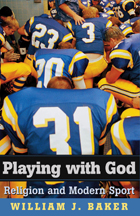 Playing with God: Religion and Modern Sport
William J. Baker
Harvard University Press, 2007 The spectacle of modern sport displays all the latest commercial and technological innovations, yet age-old religious concerns still thrive at the stadium. Coaches lead pre-game and post-game prayers, athletes give God the credit for home runs and touchdowns, and fans wave signs with biblical quotations and allusions. Like no other nation on earth, Americans eagerly blend their religion and sports. Playing with God traces this dynamic relationship from the Puritan condemnation of games as sinful in the seventeenth century to the near deification of athletic contests in our own day.
Early religious opposition to competitive sport focused on the immoderate enthusiasm of players and spectators, the betting on scores, and the preference for playing field over church on Sunday. Disapproval gradually gave way to acceptance when "wholesome recreation" for young men in crowded cities and soldiers in faraway fields became a national priority. Protestants led in the readjustment of attitudes toward sport; Catholics, Jews, Mormons, and Muslims followed. The Irish at Notre Dame, outstanding Jews in baseball, Black Muslims in the boxing ring, and born-again athletes at Liberty University represent the numerous negotiations and compromises producing the unique American mixture of religion and sport.
Playing with History: American Identities and Children’s Consumer Culture
Molly Rosner
Rutgers University Press, 2021 Since the advent of the American toy industry, children’s cultural products have attempted to teach and sell ideas of American identity. By examining cultural products geared towards teaching children American history, Playing With History highlights the changes and constancies in depictions of the American story and ideals of citizenship over the last one hundred years. This book examines political and ideological messages sold to children throughout the twentieth century, tracing the messages conveyed by racist toy banks, early governmental interventions meant to protect the toy industry, influences and pressures surrounding Cold War stories of the western frontier, the fractures visible in the American story at a mid-century history themed amusement park. The study culminates in a look at the successes and limitations of the American Girl Company empire.
Playing with Memories: Essays on Guy Maddin
David Church
University of Manitoba Press, 2009 Playing with Memories is the first collection of scholarly essays on the work of internationally acclaimed Canadian filmmaker Guy Maddin. It offers extensive perspectives on his career to date, from the early experimentation of The Dead Father (1986) to the intensely intimate revelations of My Winnipeg (2007). Featuring new and updated essays from American, Canadian, and Australian scholars, collaborators, and critics, as well as an in-depth interview with Maddin, this collection explores the aesthetics and politics behind Maddin’s work, firmly situating his films within ongoing cultural debates about postmodernism, genre, and national identity.
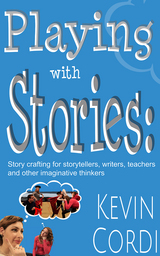 Playing With Stories: Story crafting for storytellers, writers, teachers and other imaginative thinkers
Kevin D. Cordi, Ph.D.
Parkhurst Brothers, Inc., 2014 It has not been easy to value play. Mainstream culture urges us to rush and finish what we are working on to quickly advance to the next task at hand. Too often we must punch our time clock forward without much consideration. As the minutes and hours move, we indirectly communicate both to ourselves and the world no time remains to play; we must work.
Despite that the world around me does not value play, in my creative life, play is necessary. In fact, I have discovered it is the real work I do as an artist and teacher. As a storyteller, writer, teacher, and imaginative thinker, it is play that has produced the most desired results in my life, in my work, and especially, in my creativity. It is in play that we experience who we are and we begin to extend our choices. Play is not consciously prepared; discovery that happens in the moment. It invites reflection. In fact, Plato once shared, “You can discover more about a person in an hour of play than in a year of conversation.”
In this book, you will discover new ways to work with your story craft and find new story direction using play. Indeed, play is a meaningful way to create and learn.
In both childhood and adult play, the imagination plays a central role in the meaning making process. Although there are many types of play: school-based, recess, sports, this work is rooted in play inviting the writer, storyteller, or imaginative thinker to make choices as they work to create meaning in their work.
I will share how collaborative play can increase your choices when making a story. You will find not only exercises to build your story making and telling skills, but pedagogy of practice to use when called to create story.
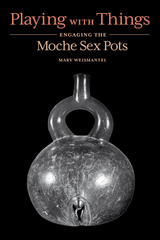 Playing with Things: Engaging the Moche Sex Pots
By Mary Weismantel
University of Texas Press, 2021 Winner, Association for Latin American Art-Arvey Foundation Book Award, 2022 More than a thousand years ago on the north coast of Peru, Indigenous Moche artists created a large and significant corpus of sexually explicit ceramic works of art. They depicted a diversity of sex organs and sex acts, and an array of solitary and interconnected human and nonhuman bodies. To the modern eye, these Moche “sex pots,” as Mary Weismantel calls them, are lively and provocative but also enigmatic creations whose import to their original owners seems impossible to grasp. In Playing with Things, Weismantel shows that there is much to be learned from these ancient artifacts, not merely as inert objects from a long-dead past but as vibrant Indigenous things, alive in their own inhuman temporality. From a new materialist perspective, she fills the gaps left by other analyses of the sex pots in pre-Columbian studies, where sexuality remains marginalized, and in sexuality studies, where non-Western art is largely absent. Taking a decolonial approach toward an archaeology of sexuality and breaking with long-dominant iconographic traditions, this book explores how the pots "play jokes," "make babies," "give power," and "hold water,” considering the sex pots as actual ceramic bodies that interact with fleshly bodies, now and in the ancient past. A beautifully written study that will be welcomed by students as well as specialists, Playing with Things is a model for archaeological and art historical engagement with the liberating power of queer theory and Indigenous studies.
Playlist: Poems
David Lehman
University of Pittsburgh Press, 2019 A New Collection of Poetry from the Editor of The Best American Poetry
Plays
Luigi Pirandello
Northwestern University Press, 1998 “How has the art of theater managed to survive at all into the era of modernism and the era of what is currently, however ineptly, called postmodernism?” asks preeminent theater scholar Eric Bentley. “Through the work of [Luigi] Pirandello, I should think, more than any other single individual.” Bentley’s English versions of four of Pirandello’s most celebrated plays—collected here for the first time—capture the playwright’s voice with remarkable perception. He has provided texts that are the standard for American productions, sensitive both to what is uniquely “Sicilian” in Pirandello’s language and to the rigors of the American stage. Along with Pirandello’s better-known works, Six Characters in Search of an Author, Emperor Henry, and Right You Are, this edition includes the widely performed The Man with the Flower in His Mouth, unavailable in any other collection.
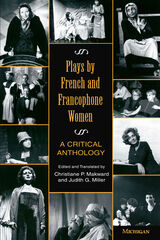 Plays by French and Francophone Women: A Critical Anthology
Christiane P. Makward and Judith G. Miller, Editors
University of Michigan Press, 1994 Plays by French and Francophone Women presents eight recent plays by contemporary French and francophone women writers. The plays vary in style and form from the satirical to the poetic, from the comedic one-woman show to the potential multi-media esoteric production, and have been written by French, Qué becois, Acadian, and Caribbean francophone writers. The editors have provided informative headnotes to introduce each play, then faithful translations rendered with an ear toward production in English. A general introduction to the volume situates each work within the broader context of contemporary French-language theater by women. The volume also includes an annotated bibliography by Cynthia Running-Johnson of thirty-one additional plays by women in French. Featured plays and playwrights are The Scent of Sulphur by S. Corinna Bille; When Fairies Thirst by Denise Boucher; Island Memories by Ina Césaire; Warmth: A Bloodsong by Chantal Chawaf; The Goddess Lar or Centuries of Women by Andrée Chedid; The Name of Oedipus: Song of the Forbidden Body by Hélène Cixous; The Table: Womenspeak by Michèle Foucher; and The Rabble by Antonine Maillet.
Plays in Time: The Beekeeper's Daughter, Prophecy, Another Life and Extreme Whether
Karen Malpede
Intellect Books, 2017 Plays in Time collects four plays by Karen Malpede set during influential events from the late twentieth century to the present: the Bosnian war and rape camps; the invasion and occupation of Iraq and Israel’s 2006 bombardment of Lebanon; 9/11 and the US torture program; and the heroism of climate scientists facing attack from well-funded climate change deniers. In each play in this anthology, nature, poetry, ritual, and empathy are presented in contrast to the abuse of persons and world. Despite their serious topics, the plays are full of humor and distinctively entertaining personalities.
Each play was developed by Theater Three Collaborative for production in New York and internationally in Italy, Australia, London, Berlin, and Paris.
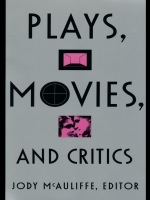 Plays, Movies, and Critics
Jody McAuliffe, ed.
Duke University Press, 1993 This exceptional collection explores the mutual concerns of dramatic theater, film, and those who comment on them. Plays, Movies, and Critics opens with an original play by Don DeLillo. In the form of an interview, DeLillo's short play works as a kind of paradigm of the theatrical or cinematic event and serves as a keynote for the volume. DeLillo's interview play is accompanied in this collection by interviews with theater director Roberta Levitow, Martin Scorsese, and film/theater critic Stanley Kauffmann. Other contributions include a critical look at the current American theater scene, analyses of the place of politics in the careers of G. B. Shaw and Luigi Pirandello, a compelling reading of Chekhov's "The Seagull", a detailed inquiry into the obsessions that energize the works of Sam Shepard, provocative reinterpretations of the films Mean Streets and The Sheltering Sky, and a translation of André Bazin's important piece on theology and film. Contributors. André Bazin, Robert Brustein, Bert Cardullo, Anthony DeCurtis, Don DeLillo, Jesse Ward Engdhal, Richard Gilman, Jim Hosney, Mame Hunt, Jonathan Kalb, Stanley Kauffmann, Jody McAuliffe, Mary Ann Frese Witt, Jacquelyn Wollman, David Wyatt
 The Plays of David Garrick, Volume 3: Garrick's Adaptations of Shakespeare, 1744 - 1756
Edited by Harry William Pedicord and Fredrick Louis Bergmann
Southern Illinois University Press, 1981 David Garrick’s accomplishments as an actor, manager, and theatrical innovator brought him great fame and fortune, and his ideas influenced not only his own age but succeeding ages as well. Yet as a playwright, a part of the elegant combination of talents that was David Garrick, he has never achieved the critical reputation he richly deserves, in main because of the unavailability of texts and the lack of proper assessment of the historic importance of his plays in the English theatre. This first complete edition makes available to scholars and students all the plays of Garrick in well edited texts, with commentary and notes. Contents: Macbeth. A Tragedy, 1744; Romeo and Juliet, 1748; The Fairies. An Opera, 1755; Catherine and Petruchio. A Comedy, 1756; Florizel and Perdita. A Dramatic Pastoral, 1756; The Tempest. An Opera, 1756; and King Lear. A Tragedy, 1756.
 The Plays of David Storey: A Thematic Study
By William Hutchings
Southern Illinois University Press, 1988
This is the first comprehensive play-by-play analysis of the drama of David Storey, one of the most acclaimed and innovative, sometimes controversial, writers in the British theatre since World War II. Grouping the plays according to theme, Hutchings demonstrates that the central focus in the drama of David Storey is the devaluation of traditional rituals in contemporary life and the disintegration of the family. A playwright attuned to the poetry in the ordinary, to the profundity, subtle eloquence, and dramatic tension in the mundane, Storey explores the ways people cope, or fail to cope, with complexity, with uncertainty, with constant, bewildering flux. He writes about groups—families (In Celebration, The Farm), rugby teams (The Changing Room), and construction crews (The Contractor). In his plays, individuals seek to overcome isolation and integrate themselves into a significant assemblage that transcends the self.
Hutchings notes that Storey frequently deals with working-class parents who cannot "understand their grown children’s anxieties, their discontentedness with life, their unstable marriages, and their inability to enjoy the benefits of the education and advantages they labored so hard for so many years to provide."
Storey understands and sympathizes with parents who have paid to educate their children out of their own spheres. He saw it happen in his own family, knew the disapproval of his father: "What else could my father think when, nearing sixty, he came home each day from the pit exhausted, shattered by fatigue, to find me—a young man ideally physically equipped to do the job which now left him totally prostrated—painting a picture of flowers, or writing a poem about a cloud. There was, and there is, no hope of reconciliation."
Hutchings supplements his thematic analysis of Storey’s plays by interweaving into his text 90 percent of a major interview with the playwright, the only such comprehensive interview in existence. Storey, who believes that readers "ought to be chary of all interviews," discusses alleged literary influences on his work, the current state of British theatre, and his reactions to critics. He also provides insight into various productions and performances in his work.
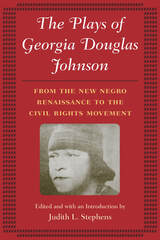 The Plays of Georgia Douglas Johnson: From the New Negro Renaissance to the Civil Rights Movement
Edited and with an Introduction by Judith L. Stephens
University of Illinois Press, 2006 Recovering the stage work of one of America's finest black female writers This volume collects twelve of Georgia Douglas Johnson's one-act plays, including two never-before-published scripts found in the Library of Congress. As an integral part of Washington, D.C.'s, thriving turn-of-the-century literary scene, Johnson hosted regular meetings with Harlem Renaissance writers and other artists, including Countee Cullen, Langston Hughes, May Miller, and Jean Toomer, and was herself considered among the finest writers of the time. Johnson also worked for U.S. government agencies and actively supported women's and minorities' rights. As a leading authority on Johnson, Judith L. Stephens provides a brief overview of Johnson's career and significance as a playwright; sections on the creative environment in which she worked; her S Street Salon; "The Saturday Nighters," and its significance to the New Negro Theatre; selected photographs; and a discussion of Johnson's genres, themes, and artistic techniques.
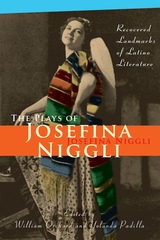 The Plays of Josefina Niggli: Recovered Landmarks of Latino Literature
Josefina Niggli; Edited by William Orchard and Yolanda Padilla
University of Wisconsin Press, 2007 Josefina Niggli (1910–1983) was one of the most successful Mexican American writers of the early twentieth century. Born of European parents and raised in Mexico, she spent most of her adult life in the United States, and in her plays and novels she aimed to portray authentic Mexican experiences for English-speaking audiences. Niggli crossed borders, cultures, and genres, and her life and work prompt interesting questions about race, class, gender, modernity, ethnic and national identity, and the formation of literary canons.
Although Niggli is perhaps best known for her fiction and folk plays, this anthology recovers her historical dramas, most of which have been long out of print or were never published. These plays are deeply concerned with the aftermath of the 1910 Mexican Revolution, imagining its implications for Mexico, Mexican Americans, and U.S.-Mexico relations. Included are Mexican Silhouettes (1928), Singing Valley (1936), The Cry of Dolores (1936), The Fair God (1936), Soldadera (1938), This is Villa! (1939), and The Ring of General Macias (1943). These works reflect on the making of history and often portray the Revolution through the lens of women’s experiences.
Also included in this volume are an extensive critical introduction to Niggli, a chronology of her life and writings, plus letters and reviews by, to, and about Josefina Niggli. that provide illuminating context for the plays. Best Books for Special Interests, selected by the American Association of School Librarians, and Outstanding Book, selected by the Public Library Association “The Best of the Best of the University Presses: Books You Should Know About” presented at the 2008 American Library Association Annual Conference
 Playthrough Poetics: Gameplay as Research Method
Milena Droumeva
Amherst College Press, 2025 Game streamers and live commentators are producing increasingly comprehensive analyses of gameplay, yet scholarship still tends to flatten the experiential media of video games into text for close reading. By shifting focus toward the immersiveness of video games, Playthrough Poetics makes the case for gameplay as a necessary, alternate method. Contributors to this volume engage widely with the activity of play through autoethnographies, meta-analyses of self-broadcasting, new procedural methods like gamespace soundwalking, as well as the affective aspects of games research. In doing so, they model new possibilities for academic players and gamers alike.
Rigorous scholarship meets cultural practice in this innovative, multi-modal edited collection that includes video essays and offers transcripts of the playthroughs themselves. Readers (and viewers) will come away with a toolkit of models, case studies, and conceptual frameworks for analyzing video games through gameplay. This volume is a fresh return to the joy of play: the poetics of games as contemporary forms of storytelling and interactivity.
With contributions from Ashlee Bird, Brandon Blackburn, Milena Droumeva, Kishonna Gray, Robyn Hope, Ben Scholl, Maria Sommers, Ashlyn Sparrow, Christine Tran, and Aaron Trammell.
The Playwright as Thinker: A Study of Drama in Modern Times, Fourth Edition
Eric Bentley
University of Minnesota Press, 2010 First published in 1946, The Playwright as Thinker is a classic work of drama criticism that helped create the intellectual environment in which serious American theater would thrive in the second half of the twentieth century. At the time of publishing, most drama critics believed dramatic art deserved no intellectual status; Eric Bentley set out to prove them wrong. Focusing on the canonic playwrights Strindberg, Ibsen, Pirandello, Sartre, and Brecht, Bentley viewed the playwright as thinker, and his survey of over 150 years of dramatic art provided, in essence, an intellectual history of Europe. This edition not only contains the original, long-suppressed foreword, in which Bentley lambastes the climate of Broadway at the time, but also the author's 1987 afterword.
The Playwright at Work: Conversations
Rosemarie Tichler
Northwestern University Press, 2012 Rosemarie Tichler and Barry Jay Kaplan take us behind the scenes in conversations with thirteen of today’s most distinguished playwrights, including Tony Kushner, John Guare, Wallace Shawn, Suzan-Lori Parks, David Henry Hwang, and Sarah Ruhl. To familiarize the reader with the world of each playwright, Tichler and Kaplan introduce us to the environments in which the work happens, conducting their interviews in the playwright’s home, a dark theater, or a coffee shop. Topics of conversation range from the playwrights’ earliest memories of the theater to finding their unique voices, and from their working relationships with directors, actors, and designers to their involvement in the purely commercial aspects of their profession. Taken together, these conversations constitute a collectively taught master class in the art and craft of writing for the stage.
 Playwrights for Tomorrow: A Collection of Plays, Volume 1
Arthur H. Ballet, EditorIntroduction by Arthur H. Ballet
University of Minnesota Press, 1966
Playwrights for Tomorrow was first published in 1966. Minnesota Archive Editions uses digital technology to make long-unavailable books once again accessible, and are published unaltered from the original University of Minnesota Press editions.
Four young playwrights, James Schevill, Megan Terry, Elizabeth Johnson, and Terrence McNally, are represented in this collection, which includes four one-act plays and one three-act play. The authors are writers who have participated in an experimental program at the University of Minnesota under the auspices of the Office for Advanced Drama Research, of which Arthur H. Ballet is the director.
The program of the Office for Advanced Drama Research, established with the aid of a grant from the Rockefeller Foundation, provides an opportunity for promising young playwrights to develop their talents in a situation which offers them, among other advantages, the chance to have their plays actually produced. Dr. Ballet describes the project in an introduction.
The plays which make up this collection are two related one-act plays, The Space Fan and The Master (titled together American Power), by James Schevill; Ex-Miss Cooper Queen on a Set of Pills by Megan Terry; A Bad Play for an Old Lady by Elizabeth Johnson; and And Things That Go Bump in the Night by Terrence McNally. Each playwright provides a discussion of his work, and production data are given. All except one of the plays were produced at the Tyrone Guthrie Theatre in Minneapolis. In addition, one of them, And Things That Go Bump in the Night, has been given on Broadway.
Just as the experimental productions helped the playwrights evaluate their work, publication of the plays will, it is hoped, contribute further to the critical process by giving the plays the benefits of wider audiences and broader appraisal.
Another collection of plays by writers associated with the program of the Office for Advanced Drama Research is available in a second volume.
 Playwrights for Tomorrow: A Collection of Plays, Volume 11
Arthur H. Ballet, EditorIntroduction by Arthur H. Ballet
University of Minnesota Press, 1973
Playwrights for Tomorrow was first published in 1973. Minnesota Archive Editions uses digital technology to make long-unavailable books once again accessible, and are published unaltered from the original University of Minnesota Press editions.
This volume presents four plays by writers who have worked under the program of the Office for Advanced Drama Research (O.A.D.R.) at the University of Minnesota, an experimental project which provides promising playwrights with the opportunity of working with cooperating theatres in the production of their plays. Arthur H. Ballet, the editor, is director of the
O.A.D.R.
The plays in this volume and the theatres which cooperated in their production are Boxes by Susan Yankowitz, Magic Theatre, Berkeley, California; Canvas by David Roszkowski, Scorpio Rising Theatre, Los Angeles; Bierce Takes on the Railroad! by Philip A. Bosakowski, Theatre III, College of Marin, Kentfield, California; and Chamber Piece by John O'Keefe, Magic Theatre, Berkeley, California.
In an introduction Professor Ballet discussed the program and accomplishments of the O. A.D.R., which was established with the aid of a Rockefeller Foundation grant. He writes: "It seemed obvious that no artist worked in more lonely isolation and needed more direct contact with the theatre than the playwright. Despite loud pronouncements . . . that theatres outside of New York were searching for new plays and writers, the evidence indicates that very few theatres really wanted to work with unknown but living playwrights. The O.A.D.R., in its small way, has tried to open a highway . . . between new, often untried writers and willing, even brave theatres.
As Speech and Drama (England) pointed out in a review of earlier volumes of the Playwrights for Tomorrow series: "Schemes like this one at Minnesota deserve the highest praise. On the evidence of these volumes, the executive committee which operates this venture is not attempting to impose any single imprint on its authors—a further example of the generosity of the patronage."
 Playwrights for Tomorrow: A Collection of Plays, Volume 12
Arthur H. Ballet, EditorIntroduction by Arthur H. Ballet
University of Minnesota Press, 1975
Playwrights for Tomorrow was first published in 1975. Minnesota Archive Editions uses digital technology to make long-unavailable books once again accessible, and are published unaltered from the original University of Minnesota Press editions.
This twelfth volume in the series of collections of plays by writers who have worked under the auspices of the Office for Advanced Drama Research (O.A.D.R.) at the University of Minnesota contains four plays and an introduction by Arthur H. Ballet. The O.A.D.R., of which Professor Ballet is the director, is an experimental project which provides promising playwrights with the opportunity to work with cooperating theatres in the production of their plays.
The plays which make up this collection are The Root by McCarthy Coyle, Wilson by George Greanias, A Lean and Hungry Priest by Warren Kliewer, and A Bunch of the Gods Were Sitting Around One Day by James Spencer. The plays by Mr. Coyle and by Mr. Spencer were produced at the American Conservatory Theatre of San Francisco. Mr. Greanias's play was staged at the Alley Theatre in Houston, and Mr. Kliewer's was given, in an earlier version, at the Scorpio Rising Theatre, Los Angeles.
In his introduction Professor Ballet points out that works by playwrights in the O.A.D.R. program have been produced not only in cooperating theatres in the United States but in Australia, New Zealand, Scotland, and Canada as well. It grows increasingly difficult, he writes, to find playhouses willing to risk an "imperfect" new play and playwright or to challenge their audiences to dare explore unknown dramatic and theatrical territory. "More dangerous still," he comments, "has been the tendency for some directors to make theatre their own, highly personal art. Many important, and many more unimportant, theatres have become showcases for artistic directors who impose their will on all work, old or new."
 Playwrights for Tomorrow: A Collection of Plays, Volume 13
Arthur H. Ballet, EditorIntroduction by Arthur H. Ballet
University of Minnesota Press, 1975
Playwrights for Tomorrow was first published in 1975. Minnesota Archive Editions uses digital technology to make long-unavailable books once again accessible, and are published unaltered from the original University of Minnesota Press editions.
Four plays by writers who have worked under the auspices of the Office for Advanced Drama Research (O.A.D.R.) at the University of Minnesota are published in this volume, the thirteenth in the series of such collections. The O.A.D.R. program, which is directed by Arthur H.. Ballet, the series editor, provides an opportunity for promising playwrights to work with cooperating theatres in the production of their plays.
The plays in this volume are The Tunes of Chicken Little by Robert Gordon, The Inheritance by Ernest A. Joselovitz, Blessing by Joseph Landon, and The Kramer by Mark Medoff. Three of the plays—those by Robert Gordon, Joseph Landon, and Mark Medoff—were produced by the American Conservatory Theatre of San Francisco. The play by Mr. Joselovitz was presented by the University of Minnesota Theatre in Minneapolis.
In his introduction Mr. Ballet comments on the achievements and problems of the O.A.D.R. program. He reports that since the program began it had had about one hundred plays produced in some sixty theatres, not only in the United States but also in Australia, New Zealand, Scotland, and Canada. However, he writes, it became increasingly difficult to find playhouses willing to risk the challenge of new plays and playwrights. "More dangerous still," he writes, "has been the tendency for some directors to make theatre their own, highly personal art. Because so many of these directors only like what they know, and they don't know what to make of new work at all, they cannot truly judge and anticipate as a stage piece anything beyond their immediate ken. The rejections are cavalier and unthinking. The directors' lament that there are no new, exciting playwrights must be answered with the accusation that there really are damned few new, exciting, perceptive directors."
 Playwrights for Tomorrow: A Collection of Plays, Volume 2
Arthur H. Ballet, EditorIntroduction by Arthur H. Ballet
University of Minnesota Press, 1966
Playwrights for Tomorrow was first published in 1966. Minnesota Archive Editions uses digital technology to make long-unavailable books once again accessible, and are published unaltered from the original University of Minnesota Press editions.
This is the second volume of a collection of plays by writers who have participated in an experimental program at the University of Minnesota under the auspices of the Office for Advanced Drama Research, of which Arthur H. Ballet is the director. Three young playwrights, Maria Irene Fornes, Nick Bortez, and Lee H. Kalcheim, are represented in the collection with two one-act plays and two three-act plays.
Under the program, which is described by Dr. Ballet in his introduction, promising young playwrights are given assistance in developing their talents. Among other opportunities, they are offered the chance to have their plays actually produced.
The plays in this volume are Tango Palace and The Successful Life of Three: A Skit for Vaudeville,two one-act plays by Maria Irene Fornes; Shelter Area, a three-act play by Nick Boretz; and The Boy Who Came to Leave,a three-act play by Lee H. Kalcheim. In addition to the scripts, each playwright provides a discussion of his work in a preface. Production data for each play are given also.
Both of the plays by Miss Fornes were produced at the Firehouse Theatre in Minneapolis, and Tango Palace also was given at the Actor's Workshop in San Francisco. Shelter Area was presented in the Playwrights' Premiere Season at the University of Minnesota. Mr. Kalcheim's play was given at the Theatre in the Round, Minneapolis.
The plays in this volume and in Volume 1 of the collection range widely in theme and subject matter but they share a common trait - each represents a new and exciting voice in the American theatre.
 Playwrights for Tomorrow: A Collection of Plays, Volume 3
Arthur H. Ballet, EditorIntroduction by Arthur H. Ballet
University of Minnesota Press, 1967
Playwrights for Tomorrow was first published in 1967. Minnesota Archive Editions uses digital technology to make long-unavailable books once again accessible, and are published unaltered from the original University of Minnesota Press editions.
Five writers are represented in this third volume of a series of collections of plays by dramatists who have participated in an experimental program conducted at the University of Minnesota by the Office for Advanced Drama Research. Dr. Arthur H. Ballet, editor of the series, is the director of the program. The plays in this volume are Five Easy Payments by John Lewin, Where Is de Queen? by Jean-Claude van Itallie, The Great Git-Away by Romeo Muller, With Malice Aforethought by John Stranack, and I, Elizabeth Otis, Being of Sound Mind by Philip Barber.
As Dr. Ballet explains in his introduction, the program of the Office for Advanced Drama Research provides a testing ground for promising playwrights by giving them a chance to have their plays actually produced. Publication of the plays makes them available to larger audiences and to further critical appraisal.
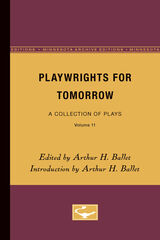 Playwrights for Tomorrow: A Collection of Plays, Volume 4
Arthur H. Ballet, EditorIntroduction by Arthur H. Ballet
University of Minnesota Press, 1967
Playwrights for Tomorrow was first published in 1967. Minnesota Archive Editions uses digital technology to make long-unavailable books once again accessible, and are published unaltered from the original University of Minnesota Press editions.
This is the fourth in a series of volumes which offer collections of plays by dramatists who have participated in an experimental program conducted at the University of Minnesota under the auspices of the Office of Advanced Drama Research (O.A.D.R.). Dr. Arthur H. Ballet, editor of the series, is the director of the O.A.D.R.
This volume contains three full-length plays and one short play. They are The World Tipped Over, and Laying on Its Side (one act) by Mary Feldhaus-Weber, Visions of Sugar Plums by Barry Pritchard, The Strangler by Arnold Powell, and The Long War by Kevin O' Morrison. Mary Feldhaus-Weber is a St. Paul poet who has chosen to work in the theatre. Mr. Pritchard, a former playwright in residence at Theatre St. Paul, now writes for television and films in Hollywood. Mr. Powell is a teacher and theatre director at Birmingham-Southern College in Atlanta, and Mr. O'Morrison pursues an acting career in the Broadway theatre.
As Dr. Ballet explains in his introduction, the program of the O.A.D.R. is designed to give promising playwrights a testing ground for their ideas, skills, and talents by providing them with a chance to have their plays actually produced and, whenever possible, the opportunity of working with the producing groups. He points out that a number of the writers associated with the O.A.D.R. have subsequently moved into the mainstream of contemporary American theatre. Publication of the plays will, it is hoped, bring them to the attention of larger audiences and stimulate further critical appraisal.
 Playwrights for Tomorrow: A Collection of Plays, Volume 5
Arthur H. Ballet, EditorIntroduction by Arthur H. Ballet
University of Minnesota Press, 1969
Playwrights for Tomorrow was first published in 1969. Minnesota Archive Editions uses digital technology to make long-unavailable books once again accessible, and are published unaltered from the original University of Minnesota Press editions.
This is the fifth volume in a continuing series of collections of plays by dramatists who have participated in an experimental program conducted at the University of Minnesota under the auspices of the Office of Advanced Drama Research (O.A.D.R.). Dr. Arthur H. Ballet, editor of the series, is the director of the O.A.D.R.
The plays published here are Fair Beckoning One by Sarah Monson Koebnick and The New Chautauqua by Frederick Gaines. In an introduction Dr. Ballet comments briefly on the work of the playwrights included in this volume. Of Mrs. Koebnick and her play, Fair Beckoning One,he writes: "Without intending or implying condescension, it is quite safe to say that Sarah Koebnick is the rarest of all theatre birds: a primitive who is both a skilled writer and a keen observer. Her tradition is not modern, unless Ibsen is still considered a modernist, but her awareness and her ability to create touching characters and situations are qualities seldom evident in what comes into our office. Her play, Fair Beckoning One, is about a century away from the work of a Gaines or a Sainer, but her compassion is very 'with it.'"
Of Mr. Gaines and The New Chautauqua he writes: "A graduate-student enterprise, the AnyPlace Theatre, in the summer of 1968 turned Minnesota into a commedia dell'arte territory by carrying plays to the people in the streets. It was, by all measures, enormously successful, and it can be most proud that it presented works of two new writers, with the aid of the O.A.D.R. Fred Gaines is himself a graduate student and an exciting prolific new writer in the theatre. The New Chautauqua is one of his best works (and perhaps one of the best pieces O.A.D.R. has worked with): part commedia, part protest, part entertainment, part commitment, and part sheer, marvelous theatre."
 Playwrights for Tomorrow: A Collection of Plays, Volume 6
Arthur H. Ballet, EditorIntroduction by Arthur H. Ballet
University of Minnesota Press, 1969
Playwrights for Tomorrow was first published in 1969. Minnesota Archive Editions uses digital technology to make long-unavailable books once again accessible, and are published unaltered from the original University of Minnesota Press editions.
Three plays are published in this sixth volume of a series of collections of plays by dramatists who have participated in an experimental program conducted by the Office for Advanced Drama Research (O.A.D.R.), University of Minnesota. Dr. Arthur H. Ballet, editor of the series, is the director of the program.
The plays in this volume are The Thing Itself by Arthur Sainer, The Marriage Test by Jonathan Gillman, and The End of the World; or, Fragments from a Work in Progress by Keith Neilson. In an introduction Dr. Ballet briefly describes the O.A.D.R. program and comments on the three plays.
Of Mr. Sainer and his play Dr. Ballet writes: "Arthur Sainer represents a new wave in theatrical writing, the semi-improvisational piece which really takes on life only in production, but which also speaks with a voice as old and honorable as theatre itself. The Firehouse Theatre, with its unique and skillful dedication to innovative theatre, brought The Things Itself to exciting production for enthusiastic audiences." Jonathan Gillman's The Marriage Test is, he writes, "a rare and sparkling work for the stage: a classic farce." On the third play and its author he comments: "The End of the World by Keith Neilson was the first play provided with facilities under the O.A.D.R. outside the Minneapolis-St. Paul area in an attempt to see if the program could work at long distance as well as it has at home. The play, the playwright, and the O.A.D.R. were blessed with a wonderful company, theatre, and audience at the Playhouse in the Park, Cincinnati, Ohio, and above all with a dedicated and talented director in Brooks Jones. Neilson is a continuous creator in theatre."
 Playwrights for Tomorrow: A Collection of Plays, Volume 7
Arthur H. Ballet, EditorIntroduction by Arthur H. Ballet
University of Minnesota Press, 1971
Playwrights for Tomorrow was first published in 1971. Minnesota Archive Editions uses digital technology to make long-unavailable books once again accessible, and are published unaltered from the original University of Minnesota Press editions.
This is the seventh volume in the series Playwrights for Tomorrow,which makes available collections of plays by dramatists who have participated in the program of the Office for Advanced Drama Research (O.A.D.R.) at the University of Minnesota. Arthur H. Ballet, the series editor, is the director of the O.A.D.R. Under the program of the O.A.D.R., promising playwrights are awarded grants and given the opportunity of having their plays produced by college, community, or experimental theatre groups.
In his introduction to this volume Professor Ballet comments on the experience and progress of the O.A.D.R. program. He points out that the playwrights included here represent the first full year of O.A.D.R. work with the theatres in various parts of the country. Previously the productions of the plays under the O.A.D.R. program had been limited to theatrical groups in or near Minneapolis and St. Paul.
The plays in this volume are Grace and George and God by Alexander Hierholzer, Assassin! by David Ball, Freddie the Pigeon by Seymour Leichman, Rags by Nancy Walter, The Orientals by Stephen Grecco, and Drive-In by David Kranes. Six delightful sketches by Mr. Leichman illustrate his play. Details about the initial productions of the plays and sidelights about the authors and their work are given by Professor Ballet in his introduction.
The locales for the premieres of these plays included Cincinnati's Playhouse in the Part, where two of the plays were given; the Firehouse Theatre in Minneapolis; Yale University's Drama School; the Theatre in the Round, Minneapolis; and the theatre at Birmingham-Southern College in Alabama.
 Playwrights for Tomorrow: A Collection of Plays, Volume 8
Arthur H. Ballet, EditorIntroduction by Arthur H. Ballet
University of Minnesota Press, 1972
Playwrights for Tomorrow was first published in 1972. Minnesota Archive Editions uses digital technology to make long-unavailable books once again accessible, and are published unaltered from the original University of Minnesota Press editions.
Three playwrights are represented in this, the eighth volume of the continuing series Playwrights for Tomorrow, which makes available the work of playwrights who have been sponsored by the University of Minnesota Office for Advanced Drama Research. Under the program of the O.A.D.R., which is aided by a grant from the Rockefeller Foundation, writers are given the opportunity to work on their scripts and have their plays produced by cooperating theater companies. The program is directed by Arthur H. Ballet, the series editor.
The three plays in this volume are A Gun Play by Yale M. Udoff, Anniversary on Weedy Hill by Allen Joseph, and The Nihilist by William N. Monson. Professor Ballet provides an introduction in which he explains the purpose and scope of the O.A.D.R. program, recounts some of its history and accomplishments, and tells a little about the O.A.D.R. productions of each of the plays included here.
A Gun Play was produced by the Hartford Stage Company in Hartford, Connecticut, under the direction of Paul Weidner. Later it had an off-Broadway run in New York City, staged by commercial producers. The author, Yale Udoff, is a professional writer primarily involved in the mass media.
Anniversary on Weedy Hill was produced by Theatre West, a professional company in West Hollywood, California. Allen Joseph, the author, a professional actor in film and television, turned to playwriting in the midst of a well-established career in the theater.
The Nihilist was the second play of the O.A.D.R. offered through the facilities of the University of California at Davis Theatre under the direction of Alfred Rossi. William Monson, the playwright, is from the world of academe.
 Playwrights for Tomorrow: A Collection of Plays, Volume 9
Arthur H. Ballet, EditorIntroduction by Arthur H. Ballet
University of Minnesota Press, 1972
Playwrights for Tomorrow was first published in 1972. Minnesota Archive Editions uses digital technology to make long-unavailable books once again accessible, and are published unaltered from the original University of Minnesota Press editions.
This is the ninth volume in the continuing series Playwrights for Tomorrow,which makes available collections of plays by dramatists who have participated in the program of the Office for Advanced Drama Research at the University of Minnesota. Arthur H. Ballet, the series editor, is the director of the program.
Professor Ballet writes an introduction to the volume, sketching a history of the O.A.D.R. program, telling about some of its accomplishments and programs, and giving information about the playwrights and productions of the plays included here. He explains: "The O.A.D.R. was established in 1963 at the University of Minnesota, with financial aid from the Rockefeller Foundation, to provide an opportunity for playwrights seeking to try fresh paths, an opportunity to have their work performed without the pressures endemic to the commercial theatre."
The plays in this volume are Encore by David Korr, Madam Popov by Gladden Schrock, Children of the Kingdom by The Company Theatre Ensemble with script by Don Keith Opper, and Psalms of Two Davids by Joel Schwartz. Encore and Madam Popov were presented, in separate productions, at the Other Place Theatre of the Tyrone Guthrie Theater in Minneapolis. Children of the Kingdom was presented by The Company Theatre in Los Angeles. Psalms of Two Davids was produced at the College of Marin in California under the direction of James Dunn. Two of the plays—Children of the Kingdom and Psalms of Two Davids —are full-length and the other two are one-act plays.
Playwriting and Young Audiences: Collected Wisdom and Practical Advice from the Field
Matt Omasta and Nicole B. Adkins
Intellect Books, 2017 From the success of Matilda on Broadway to the 2015 revival of Annie in movie theaters, it’s clear that theater with and for young people has widespread and enduring appeal. Despite this, there is no contemporary guide designed for playwriting for youth in professional and educational contexts.
In Playwriting and Young Audiences, Matt Omasta and Nicole B. Adkins put this right. Providing a range of perspectives, the book collects the practical advice and wisdom of seventy-five artists and practitioners. It is a deeply poignant account of those who have dedicated their lives to work that applauds the dignity and depth of young people.
 Playwriting in Schools: Dramatic Navigation
John Newman
Intellect Books, 2018 John Newman invites teachers to take their students on a playwriting voyage in Playwriting in Schools. The book examines how students who learn to write plays and work with a professional playwright in residence empower themselves and gives instructors tools for teaching the process of playwriting in a way that makes space for the student voice. Playwriting in Schools investigates two main approaches for adult teachers and playwrights to use playwriting as a strategy for student self-expression. One approach is through the creation of fully-developed plays, written either by individual students with instruction from teachers or through interactions between a team of students and a teacher-playwright. The other approach is developing plays through collaborations among professional playwrights, teachers, and student actors, crafting new plays in ways that suit the needs, interests, and learning of young people. Throughout, Newman and the teachers and playwrights he features express themselves with an artistic generosity that encourages us to widen the scope of our own programs by introducing students to the vast ocean of playwriting and play development.
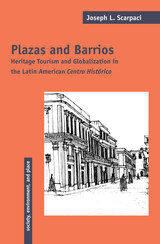 Plazas and Barrios: Heritage Tourism and Globalization in the Latin American Centro Histórico
Joseph L. Scarpaci
University of Arizona Press, 2004 In recent years the travel industry has promoted trips to cultural landscapes that contain great historical and symbolic landmarks, and Latin American towns and cities are anything but isolated from this trend. Many historic city centers in Latin America have been preserved intact from the colonial era and today may serve institutional, commercial, or residential needs. Now economic forces from outside the region have created a demand for the preservation of historically "authentic" districts.
This book explores how heritage tourism and globalization are reshaping the Latin American centro histórico, analyzing the transformation of the urban core from town plaza to historic center in nine cities: Bogotá, Colombia; Buenos Aires, Argentina; Cartagena, Colombia; Cuenca, Ecuador; Havana, Cuba; Montevideo, Uruguay; Puebla, Mexico; Quito, Ecuador; and Trinidad, Cuba. It tells how these pressures, combined with the advantage of a downtown location, have raised the potential of redeveloping these inner city areas but have also created the dilemma of how to restore and conserve them while responding to new economic imperatives.
In an eclectic and interdisciplinary study, Joseph Scarpaci documents changes in far-flung corners of the Latin American metropolis using a broad palette of tools: urban morphology profiles, an original land-use survey of 30,000 doorways in nine historic districts, numerous photographs, and a review of the political, economic, and globalizing forces at work in historic districts. He examines urban change as reflected in architectural styles, neighborhood growth and decline, real estate markets, and local politics in order to show the long reach of globalization and modernity.
Plazas and Barrios spans all of Spanish-speaking America to address the socio-political dimensions of urban change. It offers a means for understanding the tensions between the modern and traditional aspects of the built environment in each city and provides a key resource for geographers, urban planners, architectural historians, and all concerned with the implications of the emerging global economy.
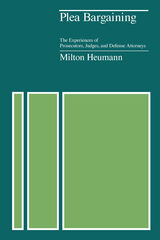 Plea Bargaining: The Experiences of Prosecutors, Judges, and Defense Attorneys
Milton Heumann
University of Chicago Press, 1978 "That relatively few criminal cases in this country are resolved by full Perry Mason-style strials is fairly common knowledge. Most cases are settled by a guilty plea after some form of negotiation over the charge or sentence. But why? The standard explanation is case pressure: the enormous volume of criminal cases, to be processed with limited staff, time and resources. . . . But a large body of new empirical research now demands that we re-examine plea negotiation. Milton Heumann's book, Plea Bargaining, strongly and explicitly attacks the case-pressure argument and suggests an alternative explanation for plea bargaining based on the adaptation of attorneys and judges to the local criminal court. The book is a significant and welcome addition to the literature. Heumann's investigation of case pressure and plea negotiation demonstrates solid research and careful analysis."—Michigan Law Review
The Plea: The True Story of Young Wesley Elkins and His Struggle for Redemption
Patricia L. Bryan
University of Iowa Press, 2022 2023 Midwest Book Awards in Nonfiction - History, Regional, winner
On a moonlit night in 1889, Iowa farmer John Elkins and his young wife, Hattie, were brutally murdered in their bed. Eight days later, their son, eleven-year-old Wesley Elkins, was arrested and charged with murder. The community reeled with shock by both the gruesome details of the homicides and the knowledge of the accused perpetrator—a small, quiet boy weighing just 75 pounds.
Accessible and fast-moving, The Plea delivers a complete, complex, and nuanced narrative of this horrific crime, while shedding light on the legal, social, and political environment of Iowa and the country in the late 1800s and early 1900s.
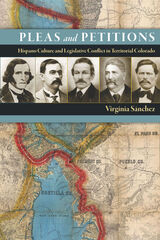 Pleas and Petitions: Hispano Culture and Legislative Conflict in Territorial Colorado
Virginia Sánchez
University Press of Colorado, 2021 In Pleas and Petitions Virginia Sánchez sheds new light on the political obstacles, cultural conflicts, and institutional racism experienced by Hispano legislators in the wake of the legal establishment of the Territory of Colorado. The book reexamines the transformation of some 7,000 Hispano settlers from citizens of New Mexico territory to citizens of the newly formed Colorado territory, as well as the effects of territorial legislation on the lives of those residing in the region as a whole.
Sánchez highlights the struggles experienced by Hispano territorial assemblymen trying to create opportunity and a better life in the face of cultural conflict and the institutional racism used to effectively shut them out of the process of establishing new laws and social order. For example, the federal and Colorado territorial governments did not provide an interpreter for the Hispano assemblymen or translations of the laws passed by the legislature, and they taxed Hispano constituents without representation and denied them due process in court.
The first in-depth history of Hispano sociopolitical life during Colorado’s territorial period, Pleas and Petitions provides fundamental insight into Hispano settlers’ interactions with their Anglo neighbors, acknowledges the struggles and efforts of those Hispano assemblymen who represented southern Colorado during the territorial period, and augments the growing historical record of Hispanos who have influenced the course of Colorado’s history.
The Pleasant Nights
Giovan Straparola
Iter Press, 2015 In Giovan Francesco Straparola’s The Pleasant Nights, a group of men and women gather together in a villa on the Venetian island of Murano during Carnival to sing songs, tell tales, and solve riddles. A sixteenth-century bestseller, The Pleasant Nights is today a fundamental text for European folk and fairy tale studies, for alongside triumphal and tragic love stories, comical tales of practical jokes, and accounts of witty retorts, Straparola (1480? – 1557?) placed some of the first fairy tales printed in Europe. Straparola’s eloquent female narrators and the fairy tales they recount became a model for a generation of French women writers in Parisian salons, who used the fairy tale to interrogate the gender norms of their day. This book presents the first new and complete English translation of Straparola’s tales and riddles to be published since the nineteenth century.
Please
Jericho Brown
New Issues Poetry and Prose, 2008 Please explores the points in our lives at which love and violence intersect. Drunk on its own rhythms and full of imaginative and often frightening imagery, Please is the album playing in the background of the history and culture that surround African American/male identity and sexuality. Just as radio favorites like Marvin Gaye, Donny Hathaway, and Pink Floyd characterize loss, loneliness, addiction, and denial with their voices, these poems’ chorus of speakers transform moments of intimacy and humor into spontaneous music. In Please, Jericho Brown sings the influence soul culture has on American life with the accuracy of the blues.
Please Bury Me in This
Allison Benis White
Four Way Books, 2017 The speaker in Please Bury Me in This grieves the death of her father and the loss of several women to suicide while contemplating her own death and the nature of language as a means of human connection that transcends our temporal lives. This book is also concerned with the intergenerational trauma of the children of Holocaust survivors.
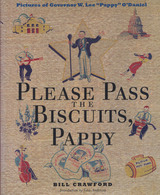 Please Pass the Biscuits, Pappy: Pictures of Governor W. Lee "Pappy" O'Daniel
By Bill Crawford
University of Texas Press, 2004 Long before movie stars Ronald Reagan and Arnold Schwarzenegger became governors of California, a popular radio personality with no previous political experience—who wasn't even registered to vote—swept into the governor's office of Texas. W. Lee "Pappy" O'Daniel was a 1930s businessman who discovered the power of radio to sell flour. His musical shows with the Light Crust Doughboys (which launched the career of Bob Wills) and his radio homilies extolling family and Christian values found a vast, enthusiastic audience in Depression-era Texas. When Pappy decided to run for governor in 1938 as a way to sell more flour—a fact he proudly proclaimed throughout the campaign—the people of Texas voted for him in record numbers. And despite the ineptitude for politics he displayed once in office, Texans returned him to the governorship in 1940 and then elected him to the U.S. Senate in 1941 in a special election in which he defeated Lyndon Johnson, as well as to a full term as senator in 1942. While the hit film O Brother, Where Art Thou? celebrated a fictional "Please Pass the Biscuits, Pappy" O'Daniel, this book captures the essence of the real man through photographs taken by employees of the Texas Department of Public Safety, most of which are previously unpublished. Reminiscent of the work of WPA photographers such as Russell Lee and Dorothea Lange, these photos record the last unscripted era of politics when a charismatic candidate could still address a crowd from an unpainted front porch or a mobile bandstand in the back of a truck. They strikingly confirm that Pappy O'Daniel's ability to connect with people was as great in person as on the radio. To set the photos in context, Bill Crawford has written an entertaining text that discusses the political landscape in Texas and the United States in the 1930s, as well as the rise of radio as mass medium for advertising and entertainment. He also provides extensive captions for each picture. John Anderson, Photo Archivist of the Texas State Archives, discusses the work of Joel Tisdale and the other DPS photographers who left this extraordinary record of the greatest vote-getter in Texas history, who became one of America's first celebrities to cross the line from entertainment to political office.
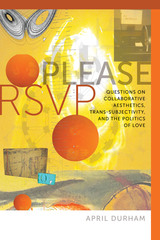 Please RSVP: Questions on Collaborative Aesthetics, Trans-Subjectivity, and the Politics of Love
April Durham
Dartmouth College Press, 2019 It’s no secret that working with others, rather than alone, on a creative project can often yield the most unexpected results, a new and surprising sum greater than the whole of its parts. Please RSVP presents a bold new theory of just how powerful collaboration can be in the making of art. April Durham argues that collaborative activity has the potential to broaden and expand an individual participant’s static identity through what she calls “trans-subjectivity.” She offers a fine-grained analysis of the ways in which personal subjectivity becomes porous and malleable during the process of shared creative labor. Durham’s concept of the trans-subjective offers a new way to come to terms with the networks, either digital or otherwise, that have developed over the twentieth- and twenty-first centuries, providing a bold new frame for topics like the experience of time, community, language, and ethics. This is a crucial and eye-opening book for contemporary artists and art historians alike.
 Please Touch: A History of the First Four Children's Museums in the United States (1899–1965)
Jessie Swigger
University of Massachusetts Press, 2026 The Innovation and influence of the first children’s museums in the US
When it opened in 1899, the Brooklyn Children’s Museum greeted visitors with a new experience. Rather than carefully ensconcing artifacts and curios behind protective glass, the staff took the unusual step of moving the objects out of their cases and into the hands of the children, inviting them to “please touch.” Born out of the reformist spirit of the Progressive Era, the museum represented a new kind of institution, one whose primary purpose was not to collect, preserve, and display objects but rather to educate a specific audience. Over the next twenty-five years, three other children’s museums opened with a similar mission and approach: the Boston Children’s Museum (1913), the Detroit Children’s Museum (1917), and The Children’s Museum of Indianapolis (1925).
At a time when most museums were led by men, women played a critical role in overseeing this first wave of children’s museums. As the number of children’s museums grew, women rose to prominence in the museum profession at large, advocating for new ways for institutions to interact with and serve their audiences. By 1965, the children’s museum movement had succeeded in demonstrating rich rewards and had influenced all types of museums and continues to do so to this day.
Drawing on archival materials, newspaper accounts, and the writings of museum workers and professionals, Please Touch carefully chronicles the early histories of these four seminal children’s museums. Jessie Swigger provides thorough institutional histories of each and connects them to broader currents in education, such as the Progressive education movement, and to key events in early- to mid-twentieth-century US history, including immigration, the Great Depression, World Wars I and II, and the Cold War. She also demonstrates how these institutions were fundamentally shaped by women’s leadership, and how they challenged and expanded the definition of museums and pressed museum practices in new directions.
 Please Touch: A History of the First Four Children's Museums in the United States (1899–1965)
Jessie Swigger
University of Massachusetts Press, 2026 The Innovation and influence of the first children’s museums in the US
When it opened in 1899, the Brooklyn Children’s Museum greeted visitors with a new experience. Rather than carefully ensconcing artifacts and curios behind protective glass, the staff took the unusual step of moving the objects out of their cases and into the hands of the children, inviting them to “please touch.” Born out of the reformist spirit of the Progressive Era, the museum represented a new kind of institution, one whose primary purpose was not to collect, preserve, and display objects but rather to educate a specific audience. Over the next twenty-five years, three other children’s museums opened with a similar mission and approach: the Boston Children’s Museum (1913), the Detroit Children’s Museum (1917), and The Children’s Museum of Indianapolis (1925).
At a time when most museums were led by men, women played a critical role in overseeing this first wave of children’s museums. As the number of children’s museums grew, women rose to prominence in the museum profession at large, advocating for new ways for institutions to interact with and serve their audiences. By 1965, the children’s museum movement had succeeded in demonstrating rich rewards and had influenced all types of museums and continues to do so to this day.
Drawing on archival materials, newspaper accounts, and the writings of museum workers and professionals, Please Touch carefully chronicles the early histories of these four seminal children’s museums. Jessie Swigger provides thorough institutional histories of each and connects them to broader currents in education, such as the Progressive education movement, and to key events in early- to mid-twentieth-century US history, including immigration, the Great Depression, World Wars I and II, and the Cold War. She also demonstrates how these institutions were fundamentally shaped by women’s leadership, and how they challenged and expanded the definition of museums and pressed museum practices in new directions.
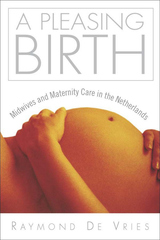 A Pleasing Birth: Midwives And Maternity Care
Raymond De Vries
Temple University Press, 2005 Women have long searched for a pleasing birth—a birth with a minimum of fear and pain, in the company of supportive family, friends, and caregivers, a birth that ends with a healthy mother and baby gazing into each other's eyes. For women in the Netherlands, such a birth is defined as one at home under the care of a midwife. In a country known for its liberal approach to drugs, prostitution, and euthanasia, government support for midwife-attended home birth is perhaps its most radical policy: every other modern nation regards birth as too risky to occur outside a hospital setting. In exploring the historical, social, and cultural customs responsible for the Dutch way of birth, Raymond De Vries opens a new page in the analysis of health care and explains why maternal care reform has proven so difficult in the U.S. He carefully documents the way culture shapes the organization of health care, showing how the unique maternity care system of the Netherlands is the result of Dutch ideas about home, the family, women, the body and pain, thriftiness, heroes, and solidarity. A Pleasing Birth breaks new ground and closes gaps in our knowledge of the social and cultural foundations of health care. Offering a view into the Dutch notion of maternity care, De Vries also offers a chance of imagining how Dutch practices can reform health care in the U.S. not just for mothers and babies, but for all Americans.
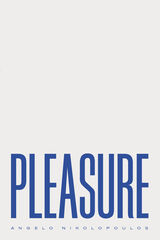 PLEASURE
Angelo Nikolopoulos
Four Way Books, 2022 PLEASURE is a book-length poem which muses on the phenomenology of solitude in a pastoral landscape, written in a diaristic, lyric mode, where the queer “I” alternately savors the decadence of isolation and stands at the precipice of despair. A travelogue in verse, PLEASURE takes place in Syros, the Greek island to which author Angelo Nikolopolous travels a few weeks after the discovery of his mother’s brain tumor. These intertextual, elliptical explorations of solitude and sensuality interweave images of seaside roaming, secluded town life, and ephemeral sexual encounters with the ubiquitous implication of death—the waning summer, the ill, perhaps dying, mother. Staring down true disconnection—both physical and psychic orphanhood —Nikolopoulos writes about the thrill and sadness of turning your back against the world and those in it only to rediscover that which tethers all to human experience: the quotidian, singular pleasures of having a body.
Pleasure and Pain in US Public Culture
edited by Christopher J. Gilbert and John Louis Lucaites
University of Alabama Press, 2025 Unraveling the intricate dance of pleasure and pain in contemporary American culture
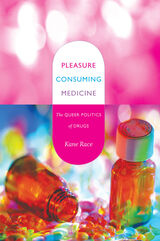 Pleasure Consuming Medicine: The Queer Politics of Drugs
Kane Race
Duke University Press, 2009 On a summer night in 2007, the Azure Party, part of Sydney’s annual gay and lesbian Mardi Gras, is underway. Alongside the party outfits, drugs, lights, and DJs is a volunteer care team trained to deal with the drug-related emergencies that occasionally occur. But when police appear at the gates with drug-detecting dogs, mild panic ensues. Some patrons down all their drugs, heightening their risk of overdose. Others try their luck at the gates. After twenty-six attendees are arrested with small quantities of illicit substances, the party is shut down and the remaining partygoers disperse into the city streets. For Kane Race, the Azure Party drug search is emblematic of a broader technology of power that converges on embodiment, consumption, and pleasure in the name of health. In Pleasure Consuming Medicine, he illuminates the symbolic role that the illicit drug user fulfills for the neoliberal state. As he demonstrates, the state’s performance of moral sovereignty around substances designated “illicit” bears little relation to the actual dangers of drug consumption; in fact, it exacerbates those dangers. Race does not suggest that drug use is risk-free, good, or bad, but rather that the regulation of drugs has become a site where ideological lessons about the propriety of consumption are propounded. He argues that official discourses about drug use conjure a space where the neoliberal state can be seen to be policing the “excesses” of the amoral market. He explores this normative investment in drug regimes and some “counterpublic health” measures that have emerged in response. These measures, which Race finds in certain pragmatic gay men’s health and HIV prevention practices, are not cloaked in moralistic language, and they do not cast health as antithetical to pleasure.
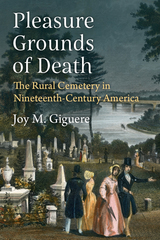 Pleasure Grounds of Death: The Rural Cemetery in Nineteenth-Century America
Joy M. Giguere
University of Michigan Press, 2024 Rural cemeteries—named for their expansive, picturesque landscape design rather than location—were established during the middle decades of the nineteenth century in the United States. An instant cultural phenomenon, Mount Auburn Cemetery in Cambridge, Massachusetts, was the nation’s first such burial ground to combine the functions of the public park and the cemetery, becoming a popular place to picnic and go for strolls even for people who didn’t have graves to visit. It sparked a nationwide movement in which communities sought to establish their own cities of the dead.
Pleasure Grounds of Death considers the history of the rural cemetery in the United States throughout the duration of the nineteenth century as not only a critical cultural institution embedded in the formation of community and national identities, but also as major sites of contest over matters of burial reform, taste and respectability, and public behavior; issues concerning race, class, and gender; conflicts over the burial of the Civil War dead and formation of postwar memory; and what constituted the most appropriate ways to structure the landscape of the dead in a modern and progressive society. As cultural landscapes that served the needs of the living as well as the dead, rural cemeteries offer a mirror for the transformations and conflicts taking place throughout the nineteenth century in American society.
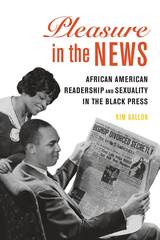 Pleasure in the News: African American Readership and Sexuality in the Black Press
Kim T. Gallon
University of Illinois Press, 2020 Critics often chastised the twentieth-century black press for focusing on sex and scandal rather than African American achievements. In Pleasure in the News, Kim Gallon takes an opposing stance—arguing that African American newspapers fostered black sexual expression, agency, and identity. Gallon discusses how journalists and editors created black sexual publics that offered everyday African Americans opportunities to discuss sexual topics that exposed class and gender tensions. While black churches and black schools often encouraged sexual restraint, the black press printed stories that complicated notions about respectability. Sensational coverage also expanded African American women’s sexual consciousness and demonstrated the tenuous position of female impersonators, black gay men, and black lesbians in early twentieth African American urban communities. Informative and empowering, Pleasure in the News redefines the significance of the black press in African American history and advancement while shedding light on the important cultural and social role that sexuality played in the power of the black press.
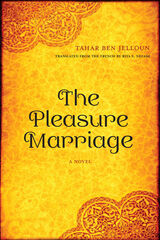 The Pleasure Marriage: A Novel
Tahar Ben Jelloun; Translated from the French by Rita S. Nezami
Northwestern University Press, 2021 In The Pleasure Marriage, Tahar Ben Jelloun tells the epic story of a romance that explores desire and the intolerance for interracial marriage in Moroccan society. Amir is a prosperous merchant based in Fez, where he has a wife and four children. On one of his annual business trips to Senegal, he enters into a “pleasure marriage”—a temporary union permitted by Islamic law—with the alluring Nabou. Overcome by her passion and sensuality, he falls in love, with repercussions for three generations scarred by racism, immigration, and deportation.
Nabou returns to Fez as Amir’s second wife, weathering the jealous cruelty of Lalla Fatma, his first partner. Isolated within her new home, Nabou gives birth to twin sons, one black and one white, who come of age on the opposite sides of racial, social, and political chasms and who chart vastly different courses. The Pleasure Marriage showcases Ben Jelloun’s mastery of metaphor and lyrical narrative as he continues to take us into the worlds of Moroccan culture through his exquisite language and literary genius.
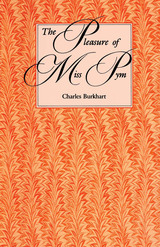 The Pleasure of Miss Pym
By Charles Burkhart
University of Texas Press, 1987 When British writers Philip Larkin and Lord David Cecil named Barbara Pym one of the twentieth century's most underrated authors in a 1977 Times Literary Supplement survey, they started a Barbara Pym revival that continued unabated in Great Britain and the United States. Barbara Pym's delightful tales of jumble sales and parish meetings, her ironic insights into the relationships between women and men, have won a devoted following. Indeed she is often compared to that most accomplished author of comedies of manners, Jane Austen. The Pleasure of Miss Pym is a critical study of Pym as comic writer and of the links between her life and autobiographical writings and her fiction, written with a liveliness of style and tone that matches Pym's own. Not only does Charles Burkhart provide perceptive discussions of Pym's life and novels, he also illuminates the worldview represented in her work, the unique nature of her comedy, her religion, her place within the history of the novel, and her penetrating insights into male-female relationships. All of Pym's work, including the 1986 posthumous publication, An Academic Question, is intelligently surveyed here. Scholars of contemporary English literature will derive both instruction and pleasure from this elegantly written study, as will Pym's admiring readers, for whom it is also intended.
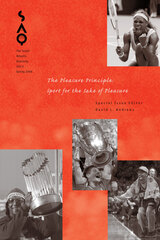 The Pleasure Principle: Sport for the Sake of Pleasure, Volume 105
David L. Andrews, ed.
Duke University Press From the ancient Olympic games to the savage gladiatorial contests of the Roman Empire, from the thrill of the World Cup to the hype of the Super Bowl, sport represents a singular source of social belonging and communal enjoyment—sometimes as intense as religious faith. The Pleasure Principle addresses the issue of sport as a form of pleasure, contending that sport, like any form of popular culture, reveals a lot about the society in which it appears. Examining sports through various theoretical lenses, including Marxist, feminist, and poststructuralist, and from numerous disciplinary viewpoints—history, sociology, cinema studies, literature, and cultural studies—this special issue demonstrates the complexity of contemporary sports culture. Ranging from the humorous to the ironic, from the personal to the theoretical, and from sports as dissimilar as baseball and rugby, gambling and karate, this issue explains fandom itself and explores the intersections of sport and politics, sport and class, and sport and identity. One timely essay addresses the use of Native American imagery and nicknames and the recent NCAA ban on these references. Another classifies gambling as a popular American sport, one that in 2003 attracted three times as many attendees as all Major League Baseball franchises combined. Another essay delves into the history of the golfing mecca of Pinehurst, North Carolina, discussing the resort’s roots in the age of Jim Crow. Among the other topics addressed in this issue are how soccer fandom and commodity culture can be one and the same; why Liverpool’s 2005 victory in the European Champion’s League proves that God is red; and why the Olympic Games can represent performative nationalism. Contributors. David L. Andrews, Amy Bass, Norman K. Denzin, Grant Farred, Keya Ganguly, John Hartley, Jane Juffer, Liz Moor, Jeffrey T. Nealon, Annie Paul, George Ritzer, Jim Shepard, Orin Starn, Kenneth Surin
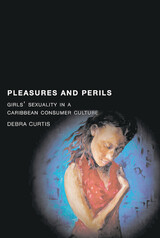 Pleasures and Perils: Girls' Sexuality in a Caribbean Consumer Culture
Curtis, Debra
Rutgers University Press, 2009 Pleasures and Perils follows a group of young girls living on Nevis, an island society in the Eastern Caribbean. In this provocative ethnography, Debra Curtis examines their sexuality in gripping detail: why do Nevisian girls engage in sexual activity at such young ages? Where is the line between coercion and consent? How does a desire for wealth affect a girl's sexual practices? Curtis shows that girls are often caught between conflicting discourses of Christian teachings about chastity, public health cautions about safe sex, and media enticements about consumer delights. Sexuality's contradictions are exposed: power and powerless¡ness, self-determination and cultural control, violence and pleasure. Pleasures and Perils illuminates the methodological and ethical issues anthropologists face when they conduct research on sex, especially among girls. The sexually explicit narratives conveyed in this book challenge not only the reader's own thoughts on sexuality but also the broader limits and possibilities of ethnography.
Pleasures in Socialism: Leisure and Luxury in the Eastern Bloc
David Crowley
Northwestern University Press, 2012 Much has been written about the workings of communist governments in the USSR and the Soviet bloc, yet there is still a great deal to explore regarding their relationship to the everyday lives of the citizens living under them. This third volume builds on the editors’ Style and Socialism and Socialist Spaces, showing how the rise of consumer culture took a unique form in these countries. Essays from top scholars address topics ranging from fashion and game shows to smoking and camping. The authors of the essays in this collection investigate the ways in which pleasurable activities, like many other facets of daily life, were both a space in which these communist governments tried to insinuate themselves and thereby further expand the reach of their authority, and also an opportunity for people to assert their individuality.
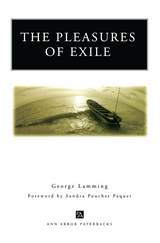 The Pleasures of Exile
George Lamming
University of Michigan Press, 1992 In The Pleasures of Exile, as in his other works, George Lamming embraces the intricate issues of colonization and decolonization with a canny combination of playfulness and seriousness, irony and commitment. “[It] is a reciprocal process,” Lamming observes, “to be a colonial is to be a man in a certain relation; and this relation is an example of exile.”
Through a series of interrelated essays, The Pleasures of Exile explores the cultural politics and relationships created in the crucible of colonization. Drawing on Shakespeare’s The Tempest and C. L. R. James’s The Black Jacobins, as well as his own fiction and poetry, Lamming deftly locates the reader in a specific intellectual and cultural domain while conjuring a rich and varied spectrum of physical, intellectual, psychological, and cultural responses to colonialism. “My subject,” he writes, “is the migration of the West Indian writer, as colonial and exile, from his native kingdom, once inhabited by Caliban, to the tempestuous island of Prospero’s and his language. This book is a report on one man’s way of seeing.”
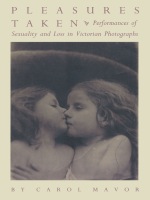 Pleasures Taken: Performances of Sexuality and Loss in Victorian Photographs
Carol Mavor
Duke University Press, 1995 An intimate look into three Victorian photo-settings, Pleasures Taken considers questions of loss and sexuality as they are raised by some of the most compelling and often misrepresented photographs of the era: Lewis Carroll’s photographs of young girls; Julia Margaret Cameron’s photographs of Madonnas; and the photographs of Hannah Cullwick, a "maid of all work," who had herself pictured in a range of masquerades, from a blackened chimney sweep to a bare-chested Magdalene. Reading these settings performatively, Carol Mavor shifts the focus toward the subjectivity of these girls and women, and toward herself as a writer.
Mavor’s original approach to these photographs emphatically sees sexuality where it has been previously rendered invisible. She insists that the sexuality of the girls in Carroll’s pictures is not only present, but deserves recognition, respect, and scrutiny. Similarly, she sees in Cameron’s photographs of sensual Madonnas surprising visions of motherhood that outstrip both Victorian and contemporary understandings of the maternal as untouchable and inviolate, without sexuality. Finally she shows how Hannah Cullwick, posing in various masquerades for her secret paramour, emerges as a subject with desires rather than simply a victim of her upper-class partner. Even when confronting the darker areas of these photographs, Mavor perseveres in her insistence on the pleasures taken—by the viewer, the photographer, and often by the model herself—in the act of imagining these sexualities. Inspired by Roland Barthes, and drawing on other theorists such as Julia Kristeva and Luce Irigaray, Mavor creates a text that is at once interdisciplinary, personal, and profoundly pleasurable.
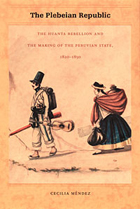 The Plebeian Republic: The Huanta Rebellion and the Making of the Peruvian State, 1820–1850
Cecilia Méndez
Duke University Press, 2005 Combining social and political history, The Plebeian Republic challenges well-established interpretations of state making, rural society, and caudillo politics during the early years of Peru’s republic. Cecilia Méndez presents the first in-depth reconstruction and analysis of the Huanta rebellion of 1825–28, an uprising of peasants, muleteers, landowners, and Spanish officers from the Huanta province in the department of Ayacucho against the new Peruvian republic. By situating the rebellion within the broader context of early-nineteenth-century Peruvian politics and tracing Huanta peasants’ transformation from monarchist rebels to liberal guerrillas, Méndez complicates understandings of what it meant to be a patriot, a citizen, a monarchist, a liberal, and a Peruvian during a foundational moment in the history of South American nation-states. In addition to official sources such as trial dossiers, census records, tax rolls, wills, and notary and military records, Méndez uses a wide variety of previously unexplored sources produced by the mostly Quechua-speaking rebels. She reveals the Huanta rebellion as a complex interaction of social, linguistic, economic, and political forces. Rejecting ideas of the Andean rebels as passive and reactionary, she depicts the barely literate insurgents as having had a clear idea of national political struggles and contends that most local leaders of the uprising invoked the monarchy as a source of legitimacy but did not espouse it as a political system. She argues that despite their pronouncements of loyalty to the Spanish crown, the rebels’ behavior evinced a political vision that was different from both the colonial regime and the republic that followed it. Eventually, their political practices were subsumed into those of the republican state.
The Pledge
Friedrich Dürrenmatt
University of Chicago Press, 2000 Set in a small town in Switzerland, The Pledge centers around the murder of a young girl and the detective who promises the victim’s mother he will find the perpetrator. After deciding the wrong man has been arrested for the crime, the detective lays a trap for the real killer—with all the patience of a master fisherman. But cruel turns of plot conspire to make him pay dearly for his pledge. Here Friedrich Dürrenmatt conveys his brilliant ear for dialogue and a devastating sense of timing and suspense. Joel Agee’s skilled translation effectively captures the various voices in the original, as well as its chilling conclusion.
One of Dürrenmatt’s most diabolically imagined and constructed novels, The Pledge was adapted for the screen in 2000 in a film directed by Sean Penn and starring Jack Nicholson.
Plekhanov in Russian History and Soviet Historiography
Samuel H. Baron
University of Pittsburgh Press, 1995 Baron brings together eleven articles published between 1958 and 1986 with a new introduction and an autobiographical essay that serves as a coda to the collection. The essays examine Georgi V. Plekhanov's ideas about history and their relationship to Soviet historiography, most especially his concept of poet-primitive Russia not as a Western feudal society but rather an Oriental despotism, and his views on the prospect for socialism in the United States. Baron also includes two pieces that revise his earlier thinking about Plekhanov, retracing his steps and exploring paths he neglected in his earlier research for his major biography, Plekhanov: The Father of Russian Marxism (1963).
Plessner's Philosophical Anthropology: Perspectives and Prospects
Jos de Mul
Amsterdam University Press, 2014 Helmuth Plessner (1892-1985) was one of the founders of philosophical anthropology, and his book The Stages of the Organic and Man, first published in 1928, has inspired generations of philosophers, biologists, social scientists, and humanities scholars. This volume offers the first substantial introduction to Plessner’s philosophical anthropology in English, not only setting it in context with such familiar figures as Bergson, Cassirer, and Merleau-Ponty, but also showing Plessner’s relevance to contemporary discussions in a wide variety of fields in the humanities and sciences.
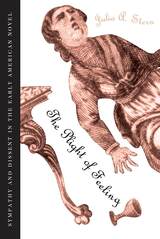 The Plight of Feeling: Sympathy and Dissent in the Early American Novel
Julia A. Stern
University of Chicago Press, 1997 American novels written in the wake of the Revolution overflow with self-conscious theatricality and impassioned excess. In The Plight of Feeling, Julia A. Stern shows that these sentimental, melodramatic, and gothic works can be read as an emotional history of the early republic, reflecting the hate, anger, fear, and grief that tormented the Federalist era.
Stern argues that these novels gave voice to a collective mourning over the violence of the Revolution and the foreclosure of liberty for the nation's noncitizens—women, the poor, Native and African Americans. Properly placed in the context of late eighteenth-century thought, the republican novel emerges as essentially political, offering its audience gothic and feminized counternarratives to read against the dominant male-authored accounts of national legitimation.
Drawing upon insights from cultural history and gender studies as well as psychoanalytic, narrative, and genre theory, Stern convincingly exposes the foundation of the republic as an unquiet crypt housing those invisible Americans who contributed to its construction.
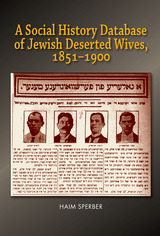 The Plight of Jewish Deserted Wives, 1851–1900: A Social History of East European Agunah
Haim Sperber
Sussex Academic Press, 2023 An exploration of the plight of a diverse range of Jewish women prevented from remarrying in nineteenth-century Eastern Europe.
Agunot are women who are not allowed to remarry according to Jewish law, which holds that a woman can only be released from marriage under specific conditions. The Agunah phenomenon was a major concern for East European Jewry in the nineteenth century and features prominently in Hebrew and Yiddish media and fiction.
This book identifies seven variations of Agunot in nineteenth-century Eastern Europe: deserted wives, women who refused to receive or were not granted a divorce writ, known as a Get; widowed women whose brothers-in-law refused to grant them permission to remarry; women whose husbands’ remains were not found, women who received improperly or incorrectly written Gets; women whose husbands became mentally ill and were not competent to grant a Get; and women refused a Get by husbands who had converted to Christianity or Islam. The book then explores the reasons for desertion and the plight of the left-alone wife. Key to that examination is the change from a legal issue to a social one, spurred by changes in attitudes to philanthropy and public opinion. A statistical database of about five thousand identified Agunot is available in a separate companion volume.
A Plot of Her Own: The Female Protagonist in Russian Literature
Sona Stephan Hoisington
Northwestern University Press, 1995 A Plot of Her Own presents compelling new readings of major texts in the Russian literary canon, all of which are readily available in translation. The female protagonists in the works examined are inextricably linked with the fundamental issues raised by the novels they inform; the interpretations offered strive not to be reductive or doctrinaire, not to be imposed from the outside but to arise from the texts themselves and the historical circumstances in which they were written. Authors discussed include Pushkin, Dostoevsky, Tolstoy, and Bulgakov, and the novels considered range from Fathers and Children to Zamyatin's anti-Utopian We. Throughout, the contributors new visions expand our understanding of the words and reveal new significance in them.
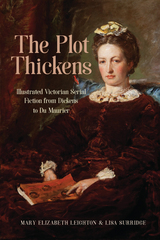 The Plot Thickens: Illustrated Victorian Serial Fiction from Dickens to du Maurier
Mary Elizabeth Leighton
Ohio University Press, 2018 In the early 1800s, books were largely unillustrated. By the 1830s and 1840s, however, innovations in wood- and steel-engraving techniques changed how Victorian readers consumed and conceptualized fiction. A new type of novel was born, often published in serial form, one that melded text and image as partners in meaning-making. These illustrated serial novels offered Victorians a reading experience that was both verbal and visual, based on complex effects of flash-forward and flashback as the placement of illustrations revealed or recalled significant story elements. Victorians’ experience of what are now canonical novels thus differed markedly from that of modern readers, who are accustomed to reading single volumes with minimal illustration. Even if modern editions do reproduce illustrations, these do not appear as originally laid out. Modern readers therefore lose a crucial aspect of how Victorians understood plot—as a story delivered in both words and images, over time, and with illustrations playing a key role. In The Plot Thickens, Mary Elizabeth Leighton and Lisa Surridge uncover this overlooked narrative role of illustrations within Victorian serial fiction. They reveal the intricacy and richness of the form and push us to reconsider our notions of illustration, visual culture, narration, and reading practices in nineteenth-century Britain.
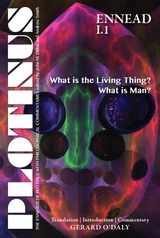 PLOTINUS Ennead I.1: What is the Living Thing? What is Man?: Translation with an Introduction and Commentary
Gerard O'Daly
Parmenides Publishing, 2017
Ennead I.1 is a succinct and concentrated analysis of key themes in Plotinus' psychology and ethics. It focuses on the soul-body relation, discussing various Platonic, Aristotelian, and Stoic views before arguing that there is only a soul-trace in the body (forming with the body a “compound”), while the reasoning soul itself is impassive and flawless. The soul-trace hypothesis is used to account for human emotions, beliefs, and perceptions, and human fallibility in general. Its problematic relation to our rational powers, as well as the question of moral responsibility, are explored. Plotinus develops his original and characteristic concept of the self or “we,” which is so called because it is investigated as something common to all humans (rather than a private individual self), and because it is multiple, referring to the reasoning soul or to the “living thing” composed of soul-trace and body. Plotinus explores the relation between the “we” and consciousness, and also its relation to the higher metaphysical entities, the Good, and Intellect.
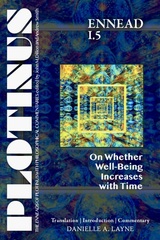 Plotinus Ennead I.5: On Whether Well-Being Increases with Time: Translation with an Introduction and Commentary
Danielle A. Layne
Parmenides Publishing, 2023 In Ennead I.5 Plotinus attempts to navigate a well-trodden path of inquiry by directly responding to a wide spectrum of popular theories on human flourishing, and insisting emphatically that well-being belongs to the present moment. Indeed, Aristotle—with his insistence that well-being be measured by “a complete life” (Nicomachean Ethics 1098a16–20) or a life measured by virtue, a modus vivendi sustained via the development of appropriate habits (hexis) and the avoidance of misfortunes—is one of Plotinus’ central targets. Nevertheless, it is also obvious that the Hellenistic schools, with their almost evangelical insistence that happiness is available to practitioners in the immediacy of the “now,” take pride of place in Plotinus’ short treatise on the subject. Layne analyzes in depth Plotinus’ unique conception of the value of the present moment by highlighting his dialogue with Aristotle and Hellenistic conceptions of the soul, pleasure and pain, time and eternity, and so forth.
 Plotinus Ennead I.8: On the Nature and Source of Evil: Translation with an Introduction and Commentary
Anne Sheppard
Parmenides Publishing, 2025 Ennead I.8 was written not long before Plotinus’ death in 270 AD, at a time when he was particularly concerned with ethical issues. The treatise’ primary purpose is to argue that evil is not intrinsic to the soul, but since Plotinus always considers ethical issues within a metaphysical framework, it includes an account of the ontological status of matter. Plotinus does his best to preserve a belief in the dependence of all things on a single, supremely good First Principle while admitting that there is evil in the world. He offers a subtle account of the origin of evil in the soul as caused not by either the soul or matter on its own but by the combination of the two. Sheppard shows how Plotinus is responding to ideas found in Plato, Aristotle, the Stoics, and Middle Platonism as well as to the challenge presented by Gnosticism, and argues that the views expressed in I.8 are not inconsistent with what Plotinus has to say about matter and its generation elsewhere. She further considers the criticisms of Plotinus’ views put forward by Proclus and concludes that, despite its weaknesses, Plotinus’ account remains an ingenious attempt to defend monism and the essential goodness of the soul while recognizing the existence of evils.
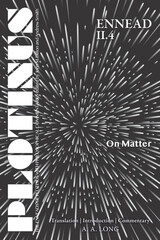 Plotinus Ennead II.4: On Matter: Translation with an Introduction and Commentary
A.A. Long
Parmenides Publishing, 2022 In Ennead II.4 Plotinus investigates the question of what underlies the forms that constitute the contents of our minds and senses. Aristotle had called this substrate “matter,” and Stoic philosophers followed suit. With a critical review of their notions, and reference to Plato’s so-called Receptacle, Plotinus develops an account of matter that makes it a supremely negative entity. How he describes the indescribable, and how he justifies incorporeal matter’s indispensability to bodies, are highlights of this tenaciously argued essay. A. A. Long translates and interprets Plotinus’ treatise on the matter that underlies all physical and intelligible beings. With a wide-ranging introduction and probing analysis of details, he explains the intricate structure of the text. The book will appeal to everyone interested in the history of Platonism and ancient Greek theories of the world’s ultimate principles.
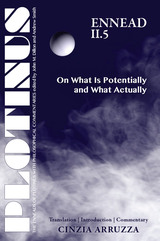 PLOTINUS: Ennead II.5: On What Is Potentially and What Actually: Translation with an Introduction and Commentary
Cinzia Arruzza
Parmenides Publishing, 2015 The term dunamis (potentiality) entered into the philosophical vocabulary with Plato, but it was with Aristotle that it acquired, together with energeia (actuality), the strong technical meaning that the two terms have maintained, with variations, throughout subsequent philosophical tradition. The significance of the notions of actuality and potentiality in Plotinus’ thought can hardly be overstated. Throughout the Enneads, they are crucial to understanding the specific causality of intelligible realities and the relation of participation between intelligible and sensible realms. In Ennead II.5, Plotinus for the first time provides a systematic clarification of his peculiar use of these terms, through a sustained revision of Aristotle’s own elaboration of the topic and of his terminology. The treatise discusses the different meanings of potentiality and actuality as well as the way each of them applies or does not apply to the sensible realm, to the intelligible realm, and to matter. While the structure of the text unfolds in a coherent and cohesive manner, Plotinus’ writing in this treatise is dense and at times dry in its technicality. The detailed commentary guides the reader step by step, making an otherwise particularly difficult text accessible.
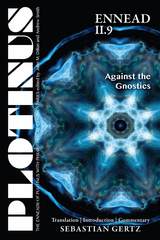 PLOTINUS Ennead II.9: Against the Gnostics: Translation, with an Introduction and Commentary
Sebastian Gertz
Parmenides Publishing, 2017 How was the universe created, and what is our place within it? These are the questions at the heart of Plotinus’ Against the Gnostics. For the Gnostics, the universe came into being as a result of the soul’s fall from intelligible reality—it is the evil outcome of a botched creation. Plotinus challenges this, and insists that the soul’s creation of the world is the necessary consequence of its contemplation of the ideal forms. While the Gnostics claim to despise the visible universe, Plotinus argues that such contempt displays their ignorance of the higher realities of which the cosmos is a beautiful image.
Against the Gnostics is a polemical text. It aims to show the superiority of Plotinus’ philosophy over that of his Gnostic rivals, and poses unique challenges: Plotinus nowhere identifies his opponents by name, he does not set out their doctrines in any great detail, and his arguments are frequently elliptical. The detailed commentary provides a guide through these difficulties, making Plotinus’ meandering train of thought in this important treatise accessible to the reader.
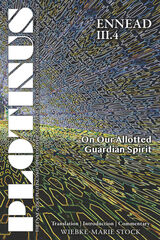 Plotinus Ennead III.4: On Our Allotted Guardian Spirit: Translation with an Introduction and Commentary
Wiebke-Marie Stock
Parmenides Publishing, 2020 On Our Allotted Guardian Spirit is a lively and at times perplexing text combining general reflections on the nature of the soul with a discussion of the phenomenon of a personal guardian spirit. Plotinus wants to interpret Plato, and aims to integrate Plato's various statements about daimones into one comprehensive theory. This leads to some views that are, if not exotic, then at least strange on first encounter. However, a closer reading reveals that Plotinus is not interested in demonology per se. Instead, the central concern of the treatise are ideas about the soul, the self, and self-consciousness. Plotinus' explorations produce a theory of the mind as the agent and activity responsible for a person’s ethical choices and conduct of life. The demon emerges as a philosophical tool passed down from Plato, but adapted and rationalized to try to explain motivation to action, the impulse toward the ethical life, and even the various differences in human ethical and psychological constitution. This innovative theory is a response to a strong and ongoing current of thought in the philosophical tradition.
The introduction offers an overview of ancient demonologies, starting with Homer and the Presocratics, and is followed by an in-depth examination of Plato, the Stoics, Plotinus, and later Neoplatonic developments. As such the book presents Plotinus’ specific rationalizing response to the idea of a guardian spirit in the context of ancient philosophical demonologies.
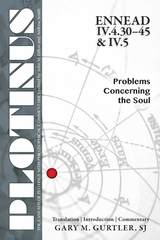 PLOTINUS Ennead IV.4.30-45 & IV.5: Problems Concerning the Soul: Translation, with an Introduction and Commentary
Gary M. Gurtler, SJ
Parmenides Publishing, 2015 Ennead IV.4.30–45 and IV.5 retrieves the unity in this last section of Plotinus’ treatise on Problems concerning the Soul. Combining translation with commentary, Gurtler enhances both the accuracy of the translation and the recovery of Plotinus’ often unsuspected originality. This is especially true for IV.5, where previous translations fail to convey the concise nature of his argument against both the Aristotelian and Platonic theories of vision. Plato and Aristotle each claim that vision depends on the light between the eye and the object, but Plotinus presents evidence that this is not the case and develops a novel theory of light as a second activity that moves from source to object directly, even arguing that color is in the light itself rather than merely a quality of the object. This theory of vision, in turn, depends on the nature of sympathy developed especially in IV.4.30–45, where Plotinus shows how action at a distance is both possible and necessary for the proper unity in diversity of the sensible cosmos.
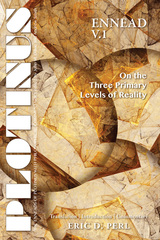 PLOTINUS Ennead V.1: On the Three Primary Levels of Reality: Translation, with an Introduction and Commentary
Eric D. Perl
Parmenides Publishing, 2015 Plotinus' Treatise V.1 comes closer than any other to providing an outline of his entire spiritual and metaphysical system, and as such it may serve to some degree as an introduction to his philosophy. It addresses in condensed form a great many topics to which Plotinus elsewhere devotes extended discussion, including the problem of the multiple self; eternity and time; the unity-in-duality of intellect and the intelligible; and the derivation of intelligible being from the One. Above all, it shows that the so-called “three hypostases”—soul, intellect, and the One—are best understood not as a sequence of three things additional to one another, but as three levels of possession of the same content, so that each lower level—soul in relation to intellect and intellect in relation to the One—is an “image” and “expression” of its superior. Plotinus exhorts the human soul to overcome its alienation from its own true nature and its divine origin by first recognizing itself as superior to the body and the same in kind as the animating principle of the entire cosmos, and then discovering within itself the still higher levels of reality from which it derives: intellect and, ultimately, the One or Good, the supreme first principle of all things. To do so the soul must redirect its attention inward and upward to become aware of the divinity which is always within it but from which it is distracted by the clamor of the senses.
Plotinus Ennead V.8: On Intelligible Beauty: Translation with an Introduction and Commentary
Andrew Smith
Parmenides Publishing, 2017 Plotinus’ Ennead V.8, originally part of a single work (with III.8, V.5, and II.9), provides the foundation for a positive view of the universe as an image of divine beauty against the Gnostic rejection of the world. Although it emphasizes the cosmic dimension of beauty, it is, as are most treatises of Plotinus, concerned with the individual soul. The notion that the artist has within him an idea of beauty that derives directly from the intelligible world in fact coincides with his theory that each one of us has access to Intellect through his or her own intellect. It is the exploitation of this theme that forms the central dynamic of the treatise, with its stress on our ability to "see" and be one with the intelligible world and its beauty.
PLOTINUS Ennead VI.4 and VI.5: On the Presence of Being, One and the Same, Everywhere as a Whole: Translation with an Introduction and Commentary
Eyjólfur K. Emilsson
Parmenides Publishing, 2015 Ennead VI.4-5, originally written as a single treatise, contains Plotinus’ most general and sustained exposition of the relationship between the intelligible and the sensible realms, addressing and coalescing two central issues in Platonism: the nature of the soul-body relationship and the nature of participation. Its main question is, How can soul animate bodies without sharing their extension? The treatise seems to have had considerable impact: it is much reflected in Porphyry’s important work, Sententiae, and the doctrine of reception according to the capacity of the recipient, for which this treatise is the main source, resonated in medieval thinkers.
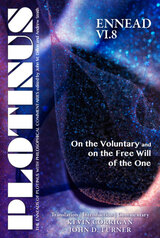 PLOTINUS Ennead VI.8: On the Voluntary and on the Free Will of the One: Translation, with an Introduction, and Commentary
Kevin Corrigan
Parmenides Publishing, 2017 Ennead VI.8 gives us access to the living mind of a long dead sage as he tries to answer some of the most fundamental questions we in the modern world continue to ask: are we really free when most of the time we are overwhelmed by compulsions, addictions, and necessities, and how can we know that we are free? Can we trace this freedom through our own agency to the gods, to the Soul, Intellect, and the Good? How do we know that the world is meaningful and not simply the result of chance or randomness?
Plotinus’ On the Voluntary and on the Free Will of the One is a groundbreaking work that provides a new understanding of the importance and nature of free human agency. It articulates a creative idea of agency and radical freedom by showing how such terms as desire, will, self-dependence, and freedom in the human ethical sphere can be genuinely applied to Intellect and the One while preserving the radical inability of all metaphysical language to express anything about God or gods.
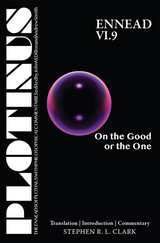 Plotinus Ennead VI.9: On the Good or the One: Translation with an Introduction and Commentary
Stephen R. L. Clark
Parmenides Publishing, 2020 This early treatise is placed by Plotinus’ editor at the very end of the Enneads, as the culmination of his thought, matching Plotinus’ own last recorded instruction, “to bring the god in you back to the god in the all.” It is a cosmological sketch, arguing that the being of anything depends on its being unified by its orientation to its own good, and so also the being of Everything, the All. The One, or the Good, is at once the goal of all things both individually and collectively, and also the transcendent source of all that we experience, mediated through an intelligible order. But it is also, and perhaps more importantly, intended as a guide to the proper education and discipline of our own motives and experience. We are encouraged to put aside immediate sensory data, egoistic prejudice and sensual impulse, first to grasp at least a little of the intelligible order within which we all live, and at last to purge even those last intellectual attachments and experience what cannot be adequately described: the unity of being.
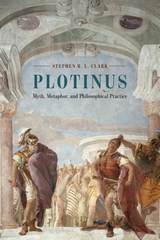 Plotinus: Myth, Metaphor, and Philosophical Practice
Stephen R. L. Clark
University of Chicago Press, 2016 Plotinus, the Roman philosopher (c. 204-270 CE) who is widely regarded as the founder of Neoplatonism, was also the creator of numerous myths, images, and metaphors. They have influenced both secular philosophers and Christian and Muslim theologians, but have frequently been dismissed by modern scholars as merely ornamental. In this book, distinguished philosopher Stephen R. L. Clark shows that they form a vital set of spiritual exercises by which individuals can achieve one of Plotinus’s most important goals: self-transformation through contemplation.
Clark examines a variety of Plotinus’s myths and metaphors within the cultural and philosophical context of his time, asking probing questions about their contemplative effects. What is it, for example, to “think away the spatiality” of material things? What state of mind is Plotinus recommending when he speaks of love, or drunkenness, or nakedness? What star-like consciousness is intended when he declares that we were once stars or are stars eternally? What does it mean to say that the soul goes around God? And how are we supposed to “bring the god in us back to the god in all”? Through these rich images and structures, Clark casts Plotinus as a philosopher deeply concerned with philosophy as a way of life.
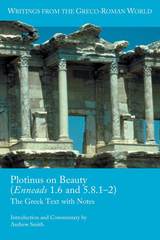 Plotinus on Beauty (Enneads 1.6 and 5.8.1–2): The Greek Text with Notes
Andrew Smith
SBL Press, 2019 A Greek edition of Plotinus's philosophical works with notes for students of Classical Greek
Plotinus, the father of Neoplatonism, composed the treatise On Beauty (Ennead 1.6) as the first of a series of philosophical essays devoted to interpreting and elucidating Platonic ideas. This treatise is one of the most accessible and influential of Plotinus's works, and it provides a stimulating entrée into the many facets of his philosophical activity. In this volume Andrew Smith first introduces readers to the Greek of Plotinus and to his philosophy in general, then provides the Greek text of and English notes on Plotinus's systematic argument and engaging exhortation to foster the inner self. The volume ends with the text of and notes on Plotinus's complementary statements in On Intelligible Beauty (Ennead 5.8.1–2).
Features:
- An overview of Plotinus's life
- Background discussion of Plotinus's thought and outline of his philosophical system
- Analysis of the relationship of Plotinus's thought to Plato’s
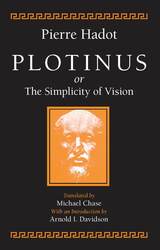 Plotinus or the Simplicity of Vision
Pierre Hadot
University of Chicago Press, 1993 The most penetrating and thorough account available of the work of ancient philosopher Plotinus, from the world's leading expert on his thought
Pierre Hadot's lively philosophical portrait of Plotinus is the preeminent introduction to the man and his thought. Michael Chase's lucid translation—complete with a useful chronology and analytical bibliography—at last makes this book available to the English-speaking world.
Hadot carefully examines Plotinus's views on the self, existence, love, virtue, gentleness, and solitude. He shows that Plotinus, like other philosophers of his day, believed that Plato and Aristotle had already articulated the essential truths; for him, the purpose of practicing philosophy was not to profess new truths but to engage in spiritual exercises so as to live philosophically. Seen in this light, Plotinus's counsel against fixation on the body and all earthly matters stemmed not from disgust or fear, but rather from his awareness of the negative effect that bodily preoccupation and material concern could have on spiritual exercises.
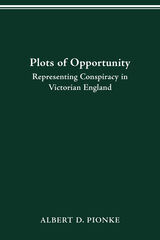 PLOTS OF OPPORTUNITY: REPRESENTING CONSPIRACY IN VICTORIAN ENGLAND
Albert D. Pionke
Ohio State University Press, 2004 The working classes, colonial subjects, European nationalists, and Roman Catholics—these groups generated intense anxiety for Victorian England’s elite public, which often responded by accusing them of being dangerous conspirators. Bringing together a wide range of literary and historical evidence, Albert D. Pionke argues that the pejorative meanings attached to such opportunistic accusations of conspiracy were undermined by the many valorized versions of secrecy in Victorian society. After surveying England’s evolving theories of representative politics and individual and collective secretive practices, Pionke traces the intersection of democracy and secrecy through a series of case histories. Using works by Thomas Carlyle, Wilkie Collins, Charles Dickens, Benjamin Disraeli, John Henry Newman, and others, along with periodicals, histories, and parliamentary documents of the period, he shows the rhetorical prominence of groups such as the Freemasons, the Thugs, the Carbonari, the Fenians, and the Jesuits in Victorian democratic discourse. By highlighting the centrality of representations of conspiracy in every case, Plots of Opportunity shows for the first time the markedly similar strategies of repression, resistance, and concealment used by competing agents in the democracy debate.
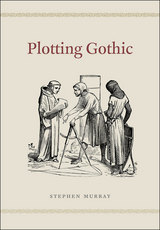 Plotting Gothic
Stephen Murray
University of Chicago Press, 2015 A historian of medieval art and architecture with a rich appreciation of literary studies, Stephen Murray brings all those fields to bear on a new approach to understanding the great Gothic churches of the twelfth and thirteenth centuries.
Plotting Gothic positions the rhetoric of the Gothic as a series of three interlocking plots: a spatial plot tied to the material construction of the churches, a social plot stemming from the collaborative efforts that made Gothic output possible, and a rhetorical plot involving narratives that treat the churches as objects of desire. Drawing on the testimony of three witnesses involved in church building—Abbot Suger of Saint-Denis, Gervase of Canterbury, and the image maker Villard de Honnecourt—and a range of secondary sources, Murray traces common patterns in the way medieval buildings were represented in words and images. Our witnesses provide vital information about the way the great churches of Gothic were built and the complexity of their meanings. Taking a fresh approach to Gothic architecture, Plotting Gothic offers an invigorating new way to understand some of the most lasting achievements of the medieval era.
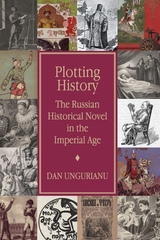 Plotting History: The Russian Historical Novel in the Imperial Age
Dan Ungurianu
University of Wisconsin Press, 2007 Balanced precariously between fact and fiction, the historical novel is often viewed with suspicion. Some have attacked it as a mongrel form, a “bastard son” born of “history’s flagrant adultery with imagination.” Yet it includes some of the most celebrated achievements of Russian literature, with Alexander Pushkin, Nikolai Gogol, Leo Tolstoy, and scores of other writers contributing to this tradition.
Dan Ungurianu’s Plotting History traces the development of the Russian historical novel from its inception in the romantic era to the emergence of Modernism on the eve of the Revolution. Organized historically and thematically, the study is focused on the cultural paradigms that shaped the evolution of the genre and are reflected in masterpieces such as The Captain’s Daughter and War and Peace. Ungurianu examines the variety of approaches by which Russian writers combined fact with fiction and explores the range of subjects that inspired the Russian historical imagination.
Outstanding Academic Title, Choice Magazine
“Ungurianu has produced a most valuable work for literary scholars.”—Andrew M. Drozd, Slavic and East European Journal
“[Ungurianu’s] overwhelming knowledge, impeccable documentation, erudite notes, and valuable addenda make for a treasure house of information and keen analysis. . . . Essential.”—Choice
Plough, Sword, and Book: The Structure of Human History
Ernest Gellner
University of Chicago Press, 1990 "Philosophical anthropology on the grandest scale. . . .Gellner has produced a sharp challenge to his colleagues and a thrilling book for the non-specialist. Deductive history on this scale cannot be proved right or wrong, but this is Gellner writing, incisive, iconoclastic, witty and expert. His scenario compels our attention."—Adam Kuper, New Statesman
"A thoughtful and lively meditation upon probably the greatest transformation in human history, upon the difficult problems it poses and the scant resources it has left us to solve them."—Charles Larmore, New Republic
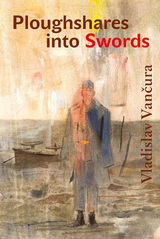 Ploughshares into Swords
Vladislav Vancura
Karolinum Press, 2021 The first English-language translation of a classic Czech antiwar novel written in the wake of WWI.
Originally published in 1925, Ploughshares into Swords is an expressionist antiwar novel in which Vladislav Vančura tells the story of the denizens of the Ouhrov estate in language as baroque as the manor that ties them all together. The fragmented narrative introduces the reader to such characters as Baron Danowitz, his sons, his French concubine, the farmhand František Hora, and the mentally disabled murderer Řeka in the autumn of 1913, before revealing their fates during World War I. Ranging from the peaceful farmlands of Bohemia to the battlefields of Galicia, taking in the pubs of Budapest and the hospitals of Krakow, the novel constitutes an unsentimental and naturalistic approach to the war that created Czechoslovakia. Ploughshares into Swords is a stunning novel by one of Czech literature’s most important writers. This modernist masterpiece, reminiscent of the work of Isaac Babel and William Faulkner, is now available in English for the very first time.
The Plow, the Hammer, and the Knout: An Economic History of Eighteenth-Century Russia
Arcadius Kahan
University of Chicago Press, 1985 In this extraordinary rich and subtle work, Arcadius Kahan analyzes a massive collection of documents which revise traditional interpretations of eighteenth-century Russian economic history. Kahan stresses economic rationality in the context of social constraints, offering the fullest and most convincing explanation yet of the economic foundations of Russia's power. He shows that what have been taken as major failings in the Russian economy were in fact resourceful and even ingenious methods of circumventing deeply rooted structural obstacles to change. Kahan also escapes two extremes that have bedeviled Russian historians since the nineteenth century: he avoids depicting the state as an autonomous structure that acted with impunity upon a passive society, and he refutes the notion of the state as a mere instrument for advancing selfish class interests.
Plowman's Folly and A Second Look
Edward H. Faulkner; Introduction by Paul B. Sears
Island Press, 1987 As the ruinous Dust Bowl settled in the early 1940s, agronomist Edward Faulkner dropped what Nature magazine termed "an agricultural bombshell" when he blamed the then universally used moldboard plow for disastrous pillage of the soil. Faulkner's assault on the orthodoxy of his day will stimulate today's farmers to seek out fresh solutions to the problems that plague modern American agriculture. Plowman's Folly is bound together here with its companion volume A Second Look.
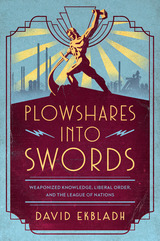 Plowshares into Swords: Weaponized Knowledge, Liberal Order, and the League of Nations
David Ekbladh
University of Chicago Press, 2022 An in-depth look at how the ideas formulated by the interwar League of Nations shaped American thinking on the modern global order.
In Plowshares into Swords, David Ekbladh recaptures the power of knowledge and information developed between World War I and World War II by an international society of institutions and individuals committed to liberal international order and given focus by the League of Nations in Geneva. That information and analysis revolutionized critical debates in a world in crisis. In doing so, Ekbladh transforms conventional understandings of the United States’ postwar hegemony, showing that important elements of it were profoundly influenced by ideas that emerged from international exchanges. The League’s work was one part of a larger transnational movement that included the United States and which saw the emergence of concepts like national income, gross domestic product, and other attempts to define and improve the standards of living, as well as new approaches to old questions about the role of government. Forged as tools for peace these ideas were beaten into weapons as World War II threatened. Ekbladh recounts how, though the US had never been a member of the organization, vital parts of the League were rescued after the fall of France in 1940 and given asylum at the Institute for Advanced Study in Princeton. However, this presence in the US is just one reason its already well-regarded economic analyses and example were readily mobilized by influential American and international figures for an Allied “war of ideas,” plans for a postwar world, and even blueprints for the new United Nations. How did this body of information become so valuable? As Ekbladh makes clear, the answer is that information and analysis themselves became crucial currencies in global affairs: to sustain a modern, liberal global order, a steady stream of information about economics, politics, and society was, and remains, indispensable.
|
|
